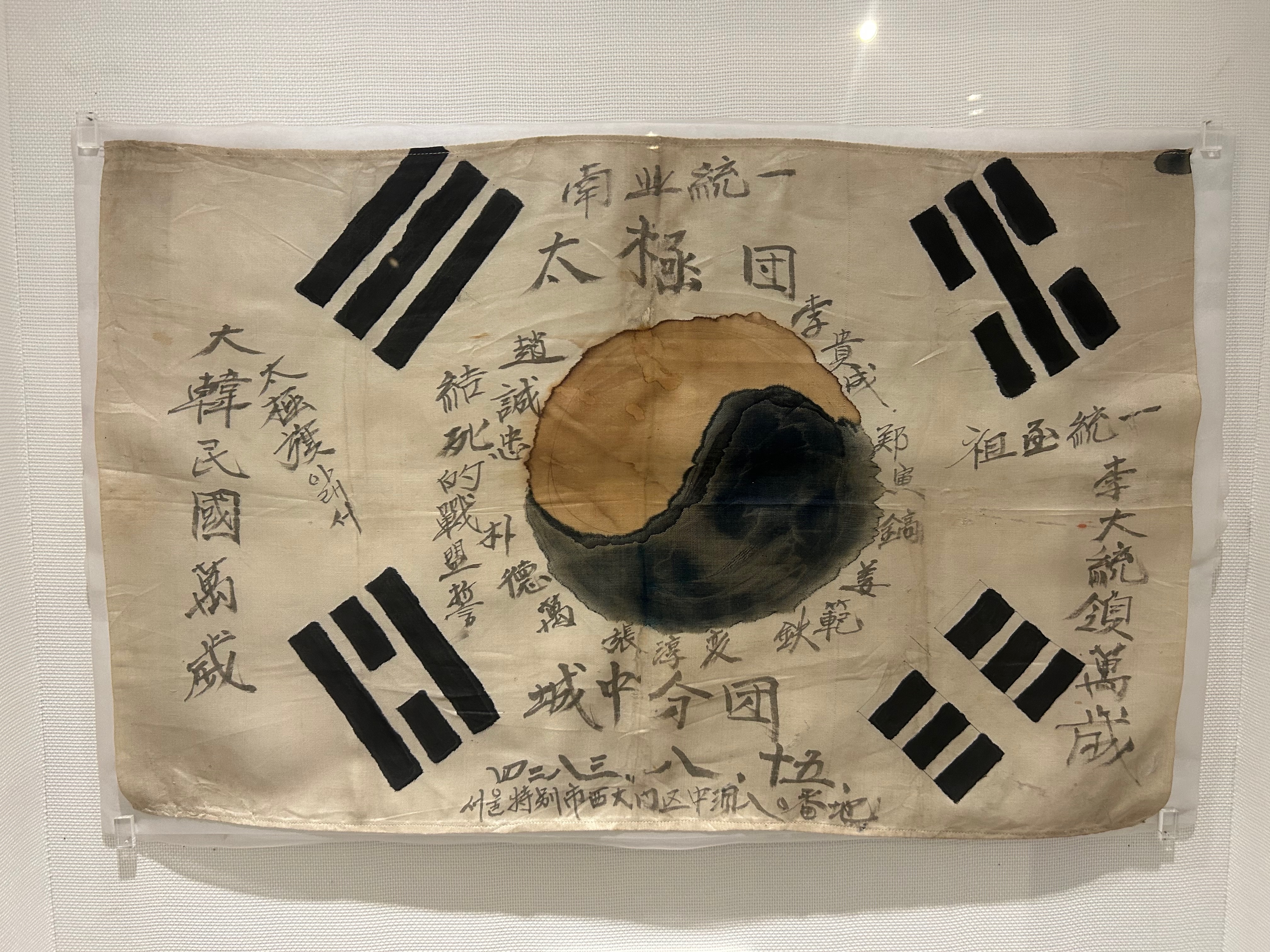
South Korea One Thousand Cows

I am finally in South Korea! It’s a country that really punches above its weight class, and there are so many cool things to learn and try!
Some aspects of my South Korea trip that I found really unique:
- Among the 3 East Asian countries, Korea has the highest GDP per capita in 2025 at $38k (Japan at $33k and China at $12k).
- Korea had 3 important dynasties. The second was called Goryeo, which gave Korea its modern name.
- Although originally Buddhist and Confucian, nearly 30% of the country is now Christian (American missionaries played a big role).
- South Korea’s population is relatively small at around 50M, while North Korea has 25M. In comparison, Japan has over 100M.
- There are signs in English and Chinese everywhere, and most museums are free, which is quite awesome.
- Seoul used to be called HanYang (汉城), but since the 1900s, the Chinese language and spelling got phased out.
Arriving in Seoul
I took the rails to get from the Incheon airport to MyeongDong 明洞,where I am staying.
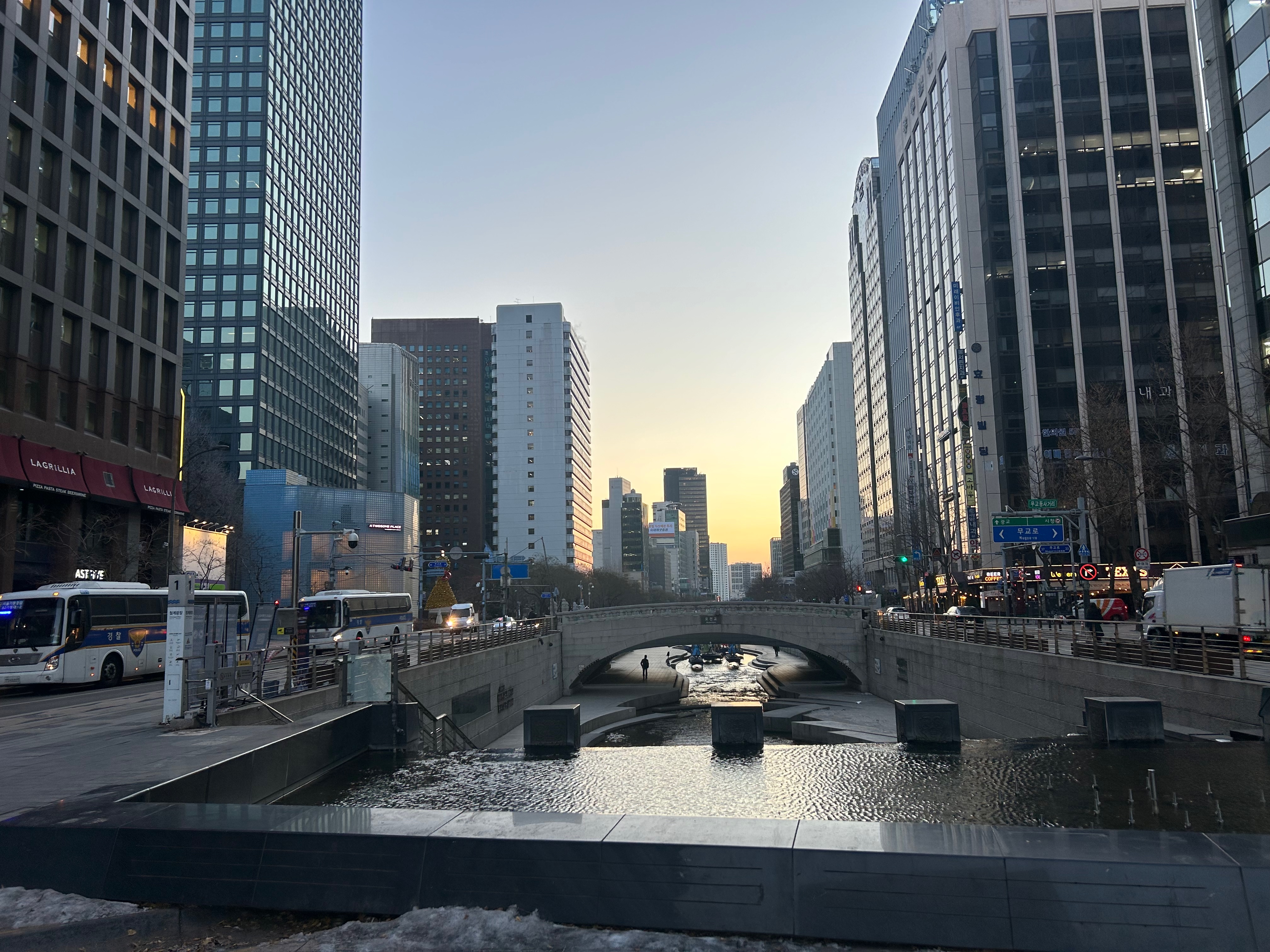
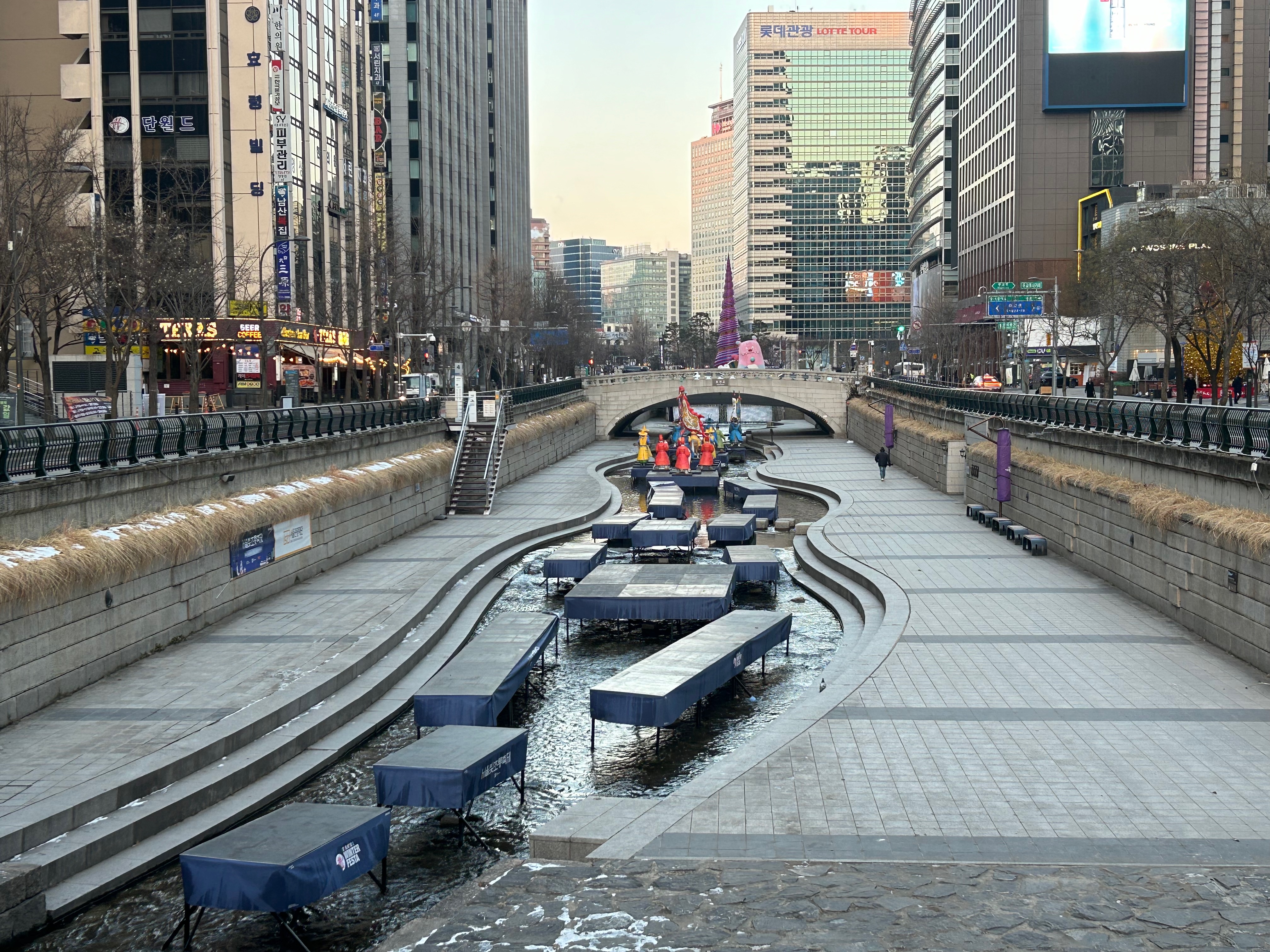 This river was central to people in the city, and was recently cleaned up.
This river was central to people in the city, and was recently cleaned up.
It was interesting to see that the airport train plays videos about Korea and Japan’s territorial disputes over the islands. It reminds me of a Western saying that all East Asians look the same, but for some reason, we all hate each other.
Seoul is a very modern city! There are numerous underground malls, not to mention a world-class subway system.
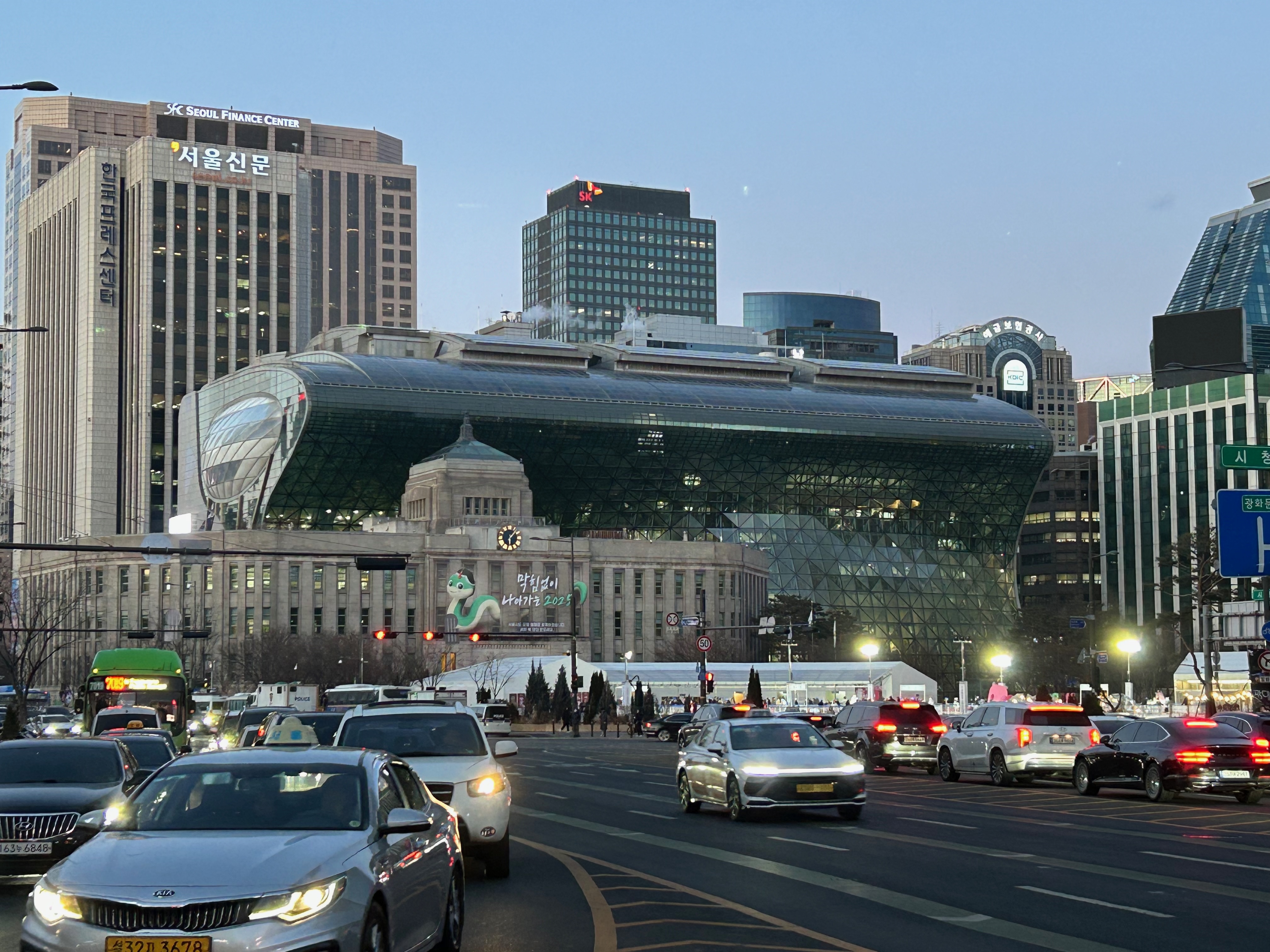
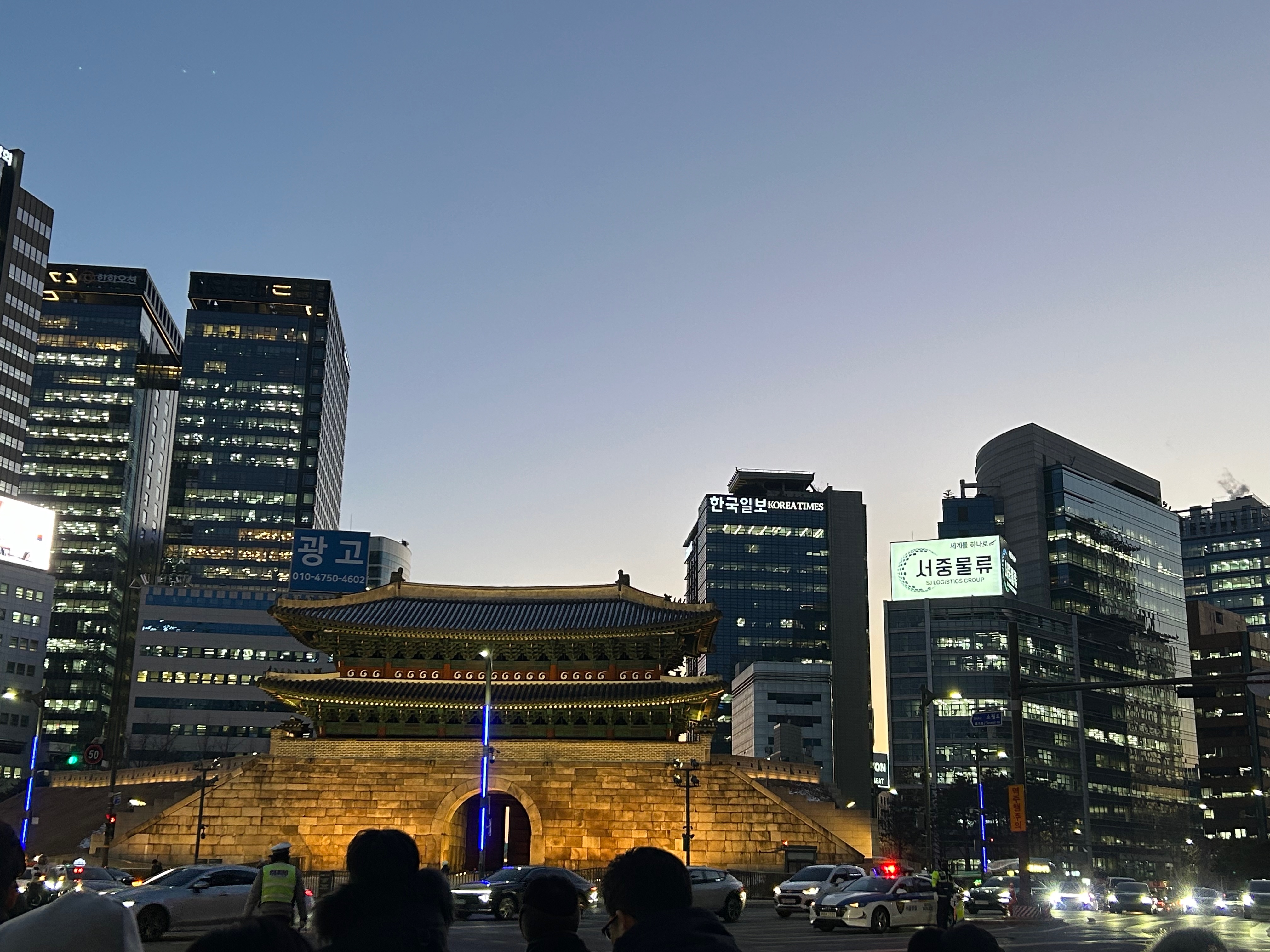 Left: Seoul’s modern cityhall is supposed to resemble an Ear, but locals call it a wave towering over the old Japanese government building; Right: South Gate (used to defend the city in the old days)
Left: Seoul’s modern cityhall is supposed to resemble an Ear, but locals call it a wave towering over the old Japanese government building; Right: South Gate (used to defend the city in the old days)
The architecture resembles other East Asian countries; I found the dedicated smoking lounges everywhere to be unique.
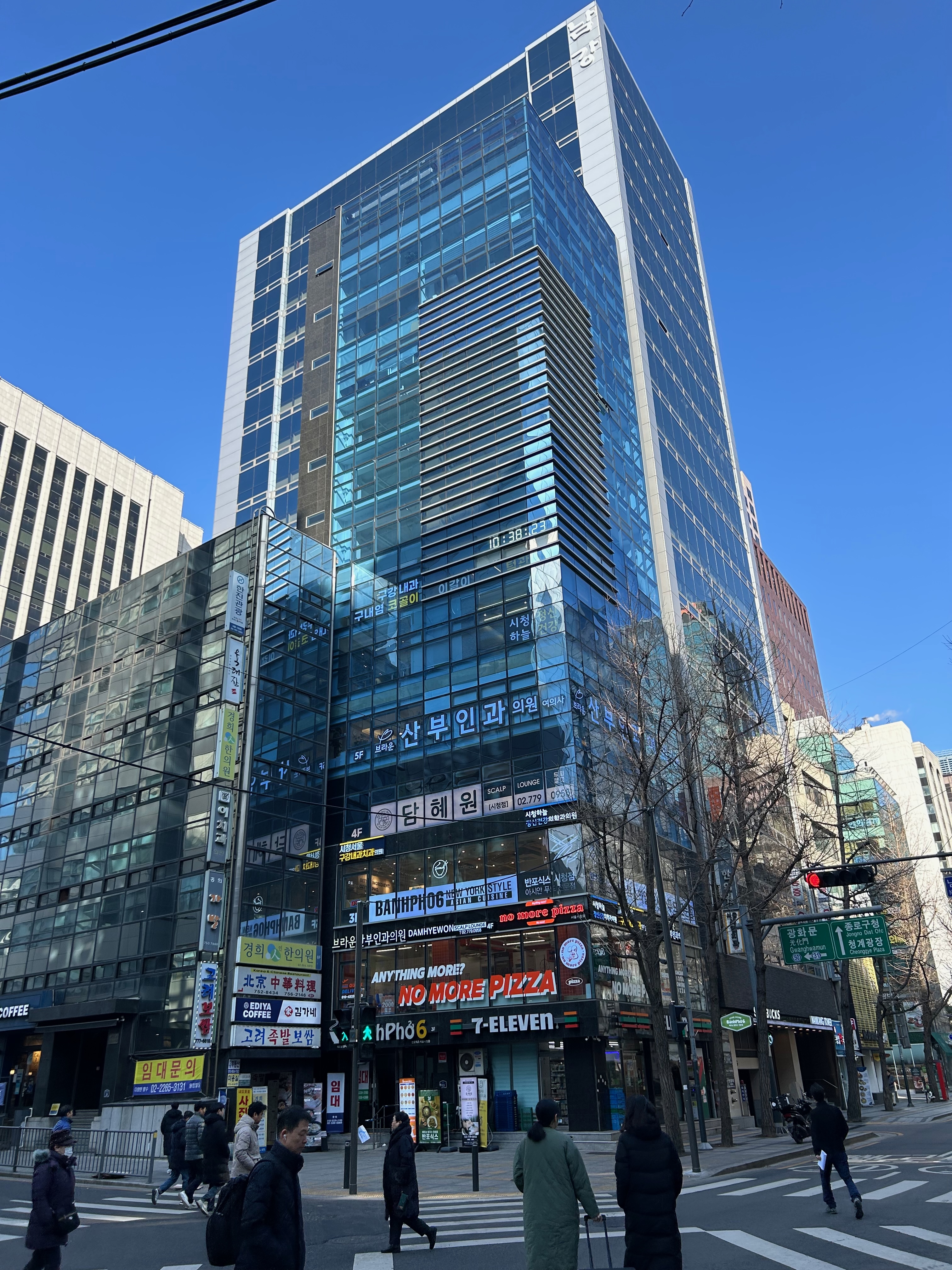
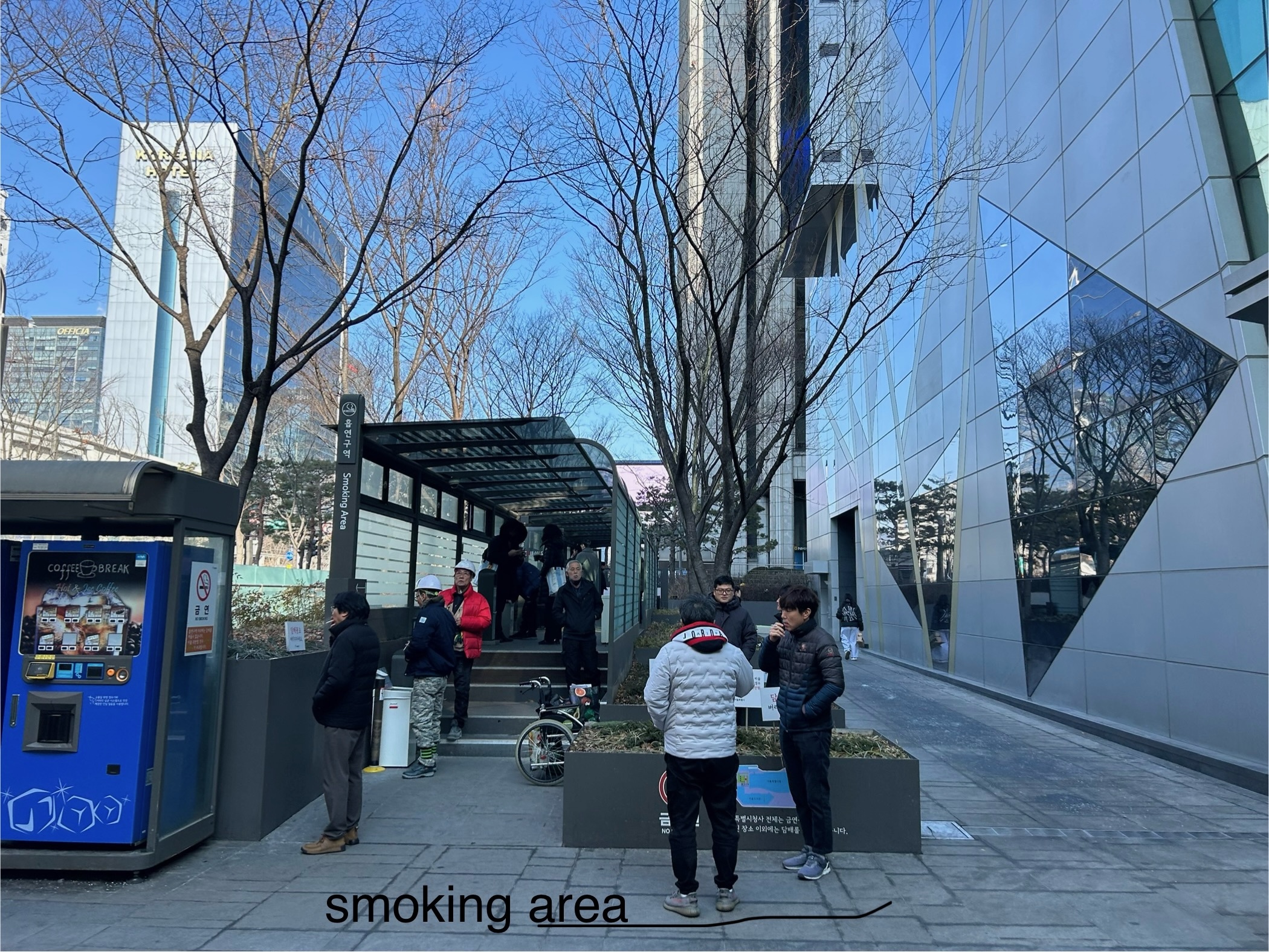
Walking Tour of the Old Gates
I participated in a walking tour the morning that I arrived. We walked across Seoul’s historical palaces, and learned about the history.
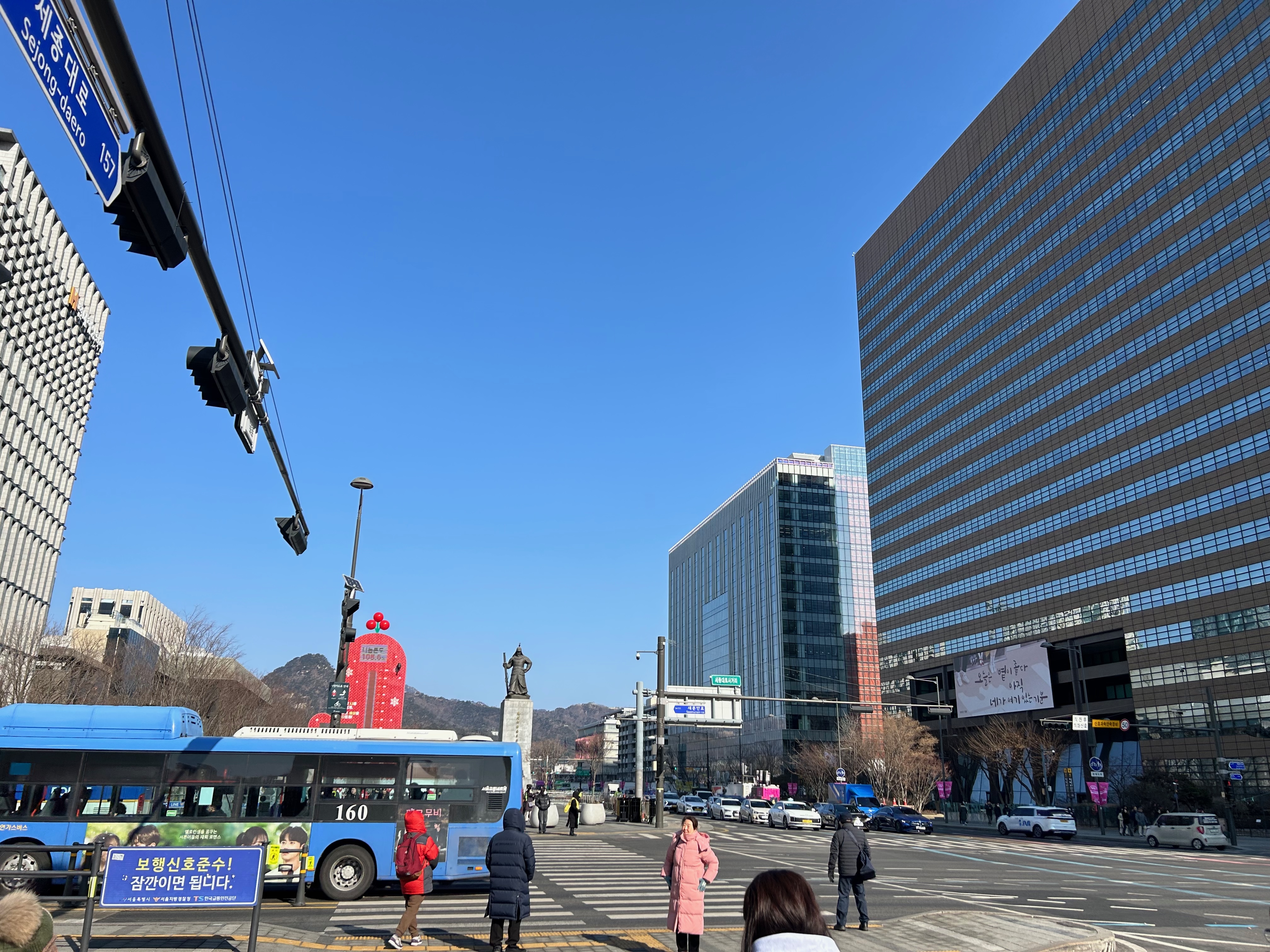
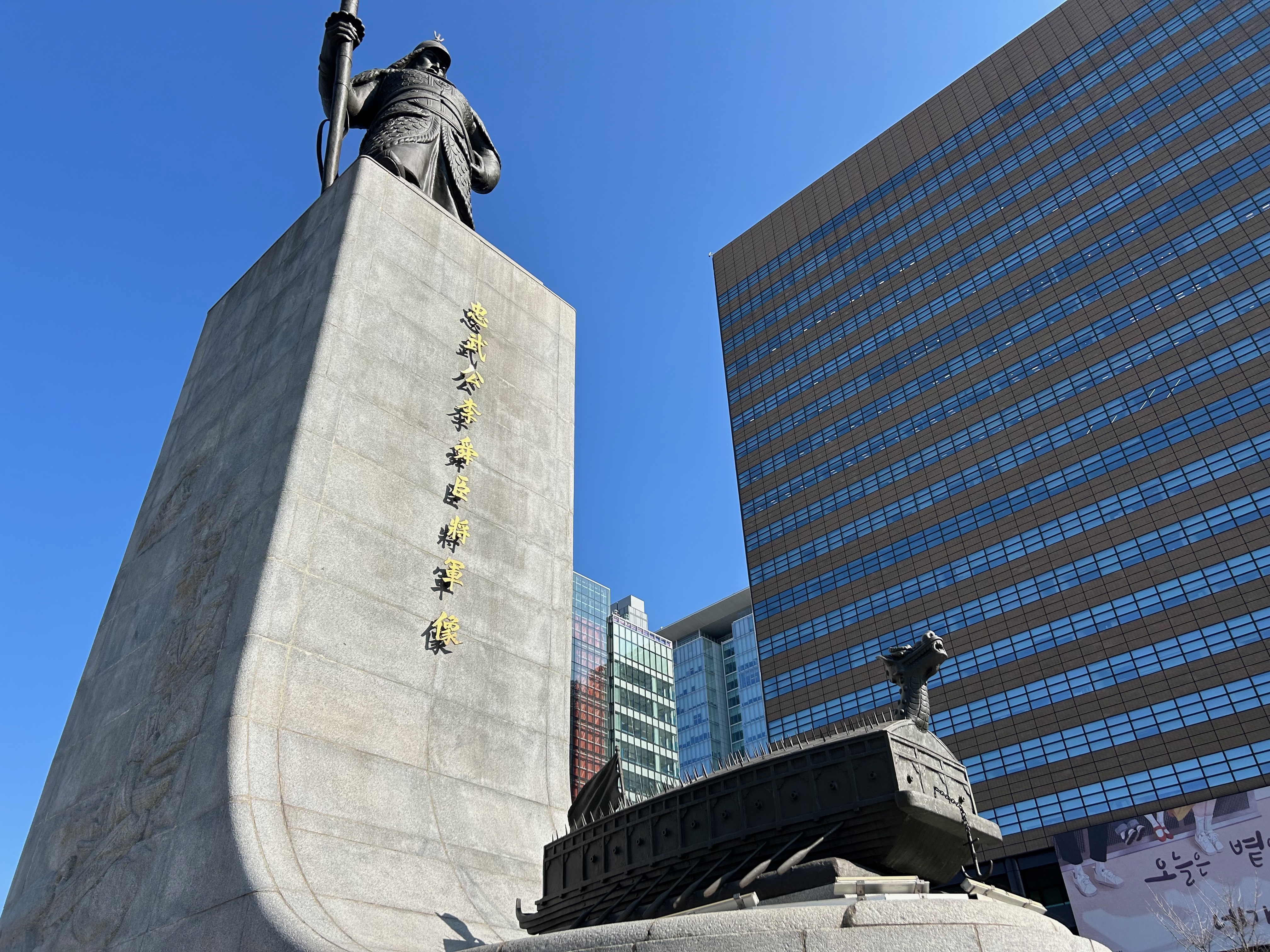 Right: Famous general who defended against Japan’s pirates
Right: Famous general who defended against Japan’s pirates
The Joseon Dynasty’s (1392-1910) first emperor was famous for inventing the Korean alphabet system, although Chinese was still used everywhere for writing until the early 1900s (all the old poems and treaties are in Chinese).
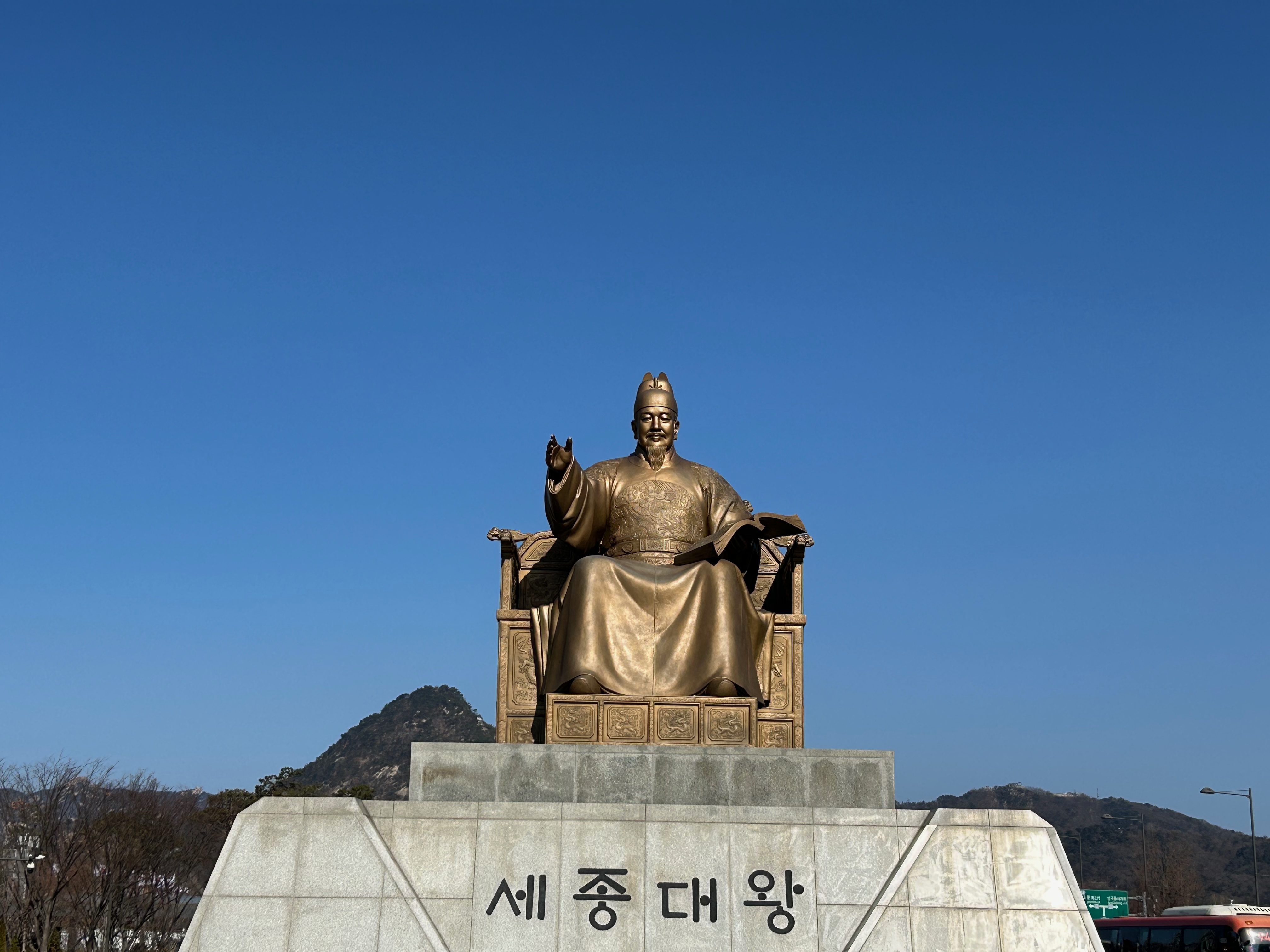
While visiting the palace, we learned that it was destroyed many times throughout history by the Japanese and during the Korean War. This is a recreation (although slightly smaller) than the historical ones.
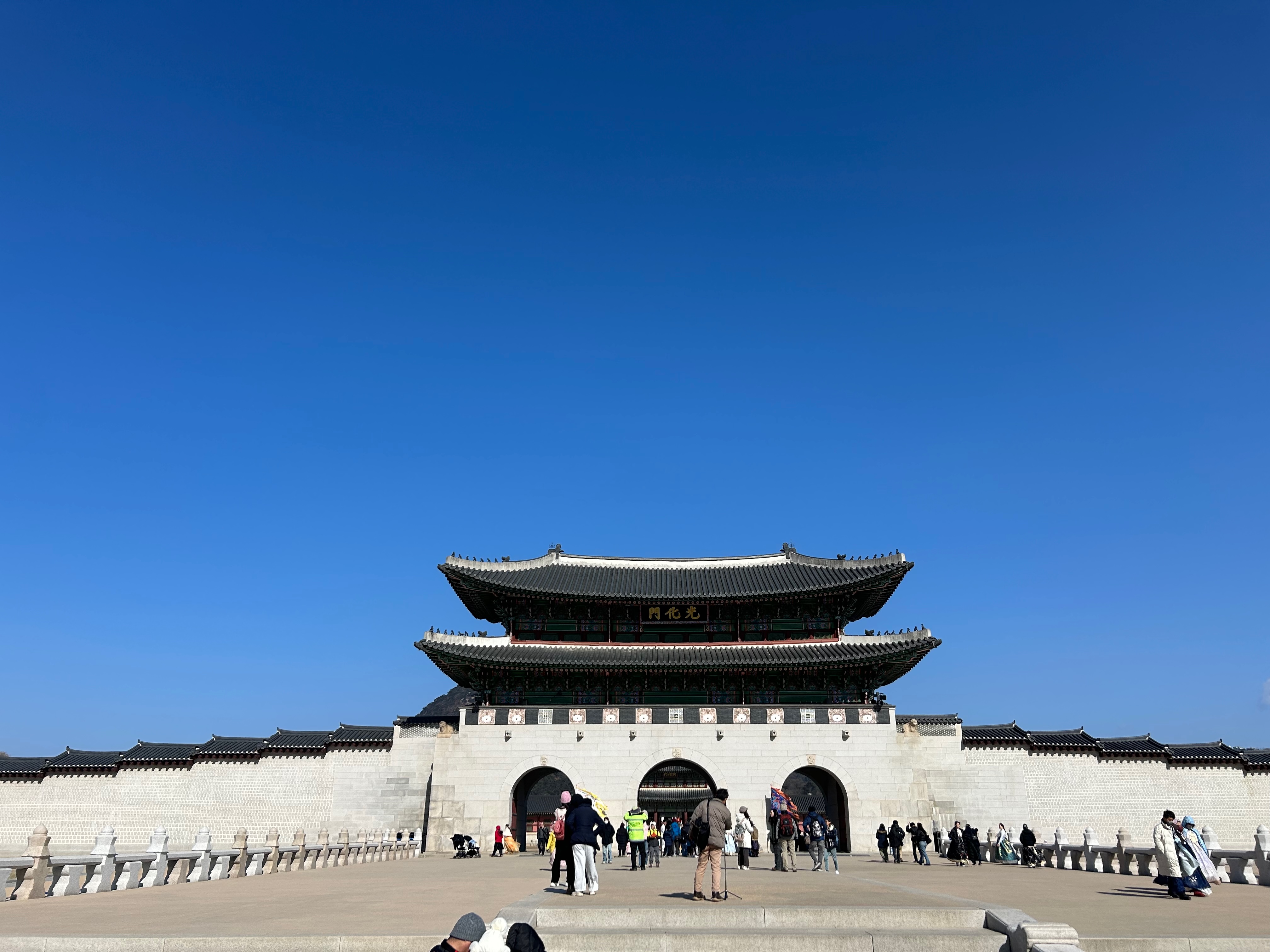
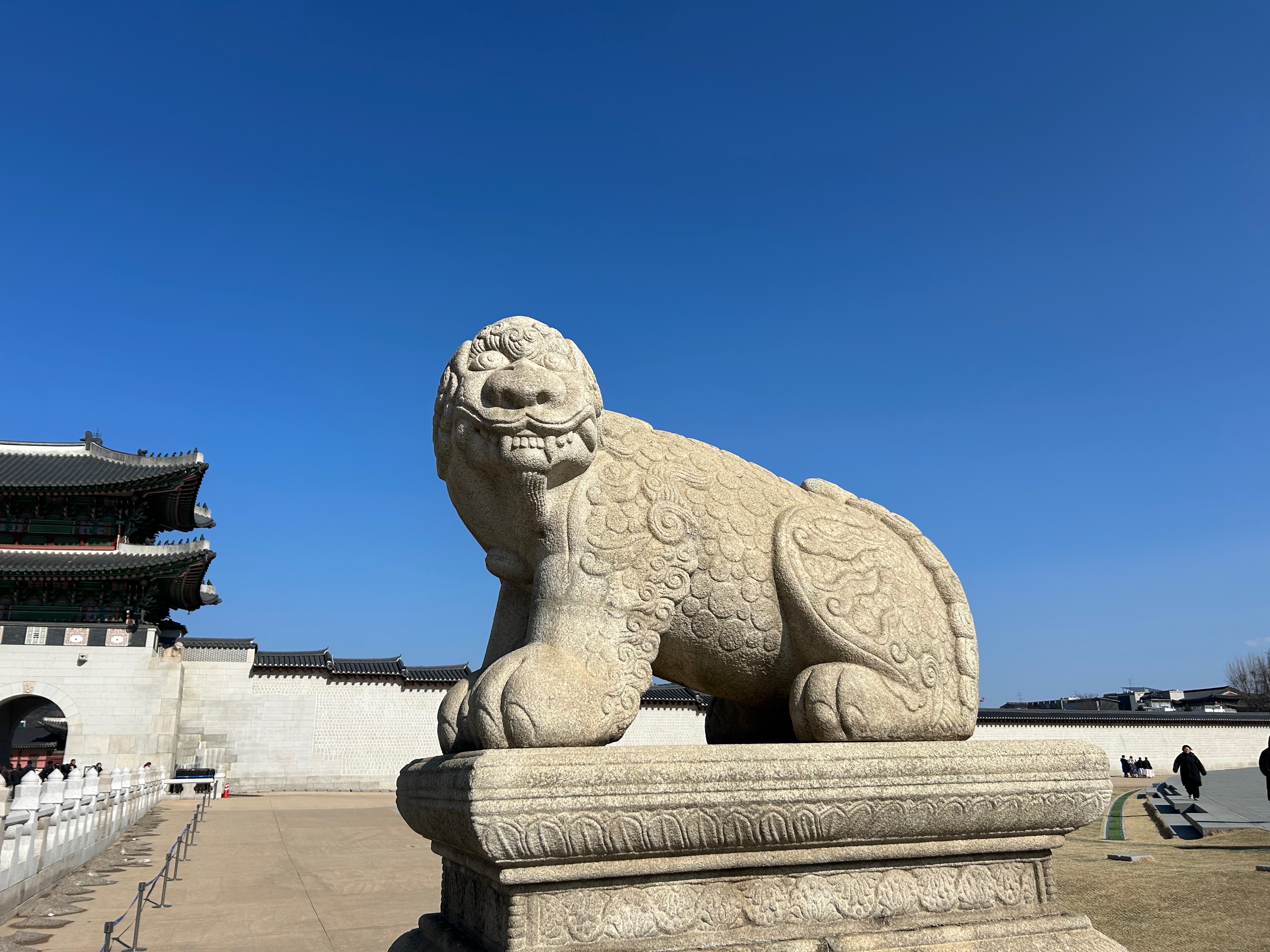 Right: the spirit animal of the Korean people using the turtle ship
Right: the spirit animal of the Korean people using the turtle ship
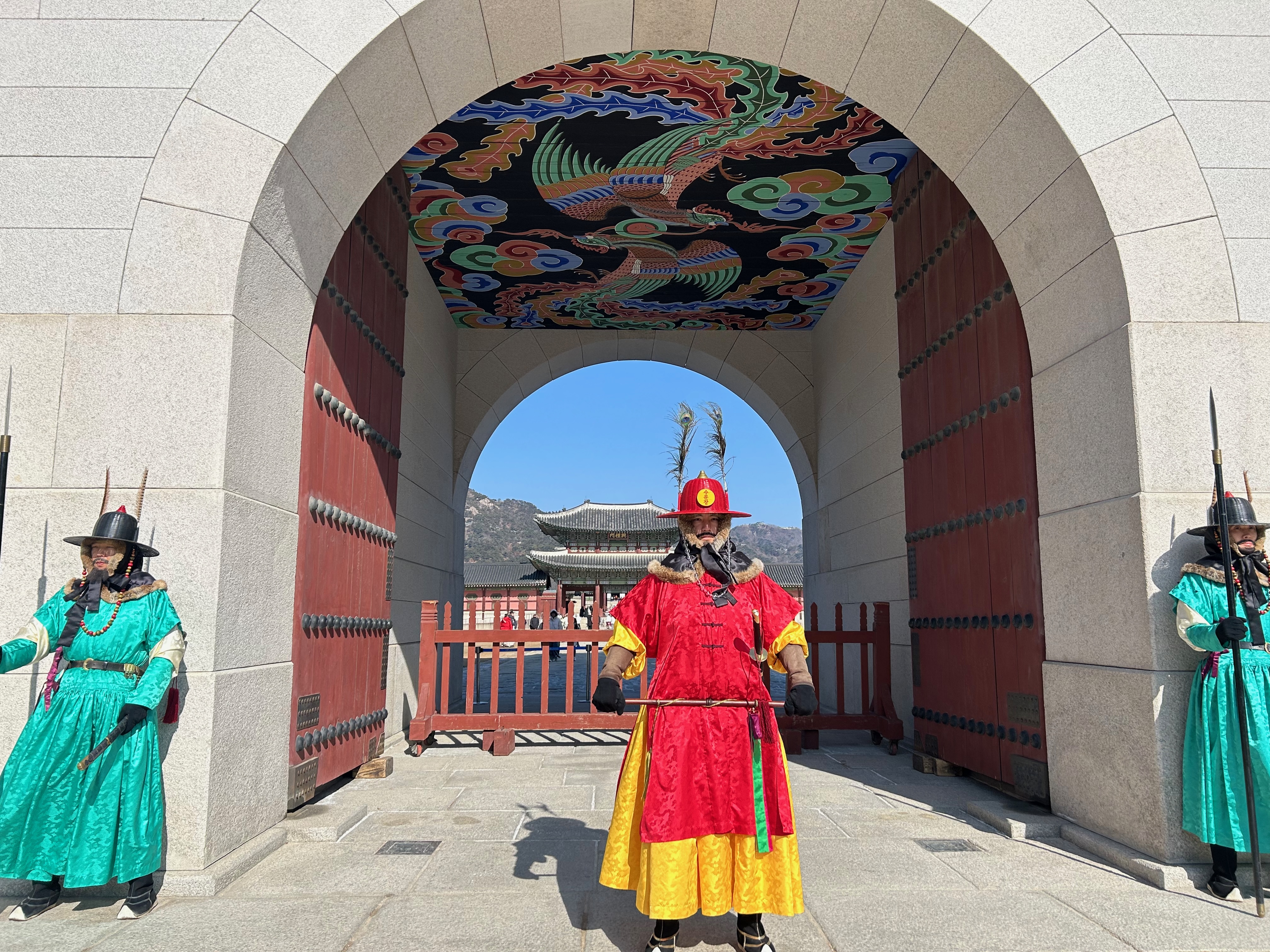
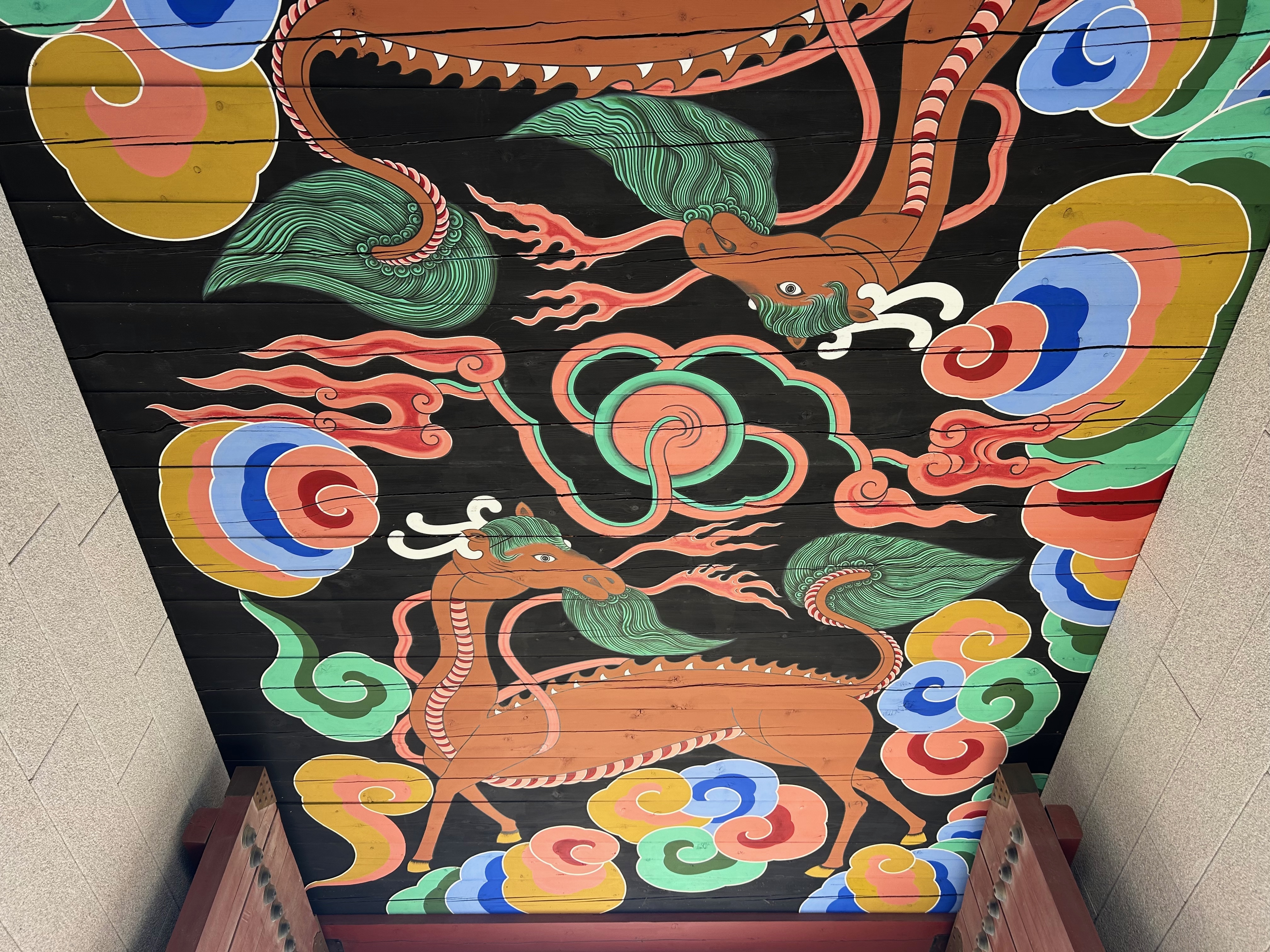 Left: Guards; Right: Ceiling of the gate
Left: Guards; Right: Ceiling of the gate
There are many Hanboks being worn, because the entrance fee is waived if you wear traditional clothing.
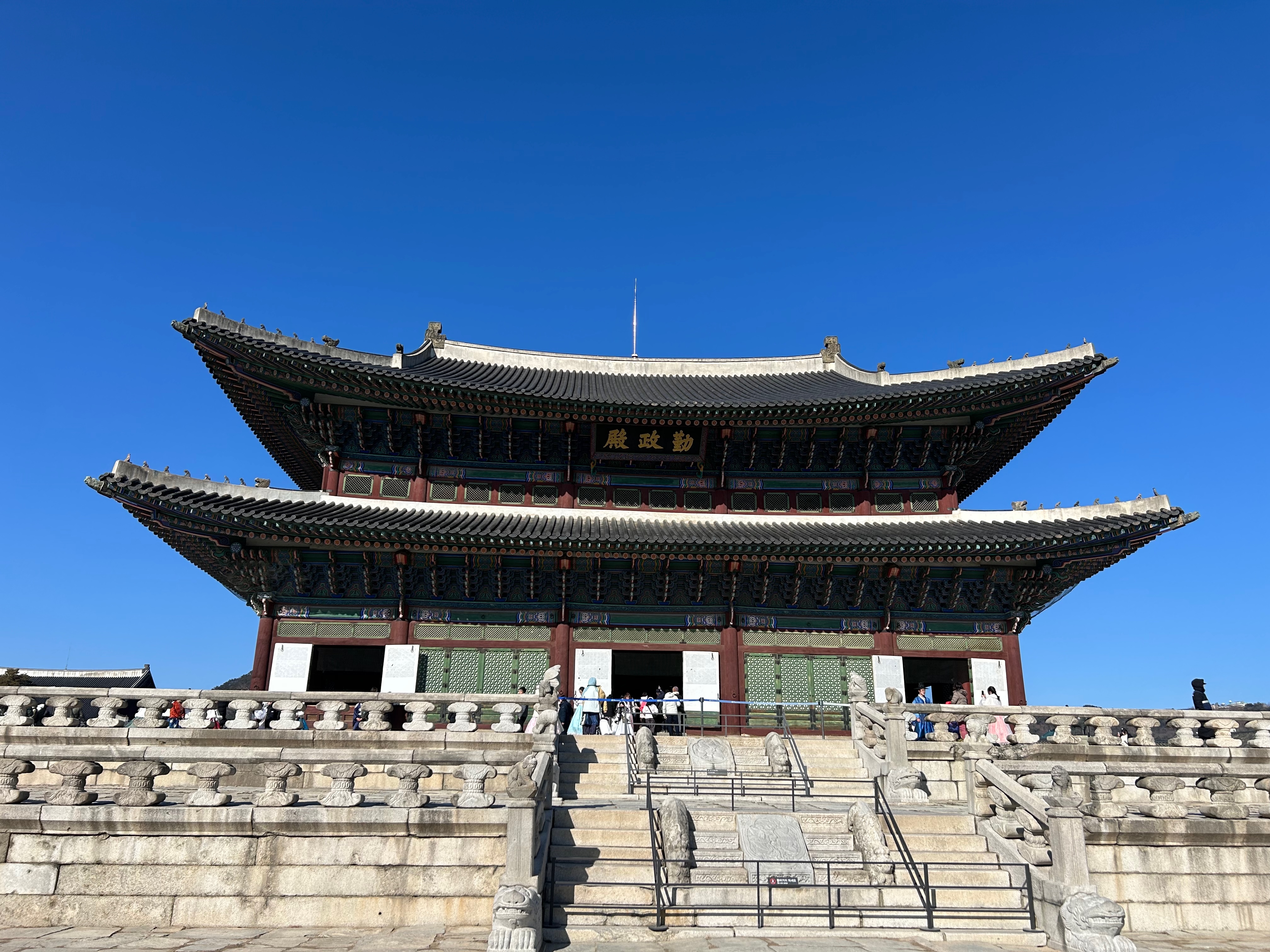
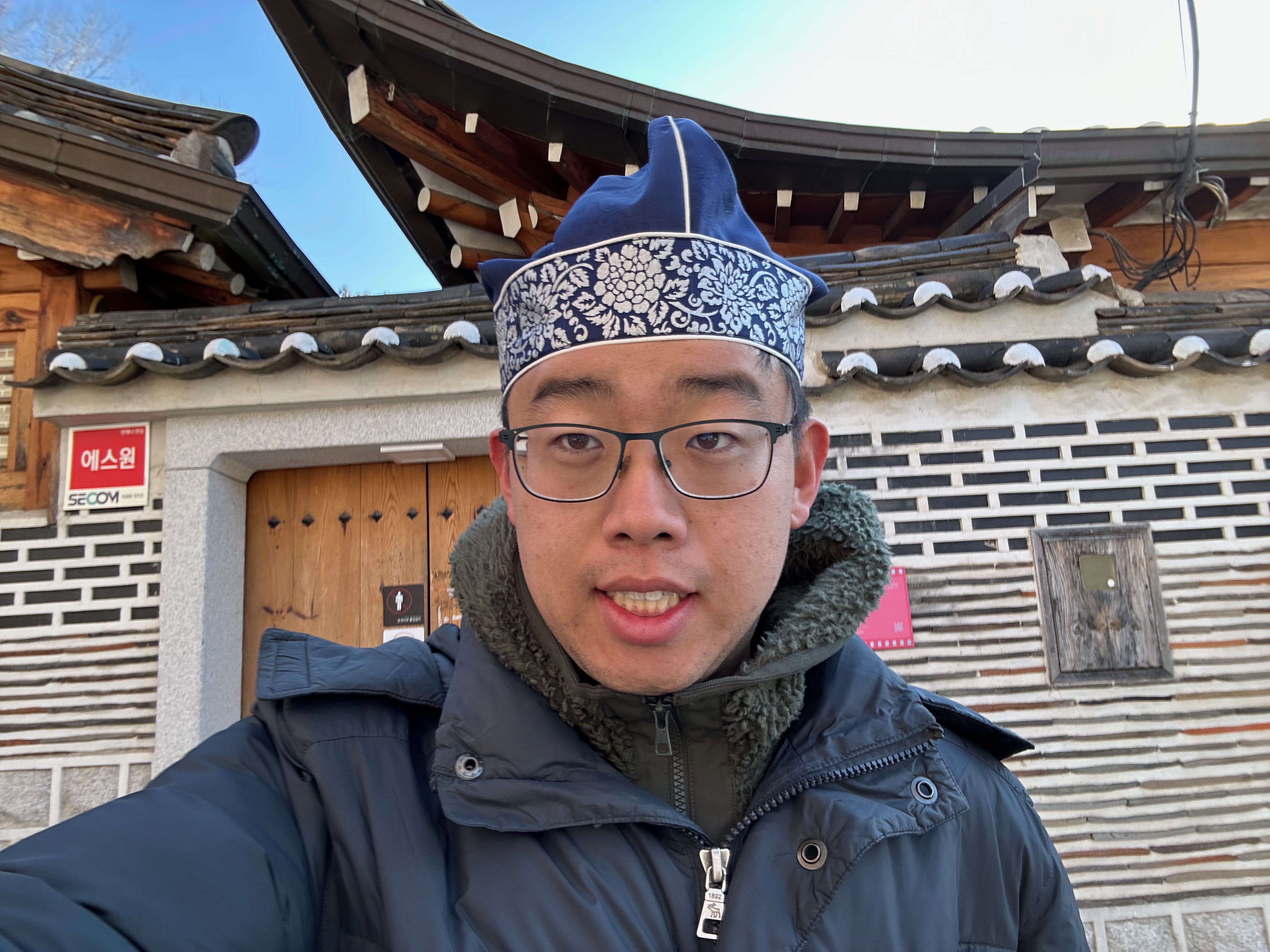 Right: Traditional hat that I got from the Hanbok rental place
Right: Traditional hat that I got from the Hanbok rental place
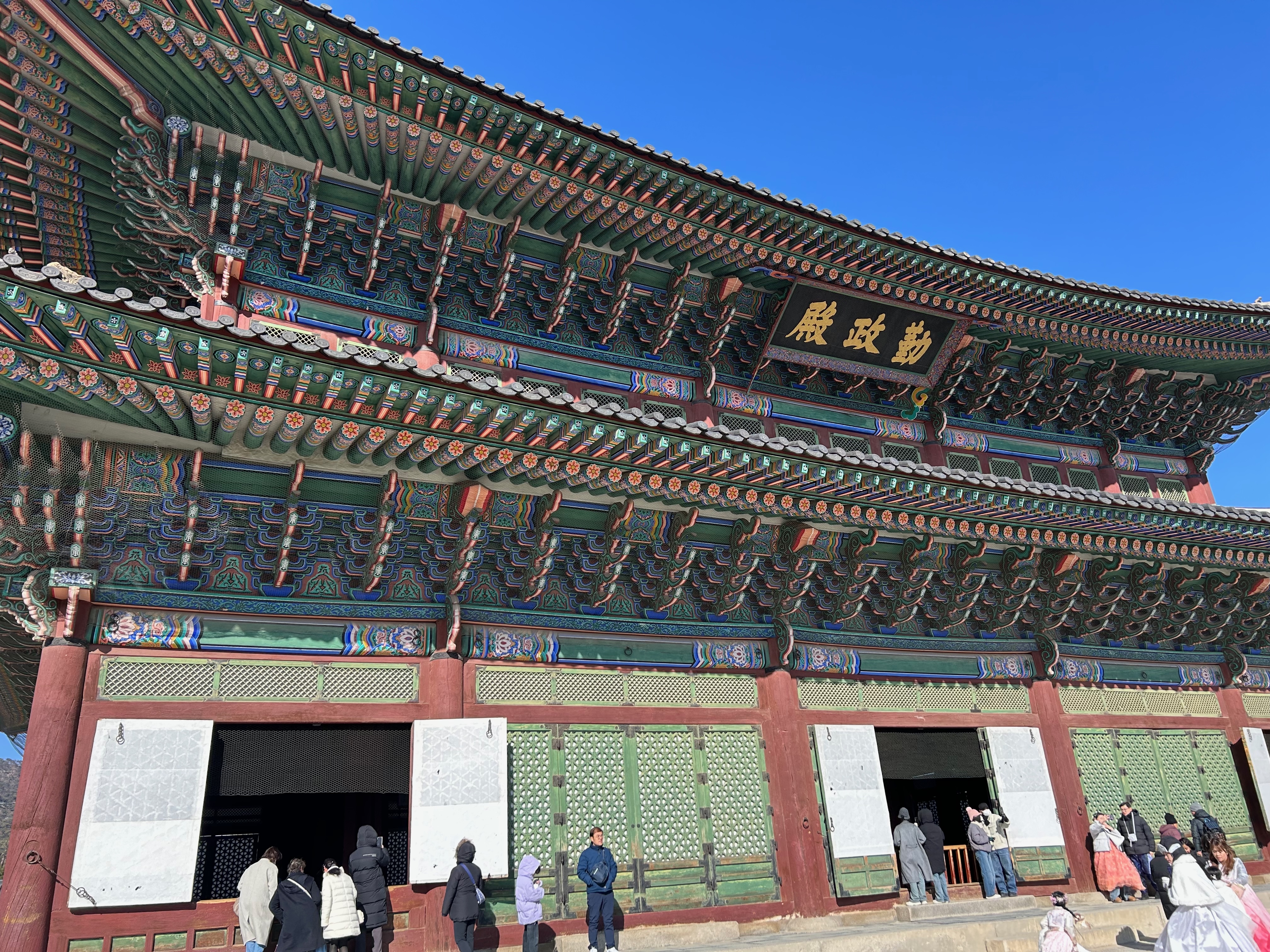
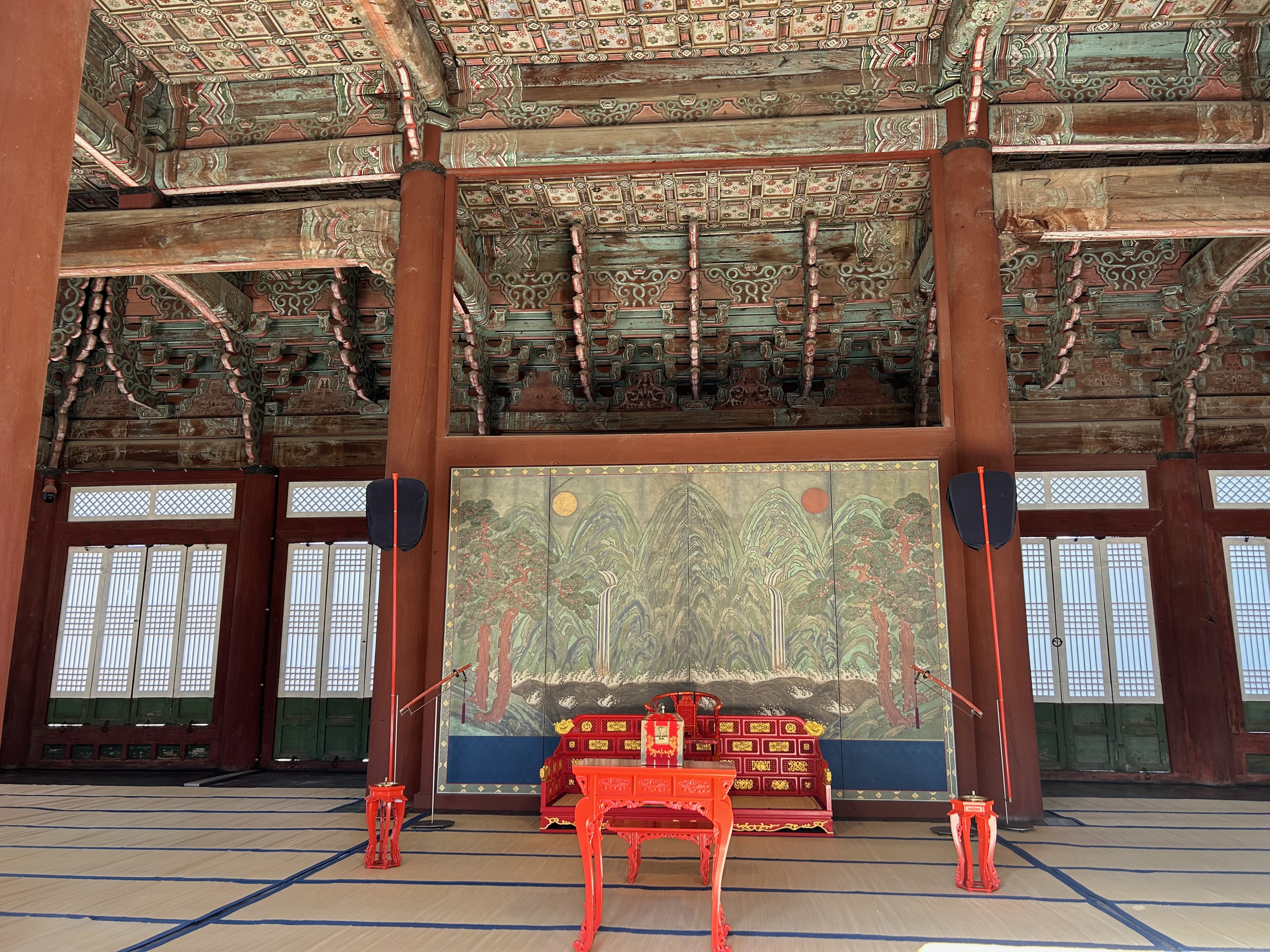
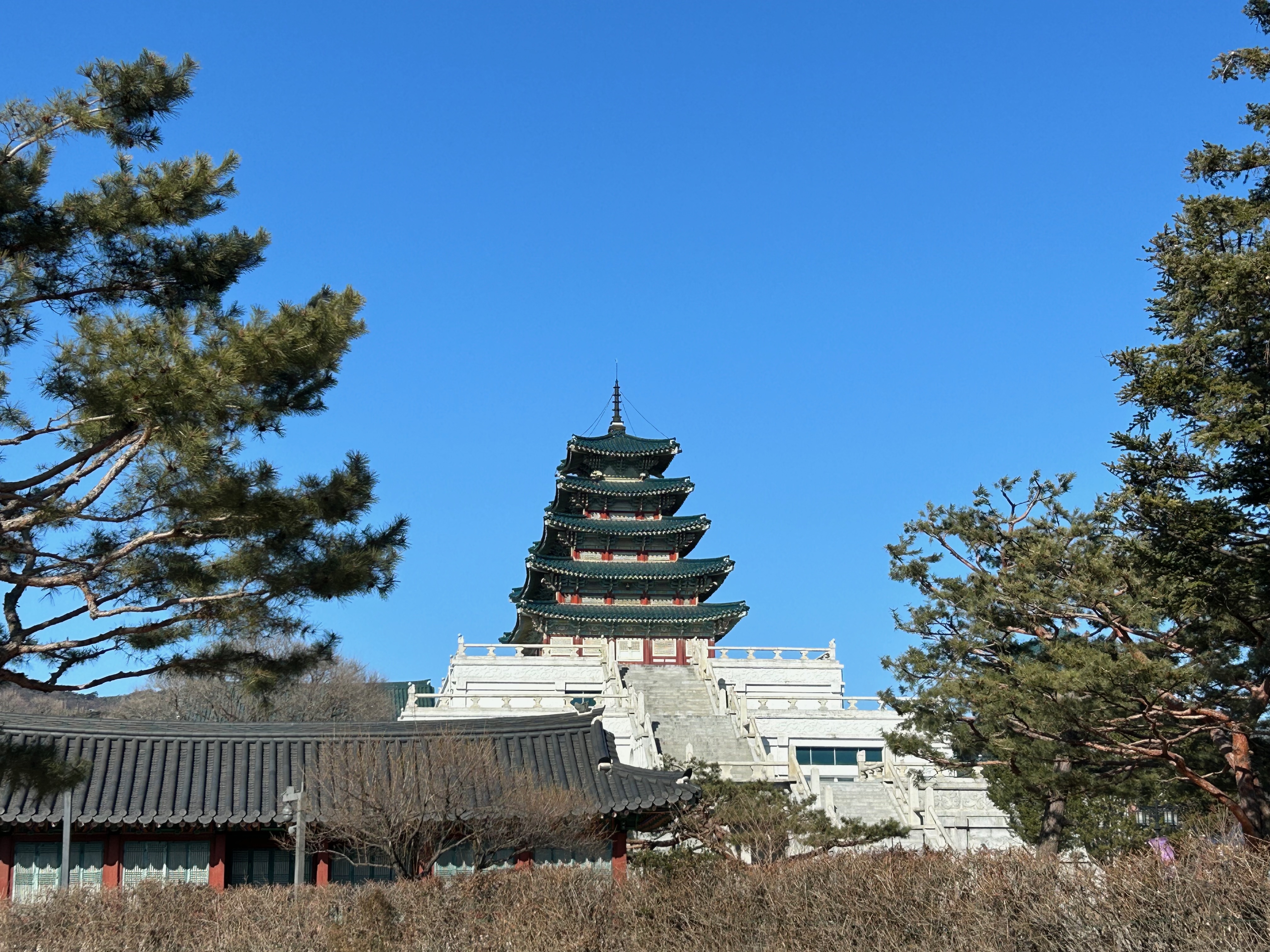
Our tour ended in Insagon, where the royal artists used to reside.
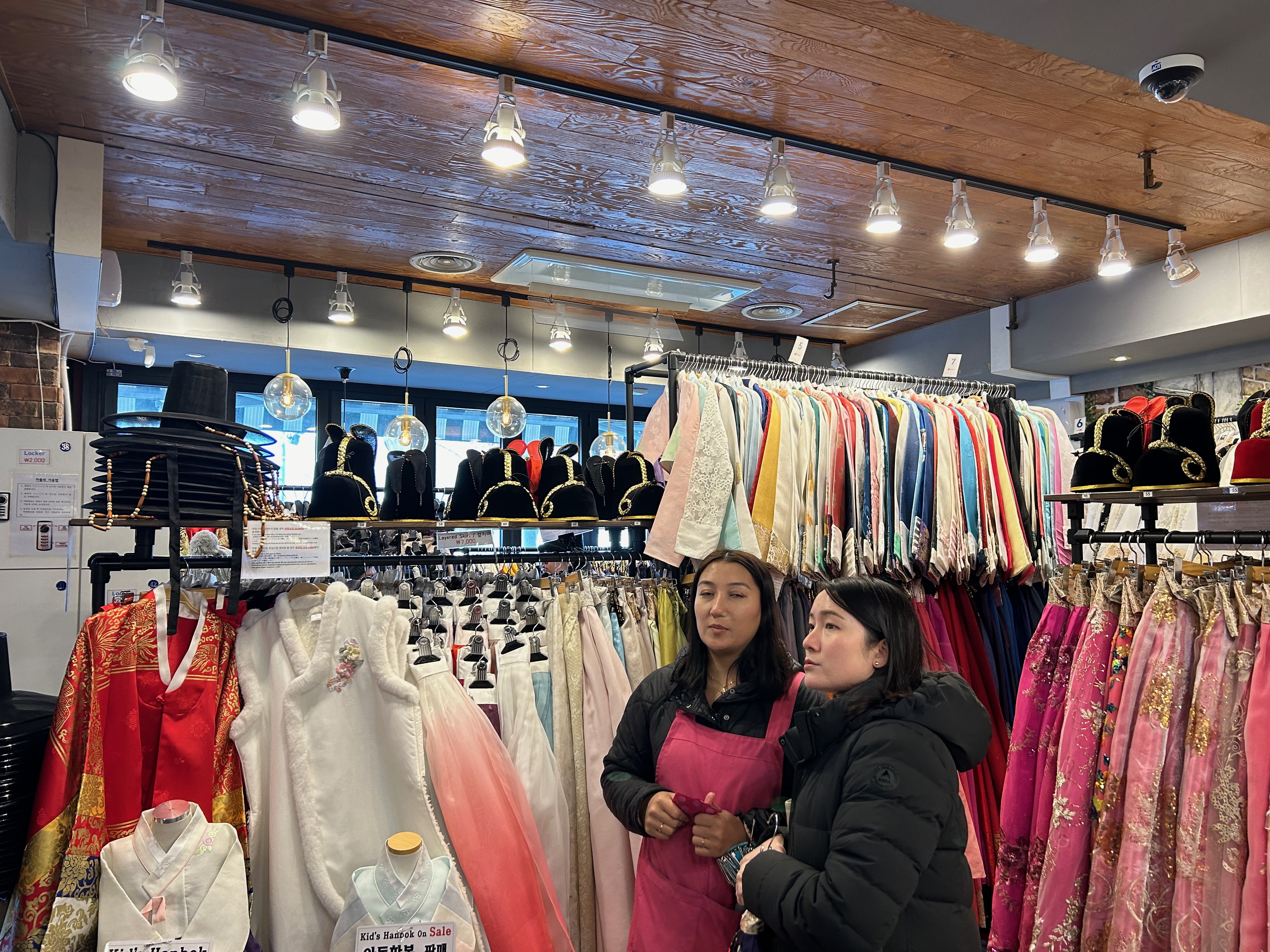
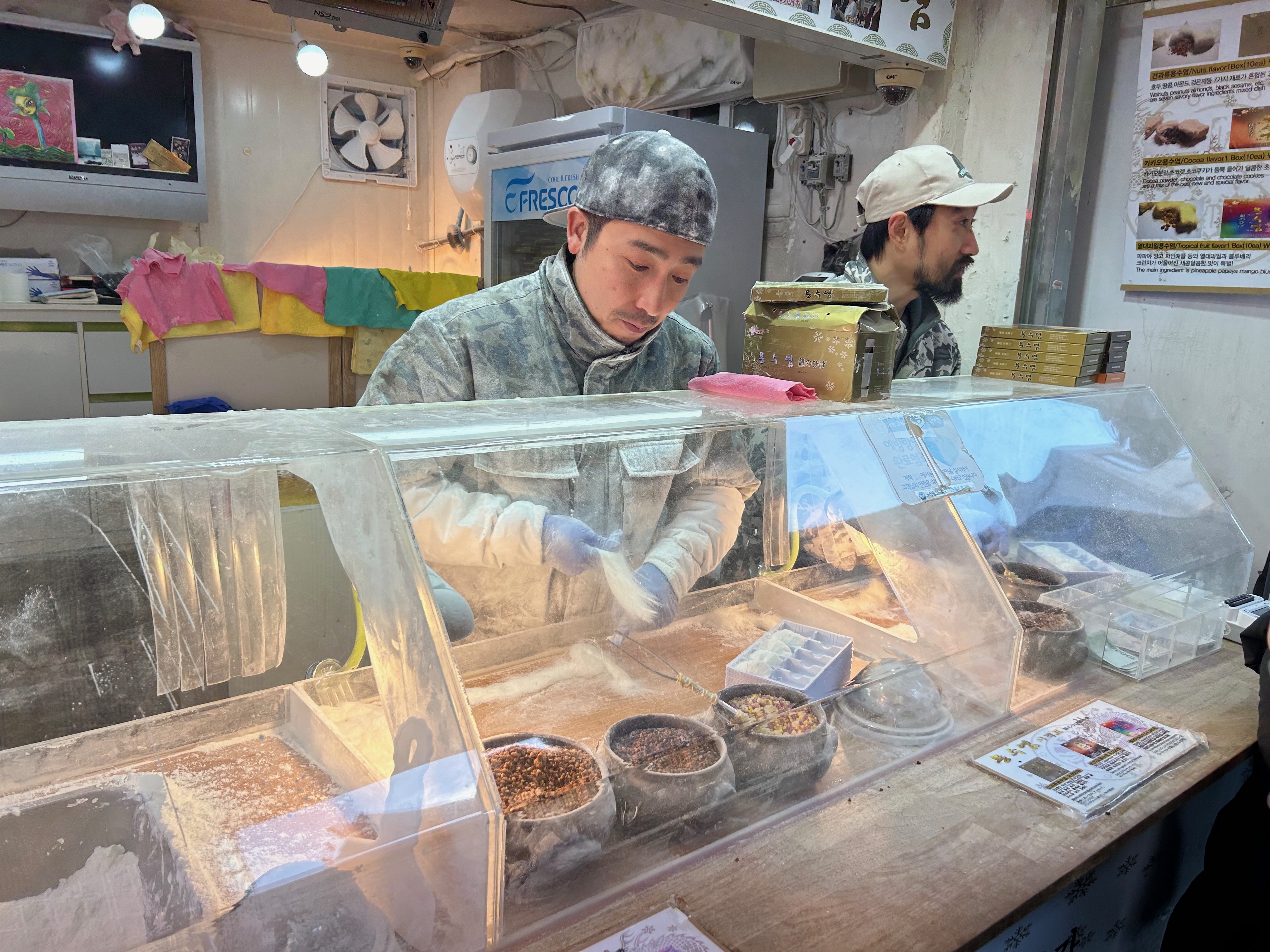 Right: Street vendor who had this candy string folded many many times, to produce these incredibly thin slices
Right: Street vendor who had this candy string folded many many times, to produce these incredibly thin slices
Along with a couple of fellow Austrian tourists, we tried a traditional North Korean dumpling place that was recommended.
The GaeSong dumpling is filled with stuffing, which includes beef slices that are typical in Korean soups. It is much larger than a typical Chinese dumpling, and it’s bathed in a soup broth.
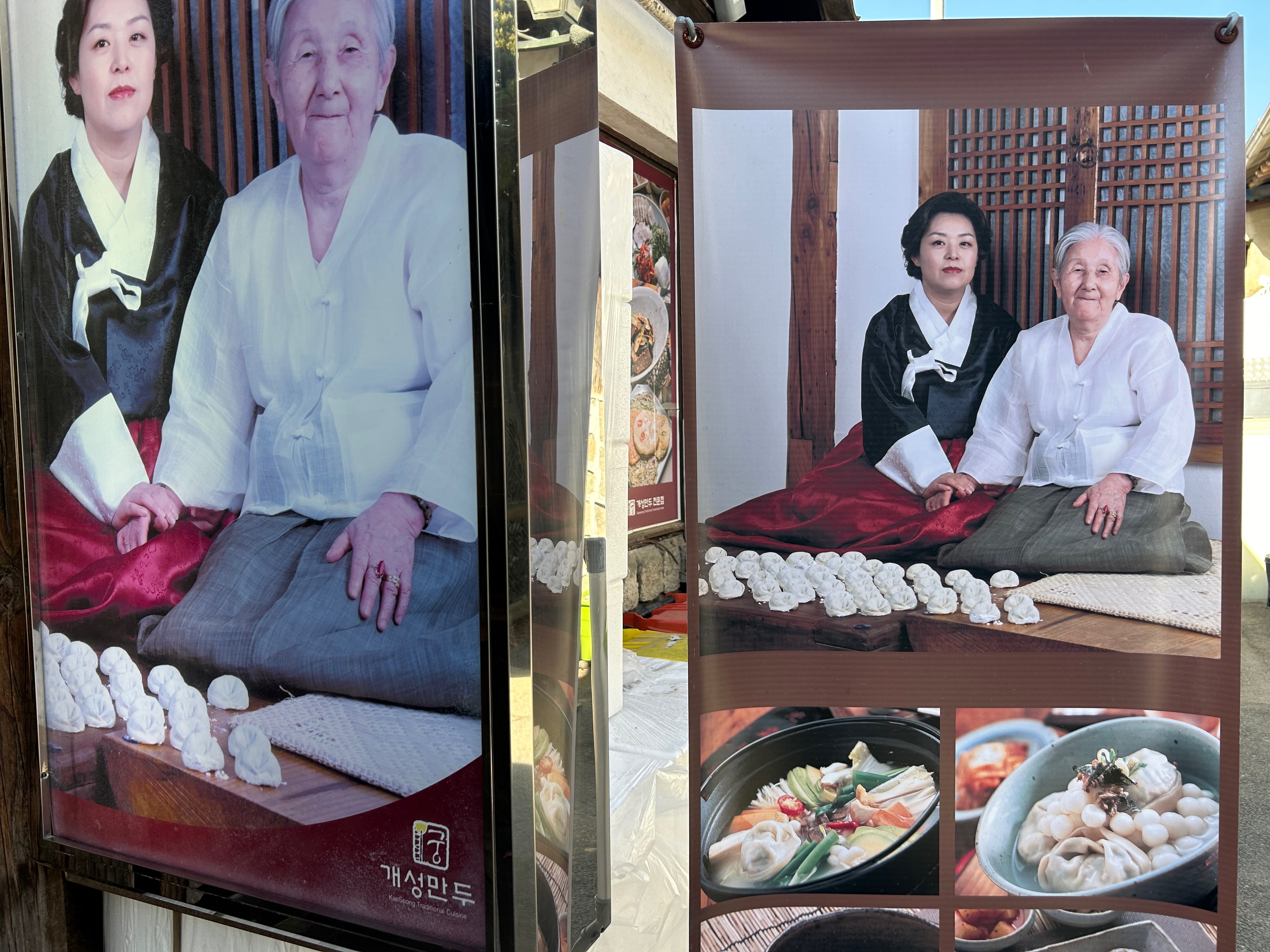
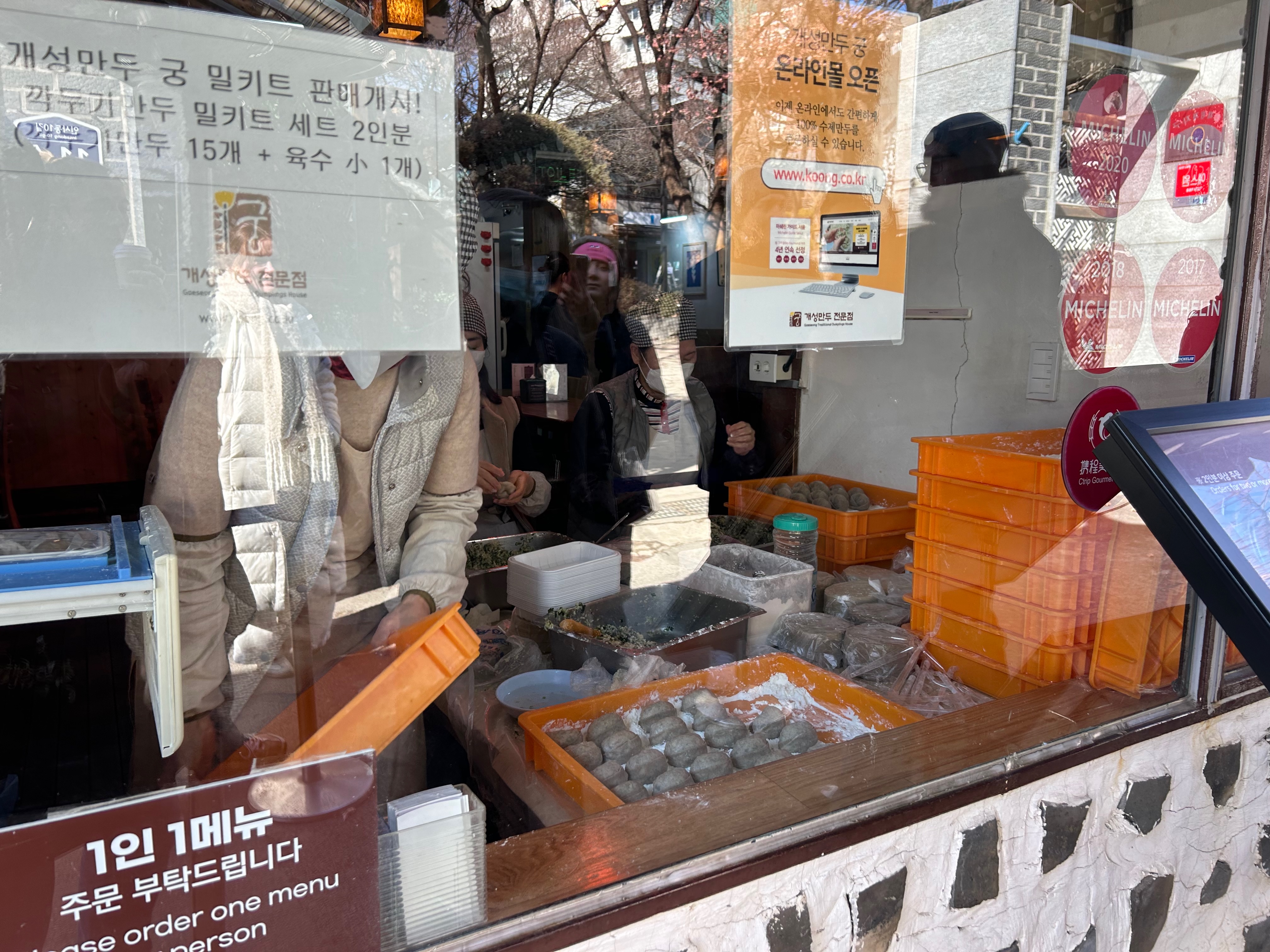
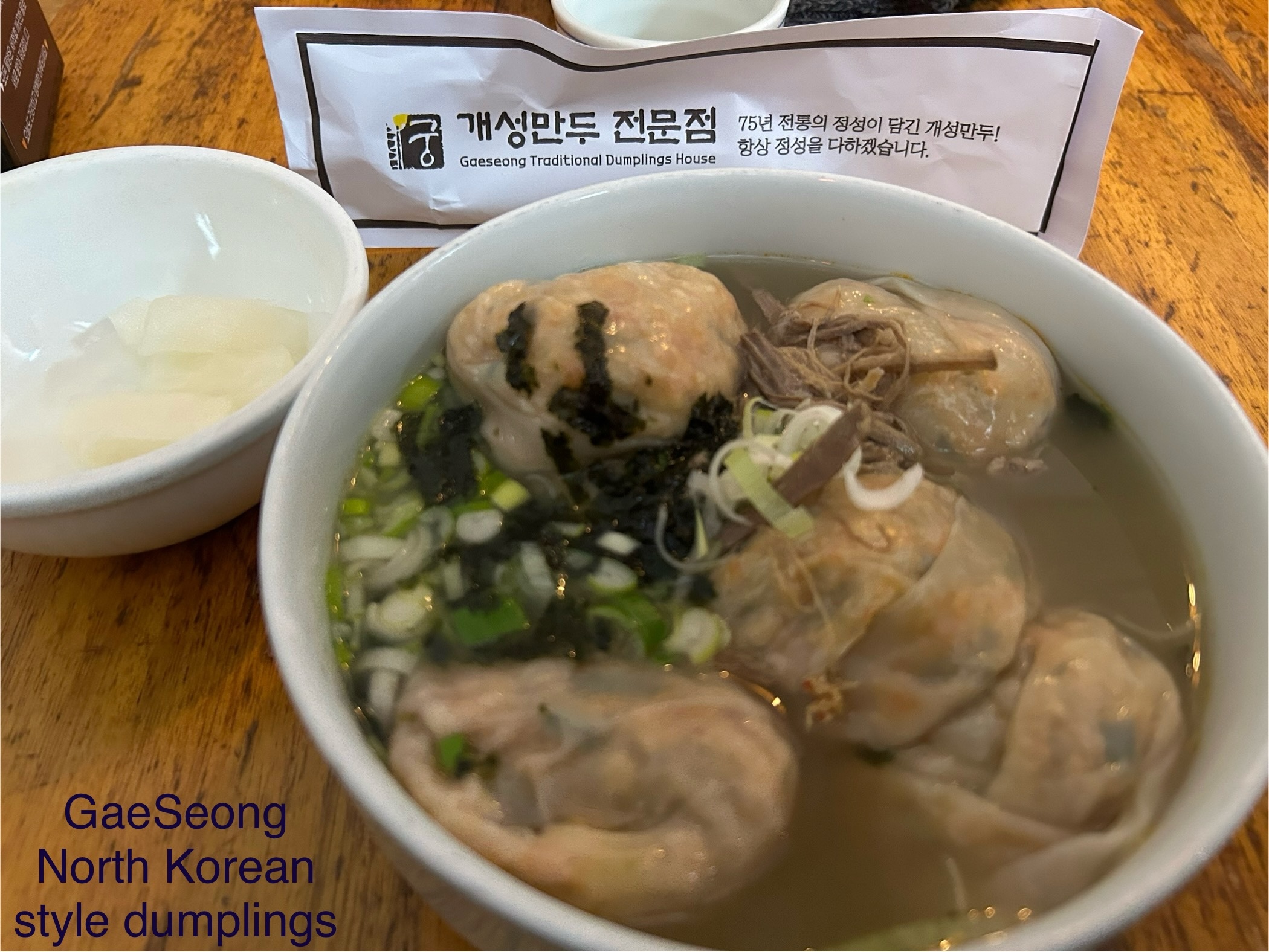
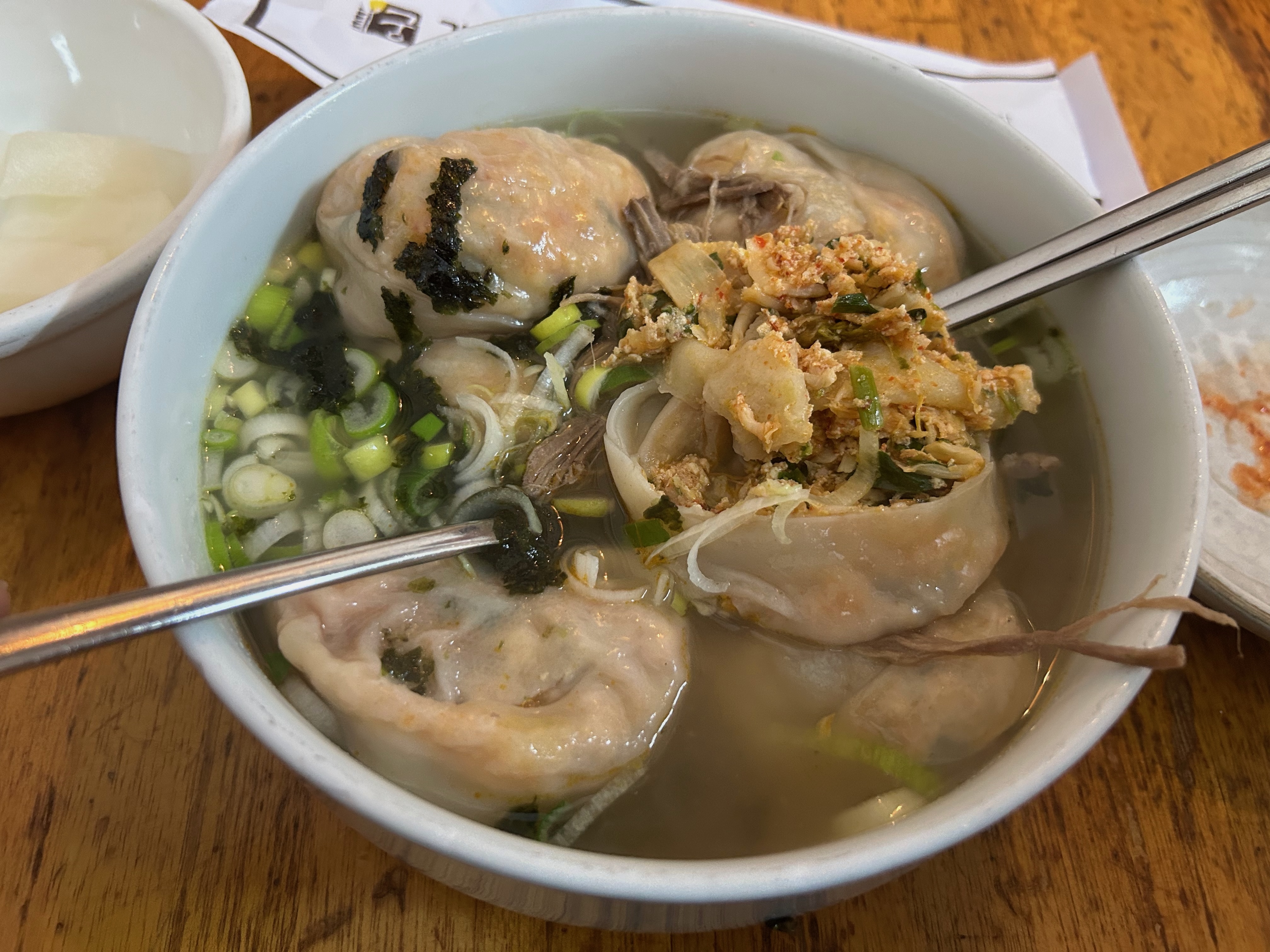 Look at the stuffing!
Look at the stuffing!
I spent the next few hours walking across the traditional Hanok village. Seeing the old homes, I can’t help but feel their beauty. Situated on the mountains, you can see across Seoul in the background.
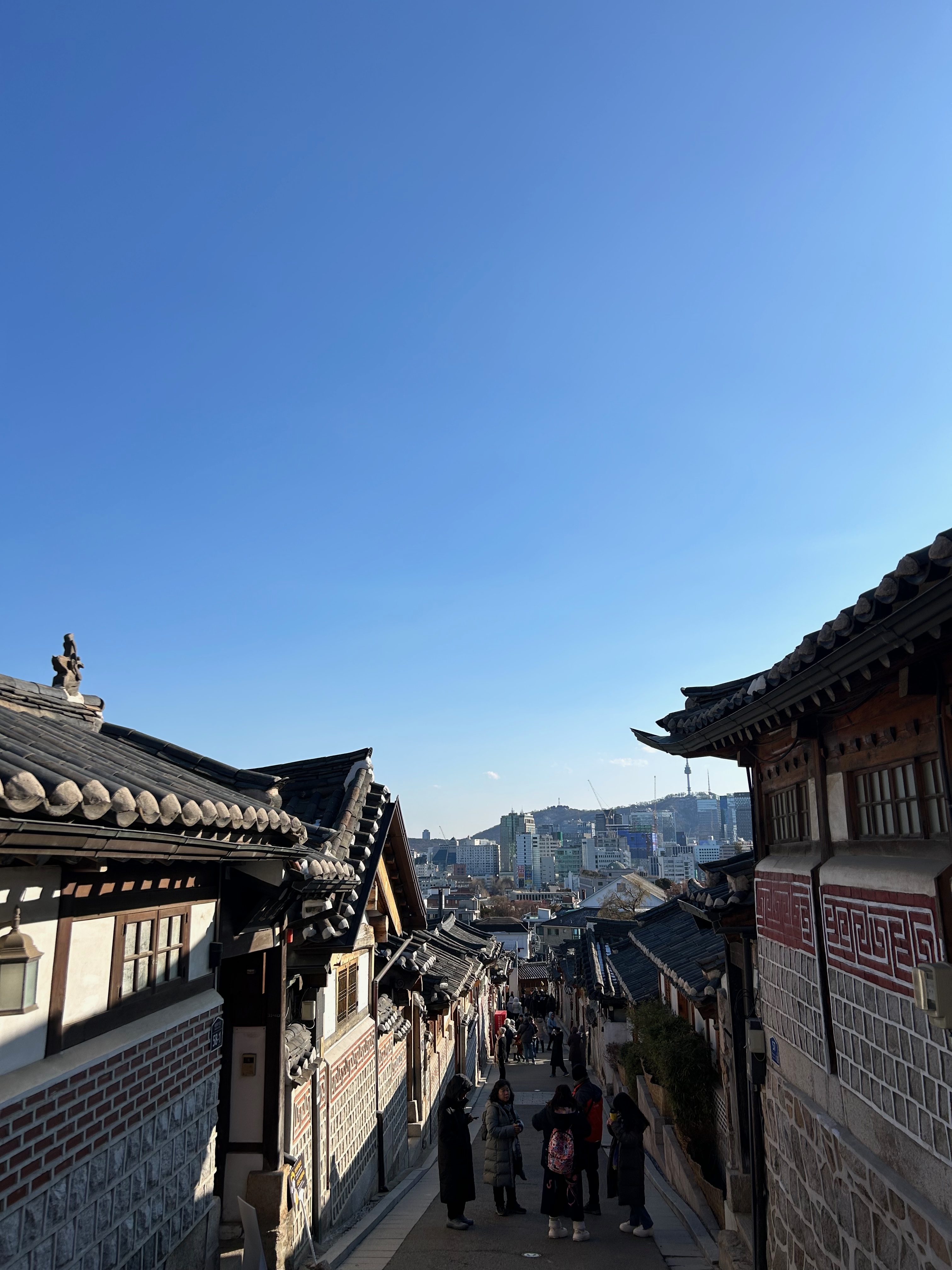
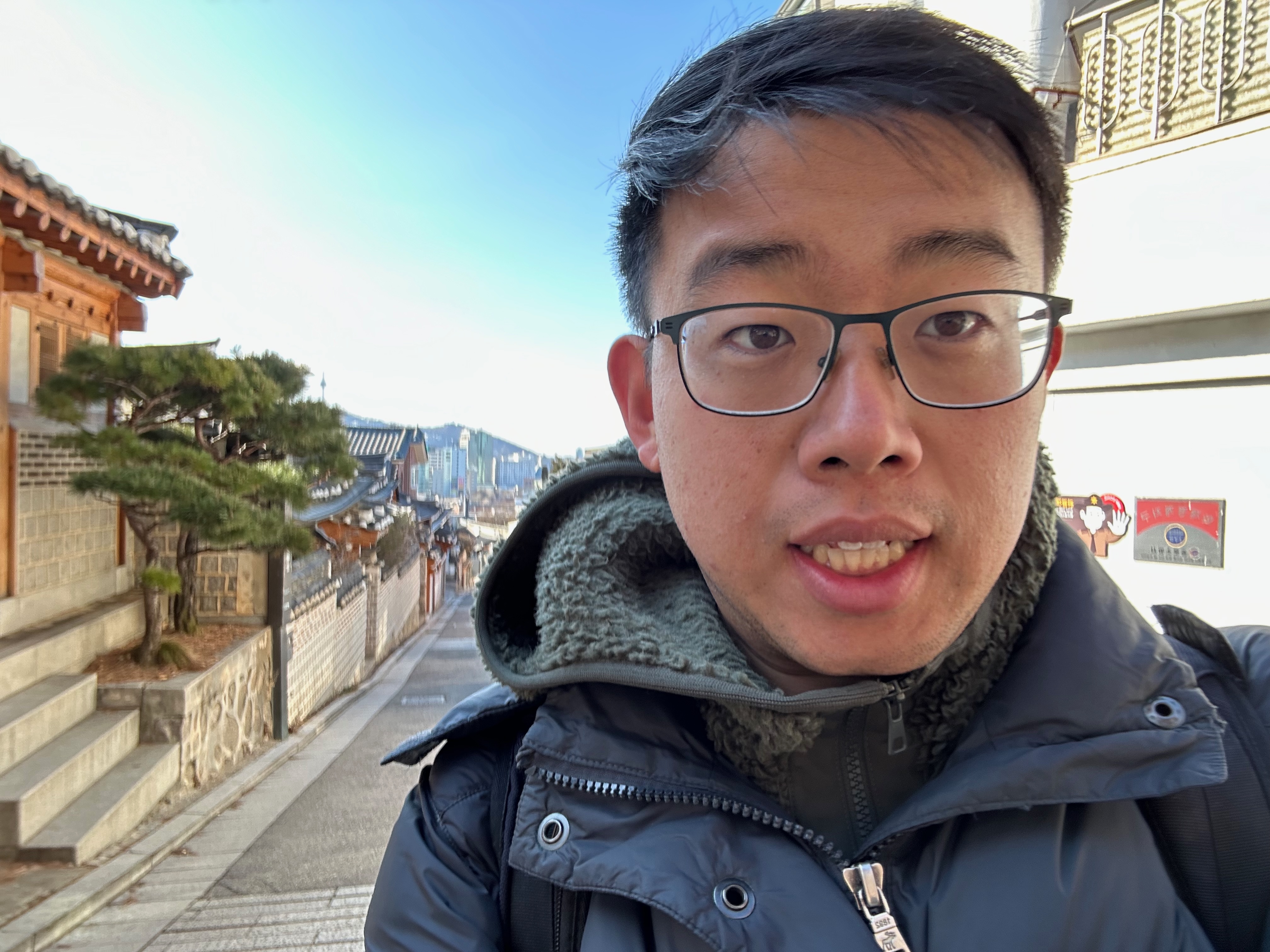
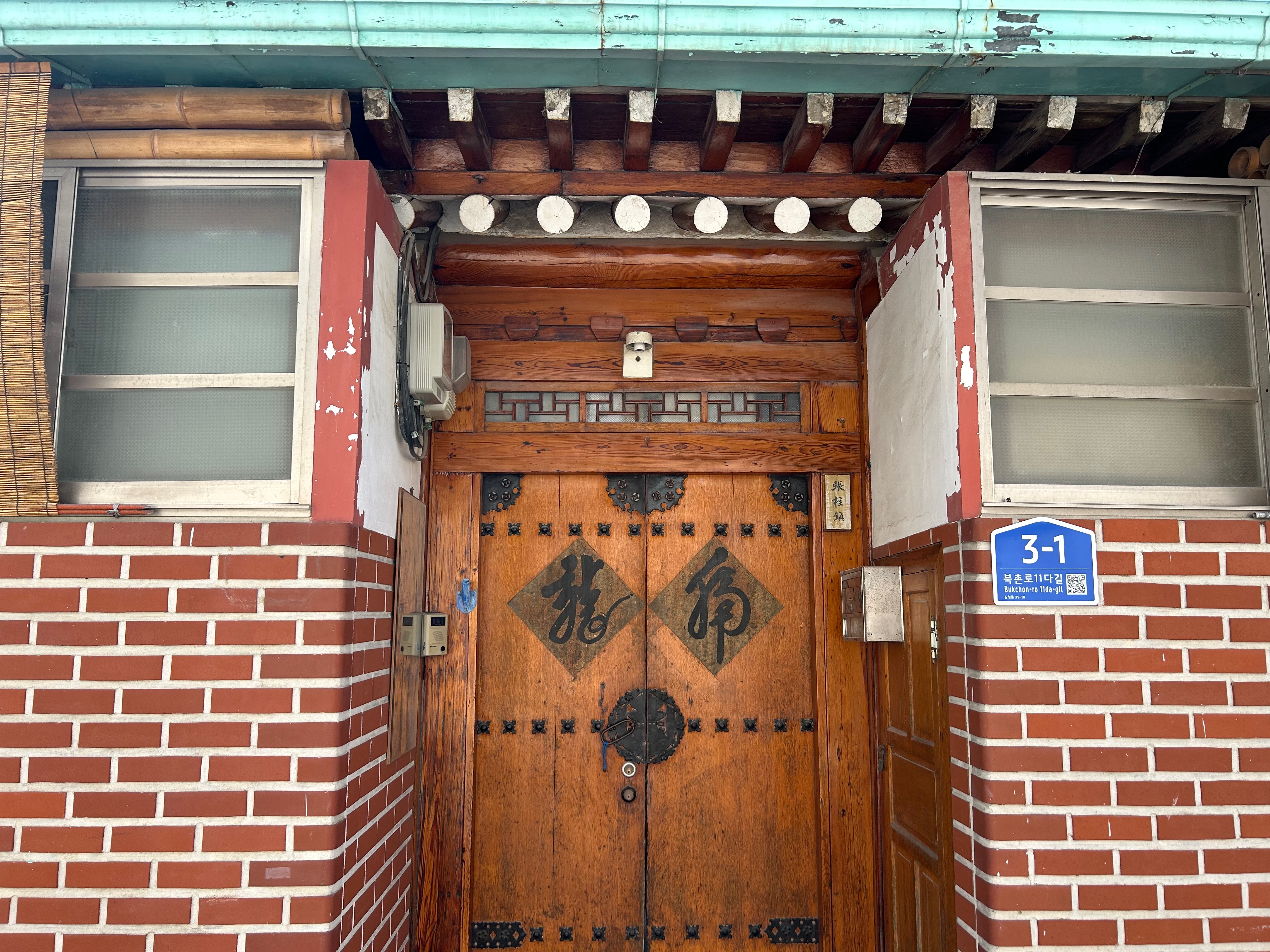
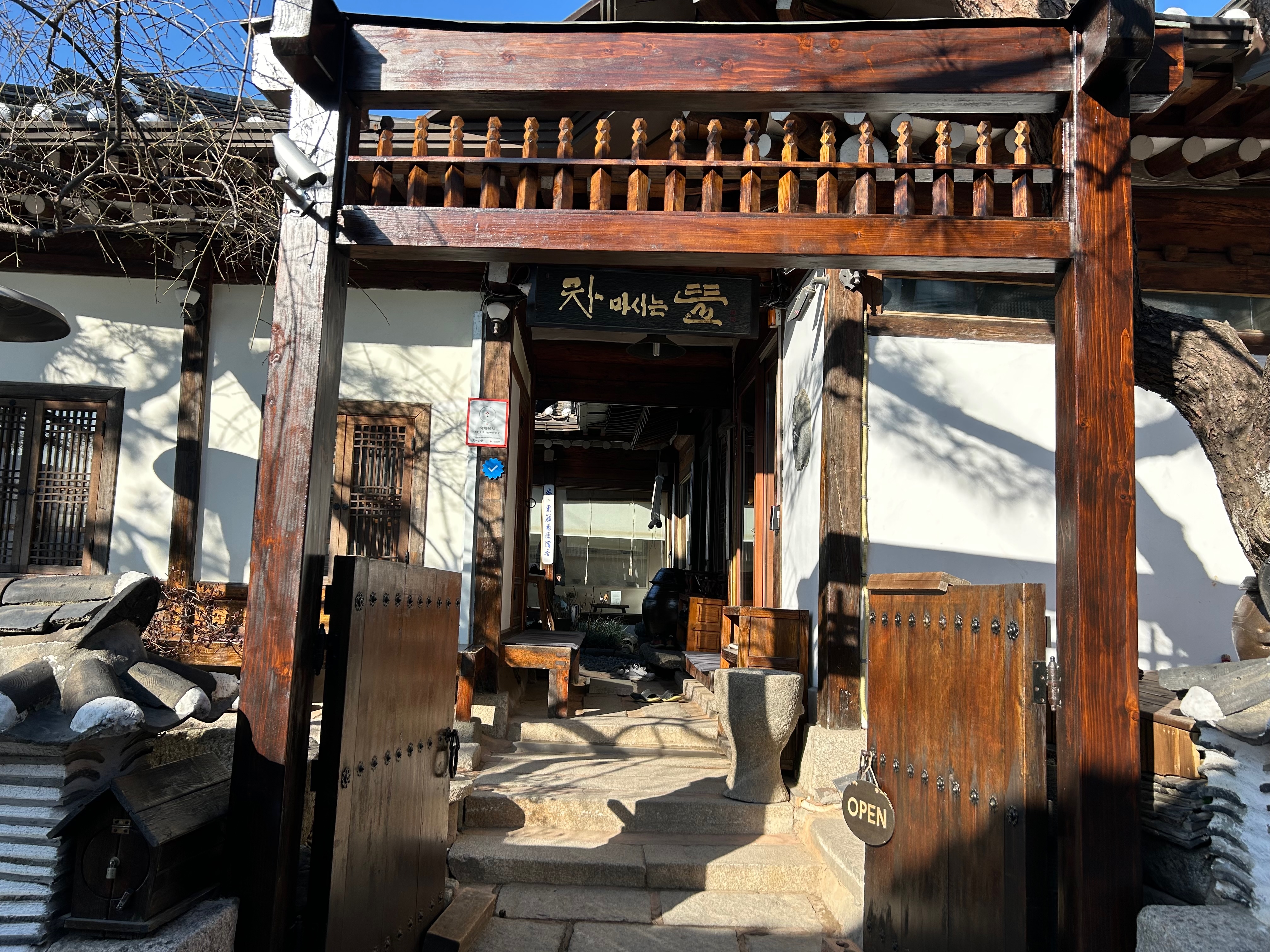
Let the eating begin!
I first visited the GwangJang market, where they are almost a hundred shops / stalls.
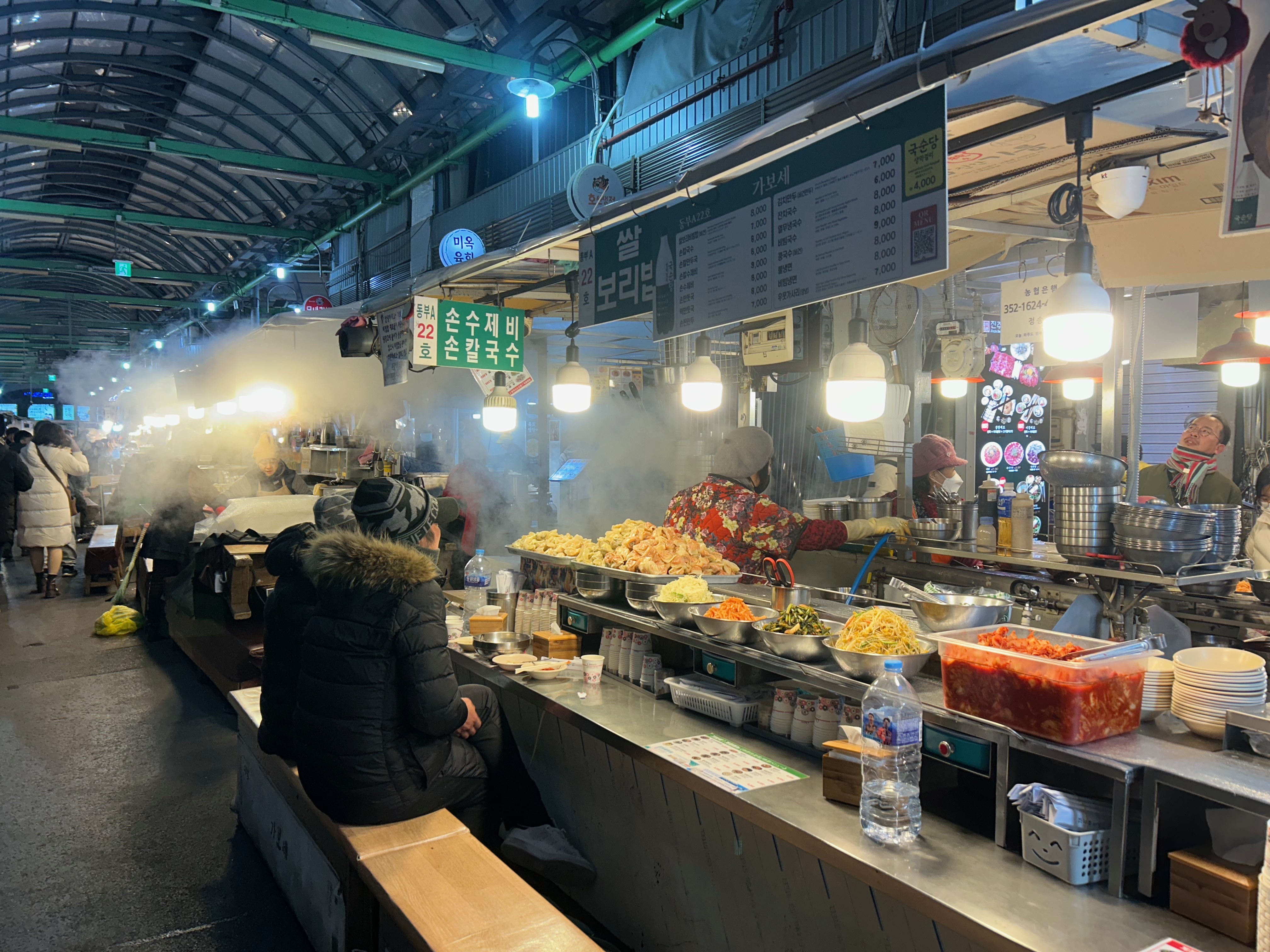
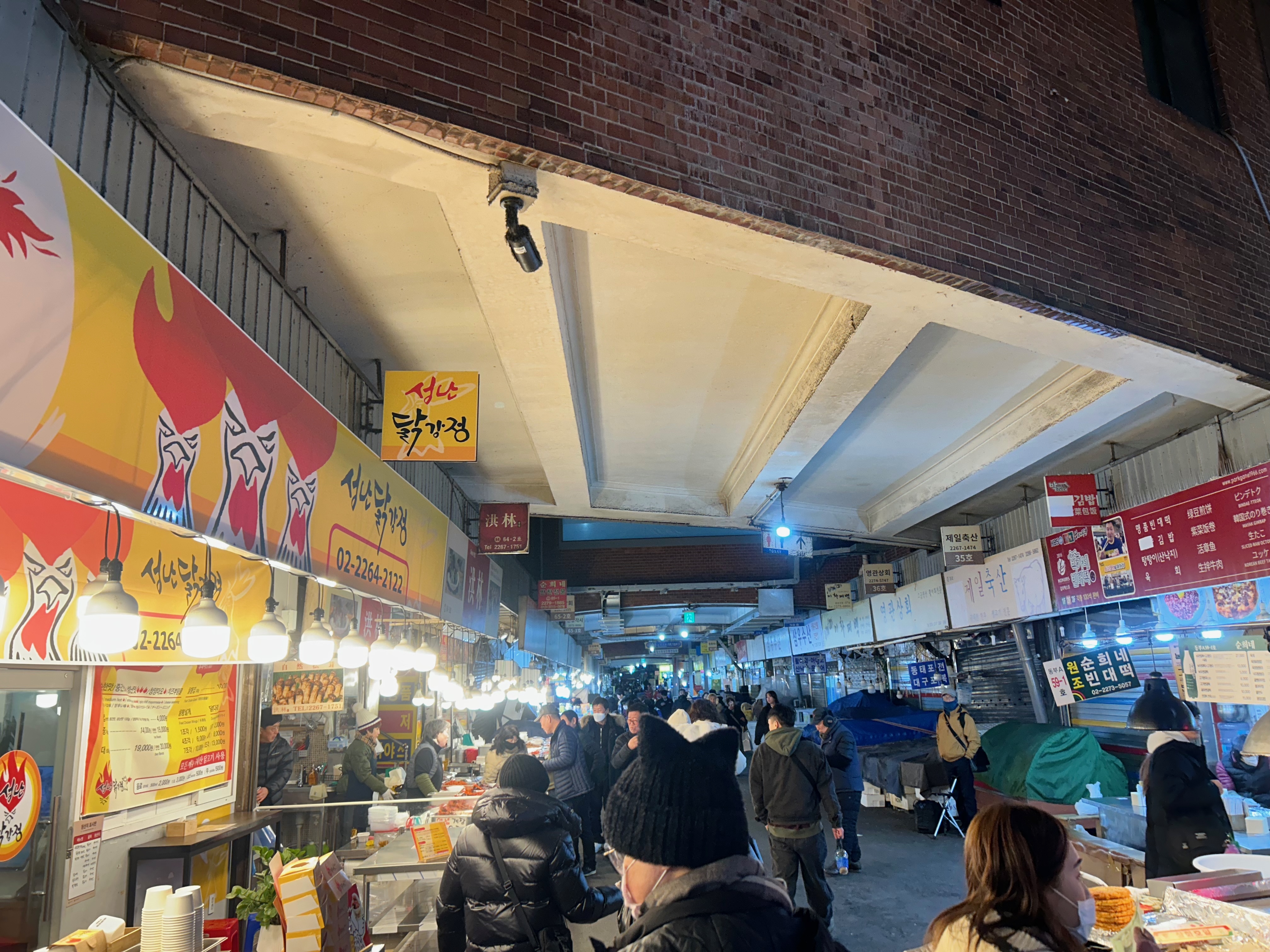
The food and snacks are varied, and I loved trying them out!
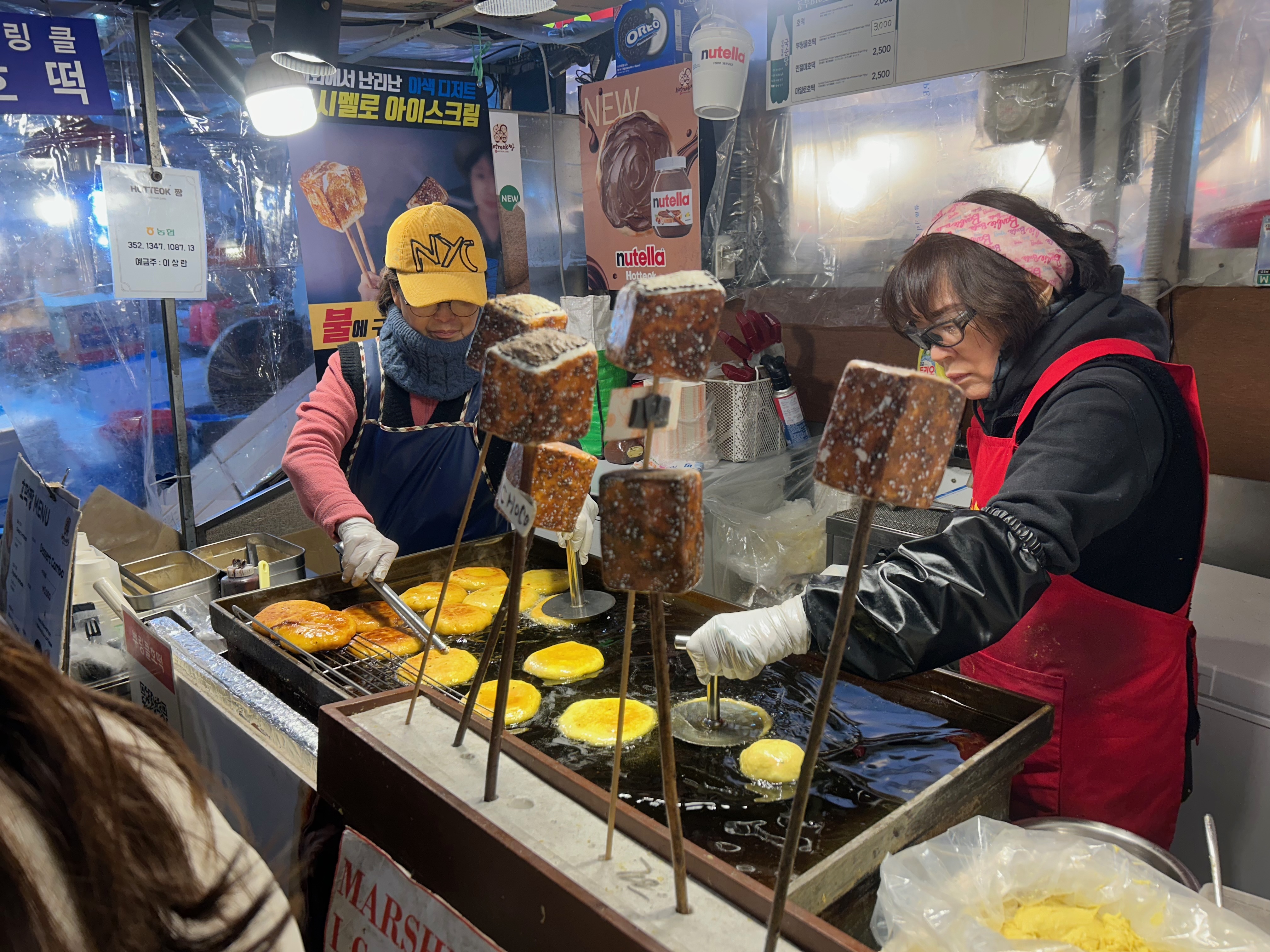
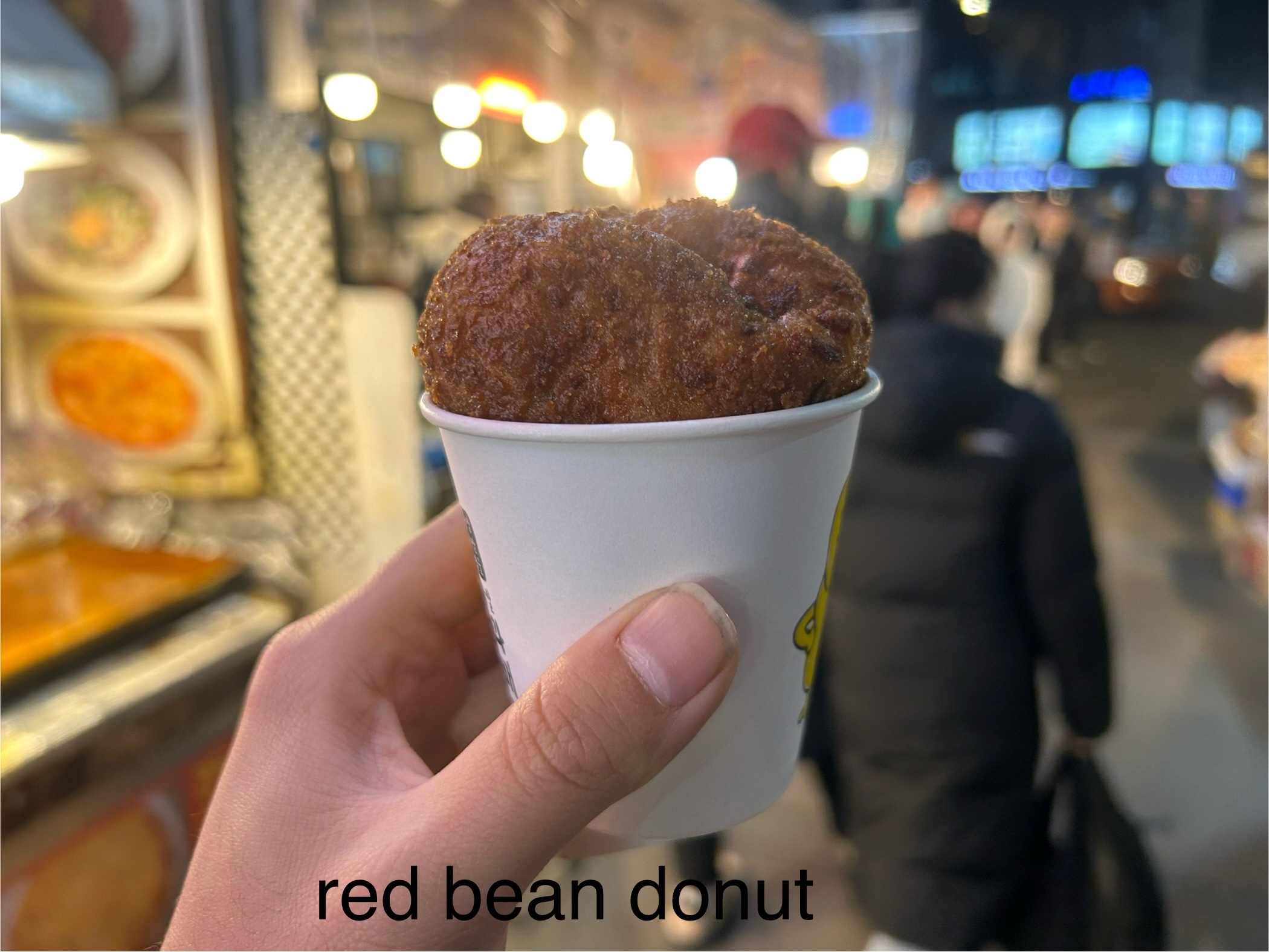
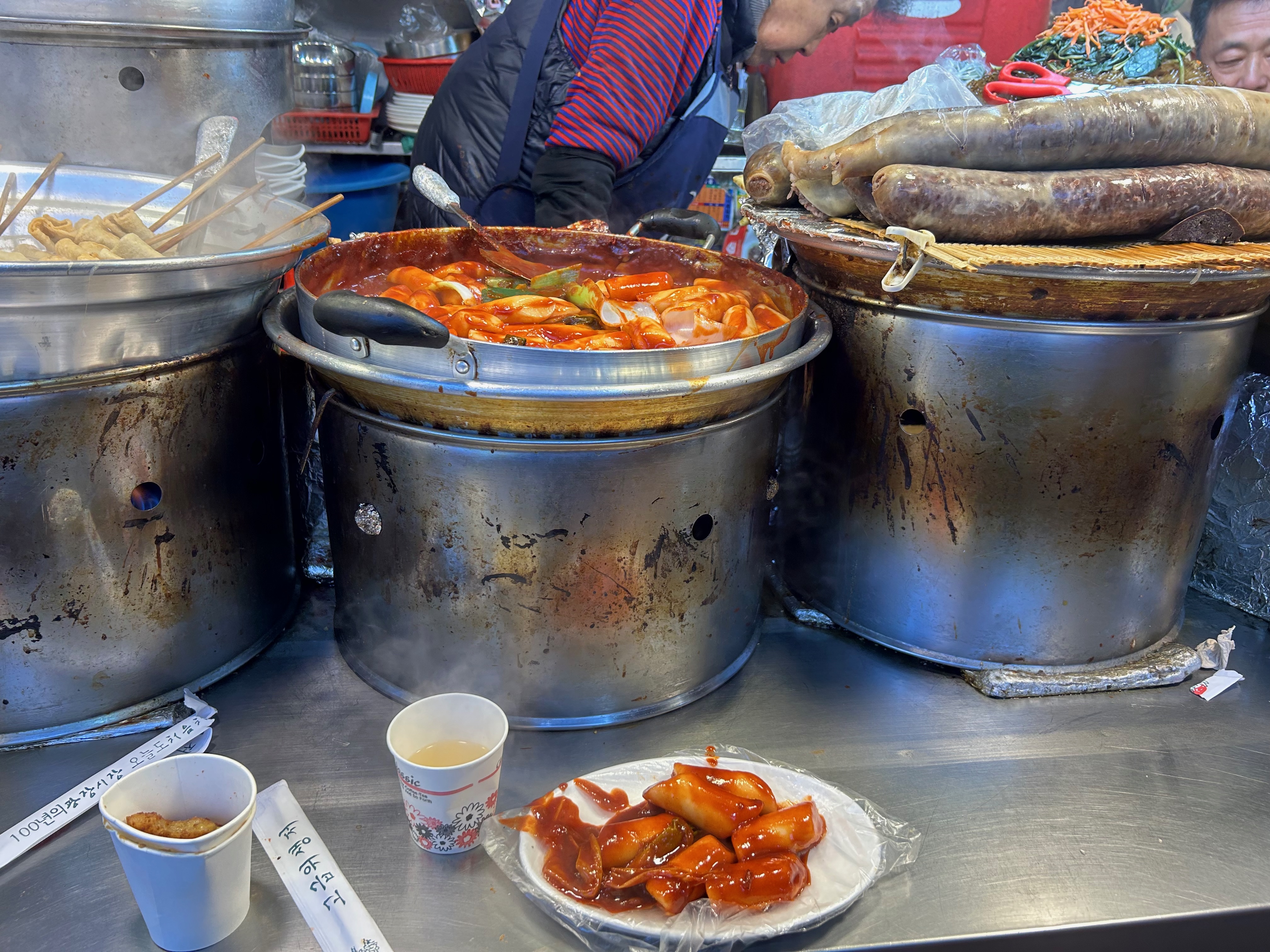
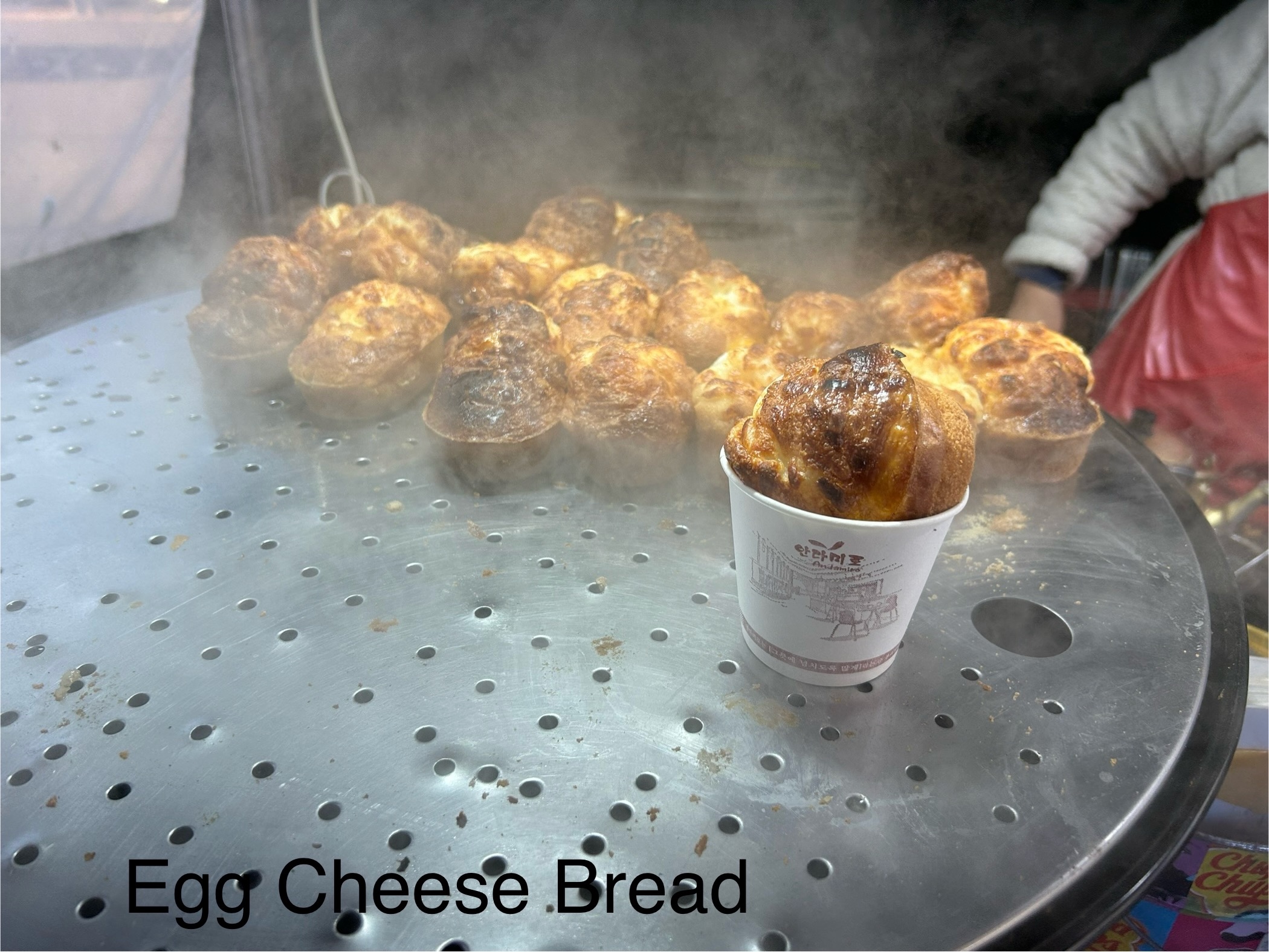
I must confess that I love traditional Korean food. Throughout my stay, I enjoyed eating the soup and bibimbap, not to mention the kimchi that comes with other appetizer trays.
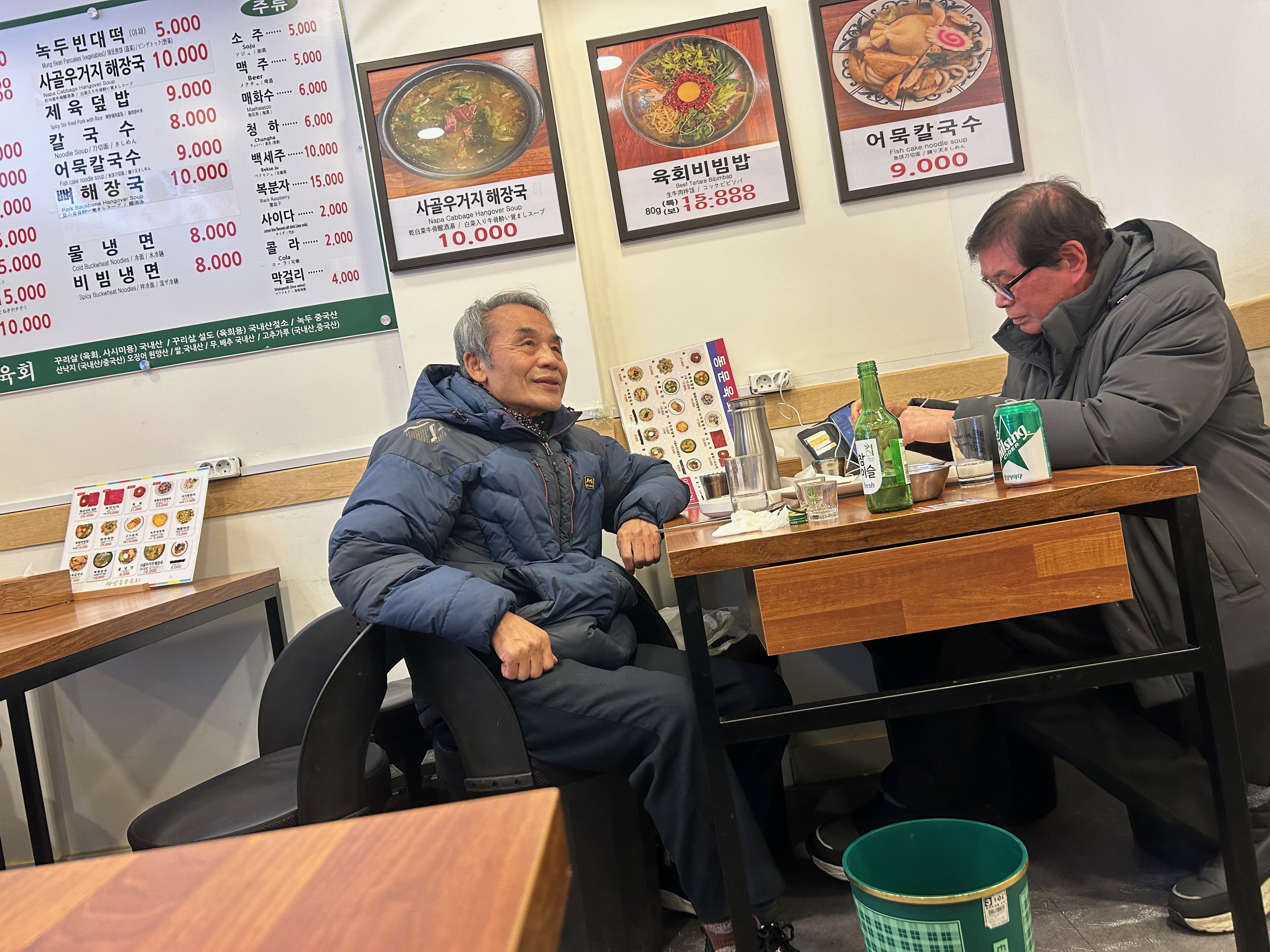
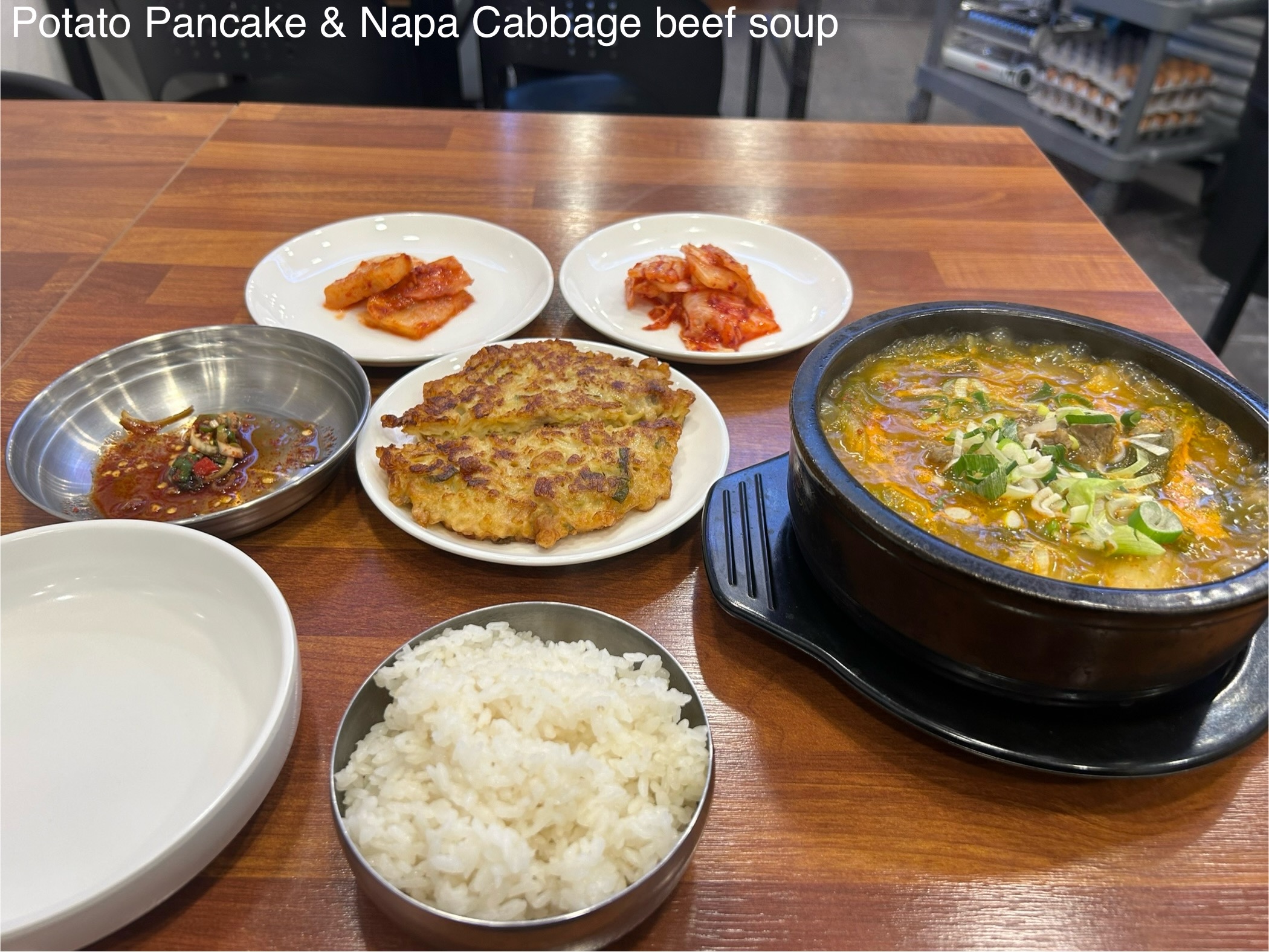
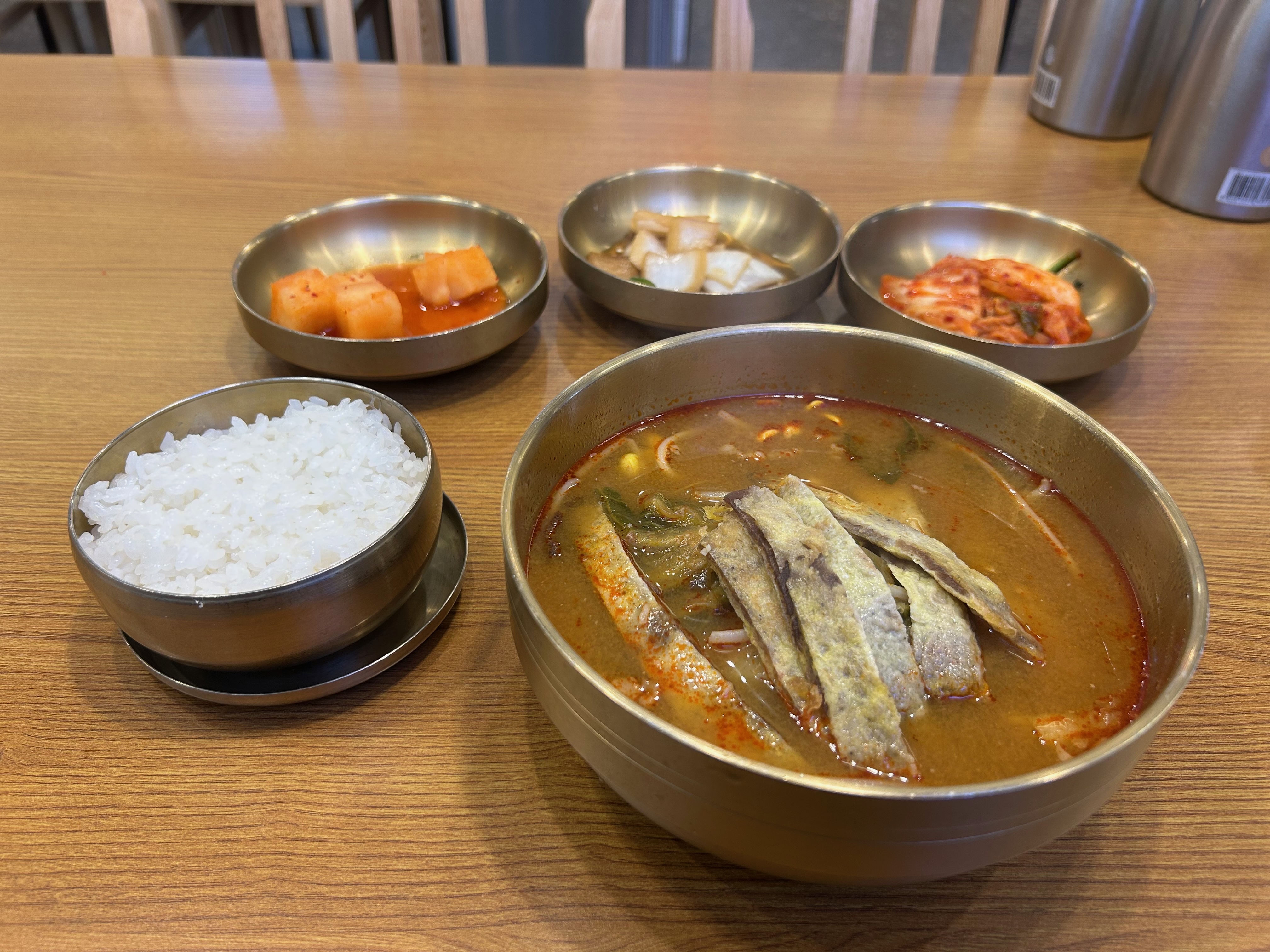
Exploring MyeongDong Nightlife
I ended my first day in Seoul at MyeongDong. Although Koreans don’t really visit it and it’s mainly Chinese and American tourists, I still found the energy to be amazing!
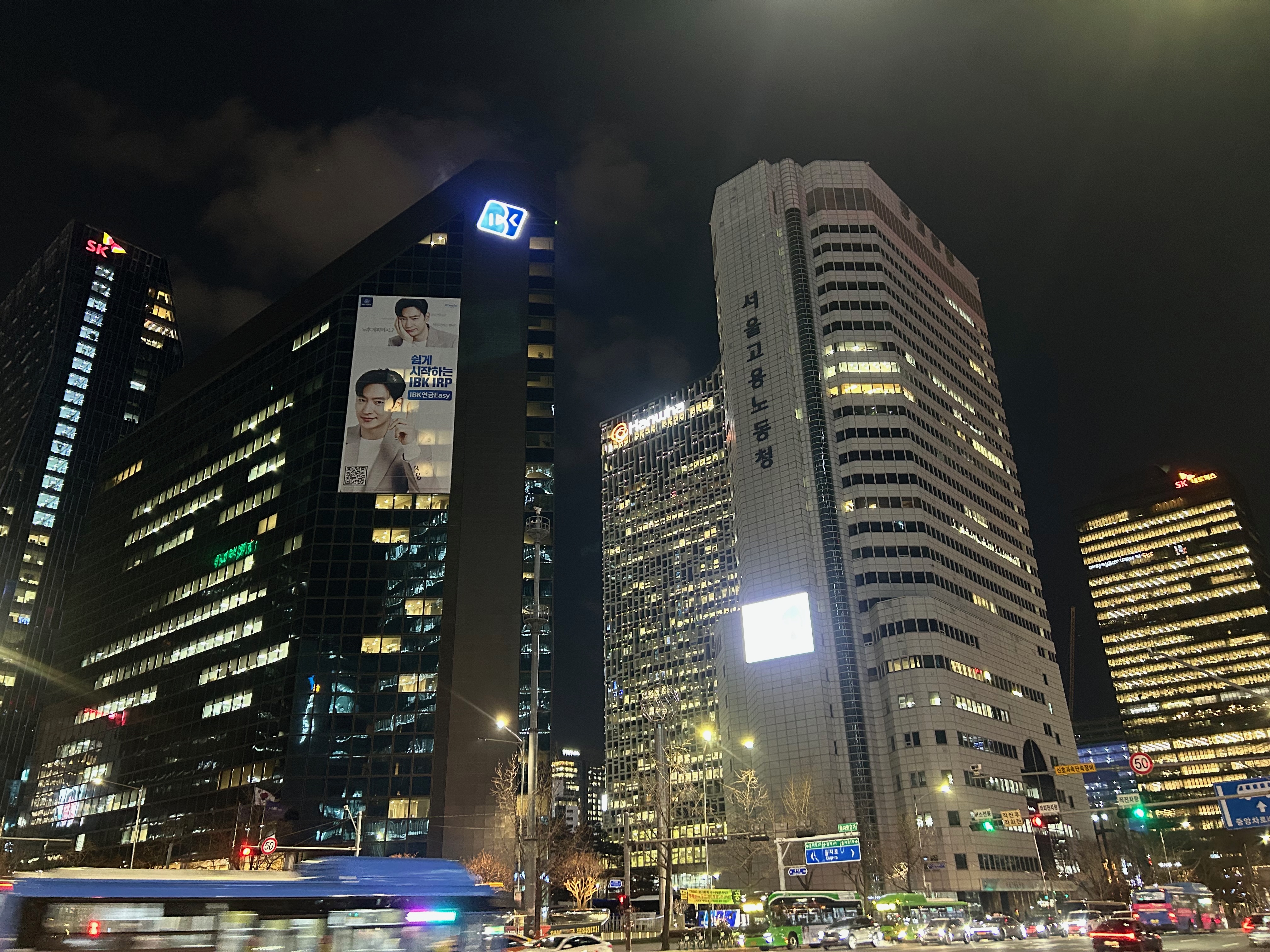
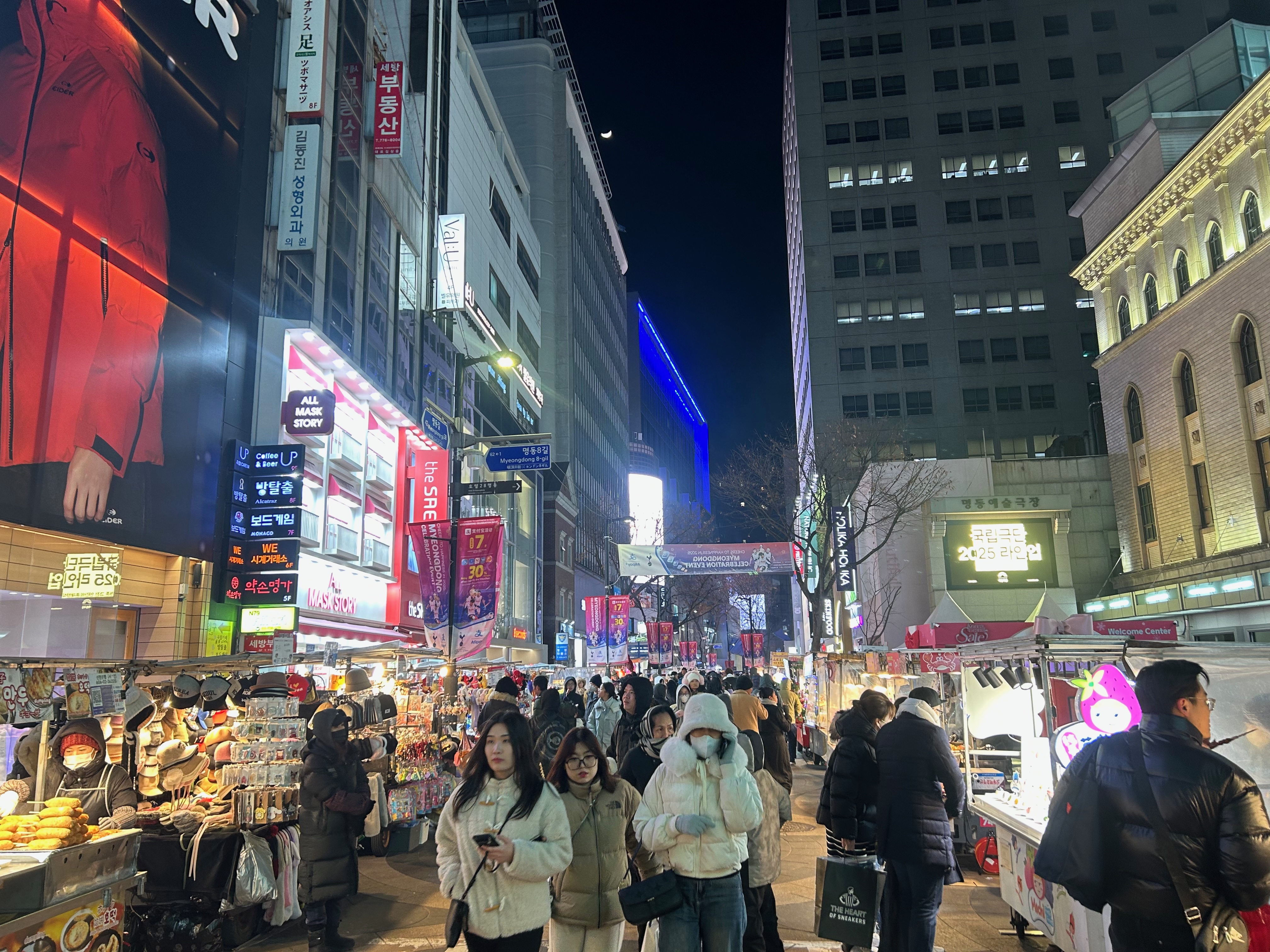
There are many shops along these corridors, and many snack vendors (although at about 2x the rate of other places).
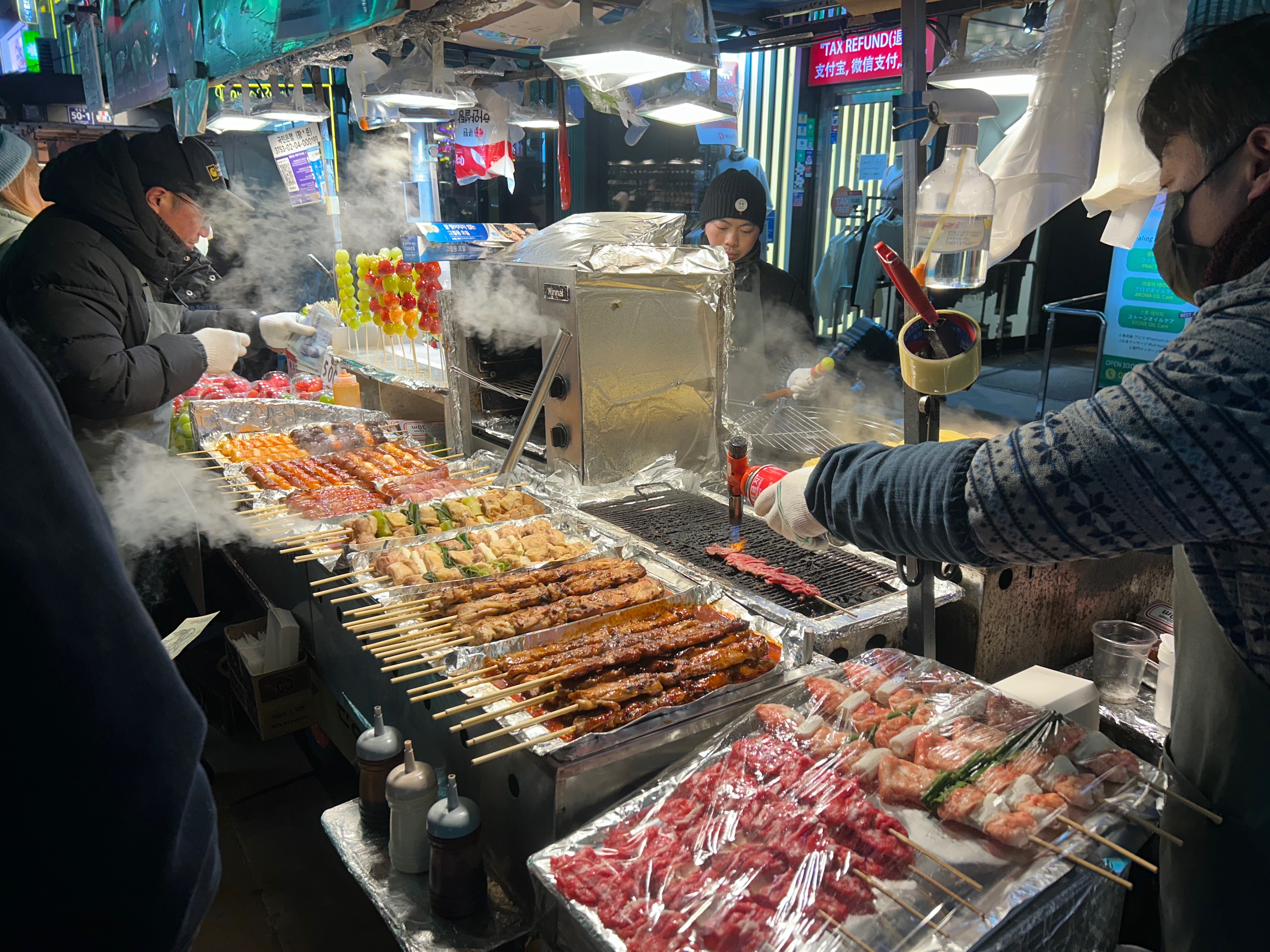
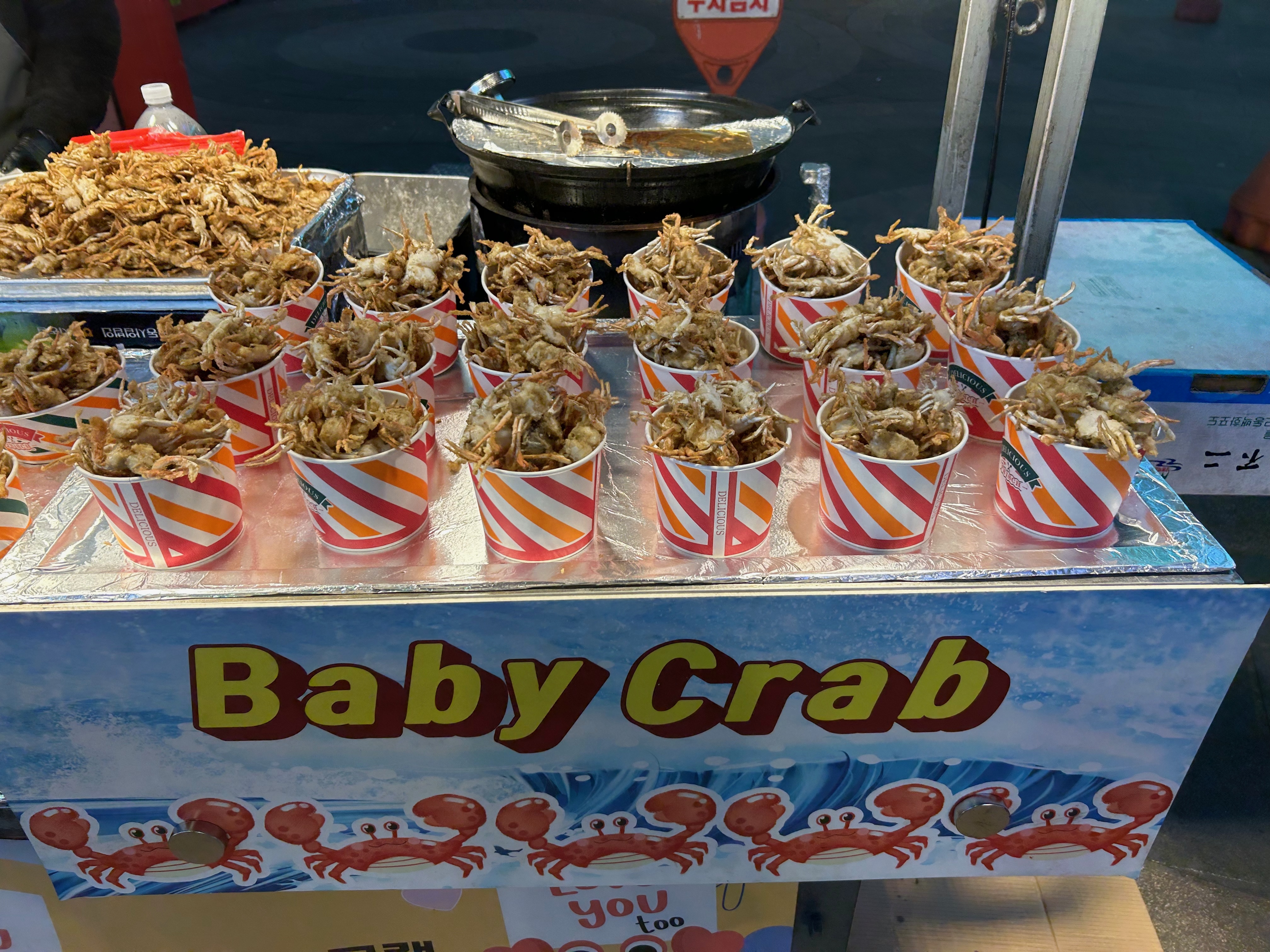
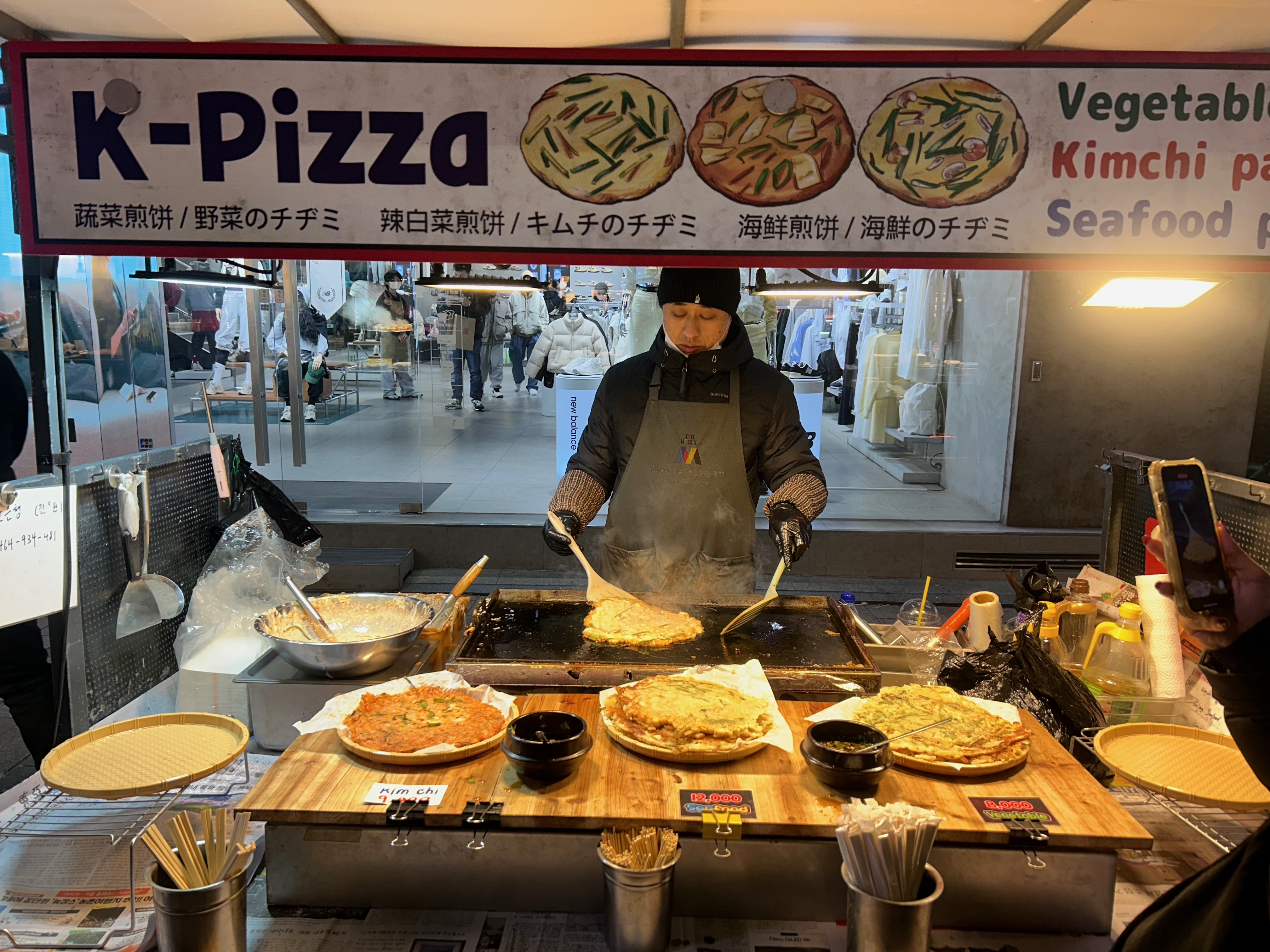
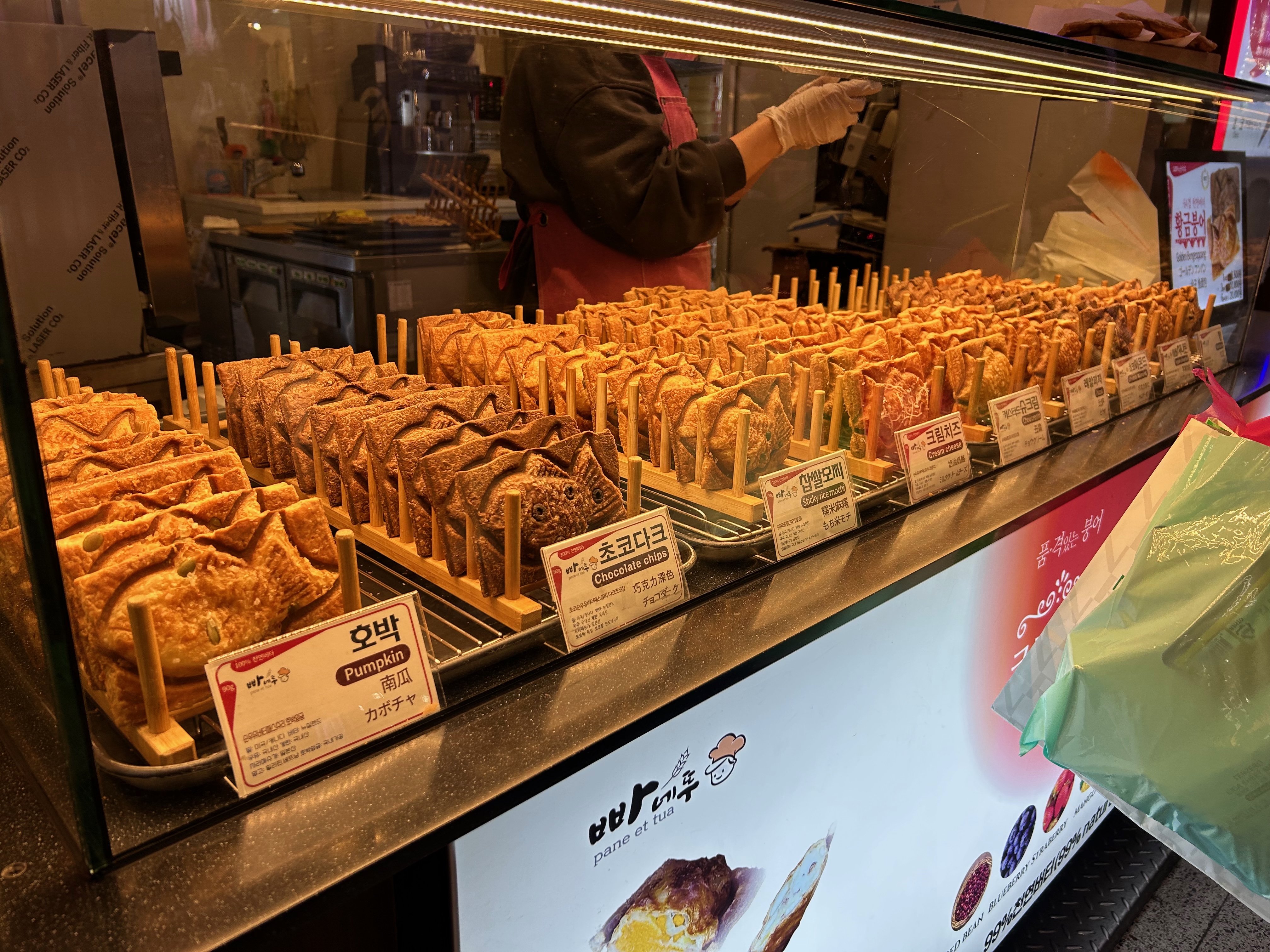 Right: The fish filled with custard is very popular here!
Right: The fish filled with custard is very popular here!
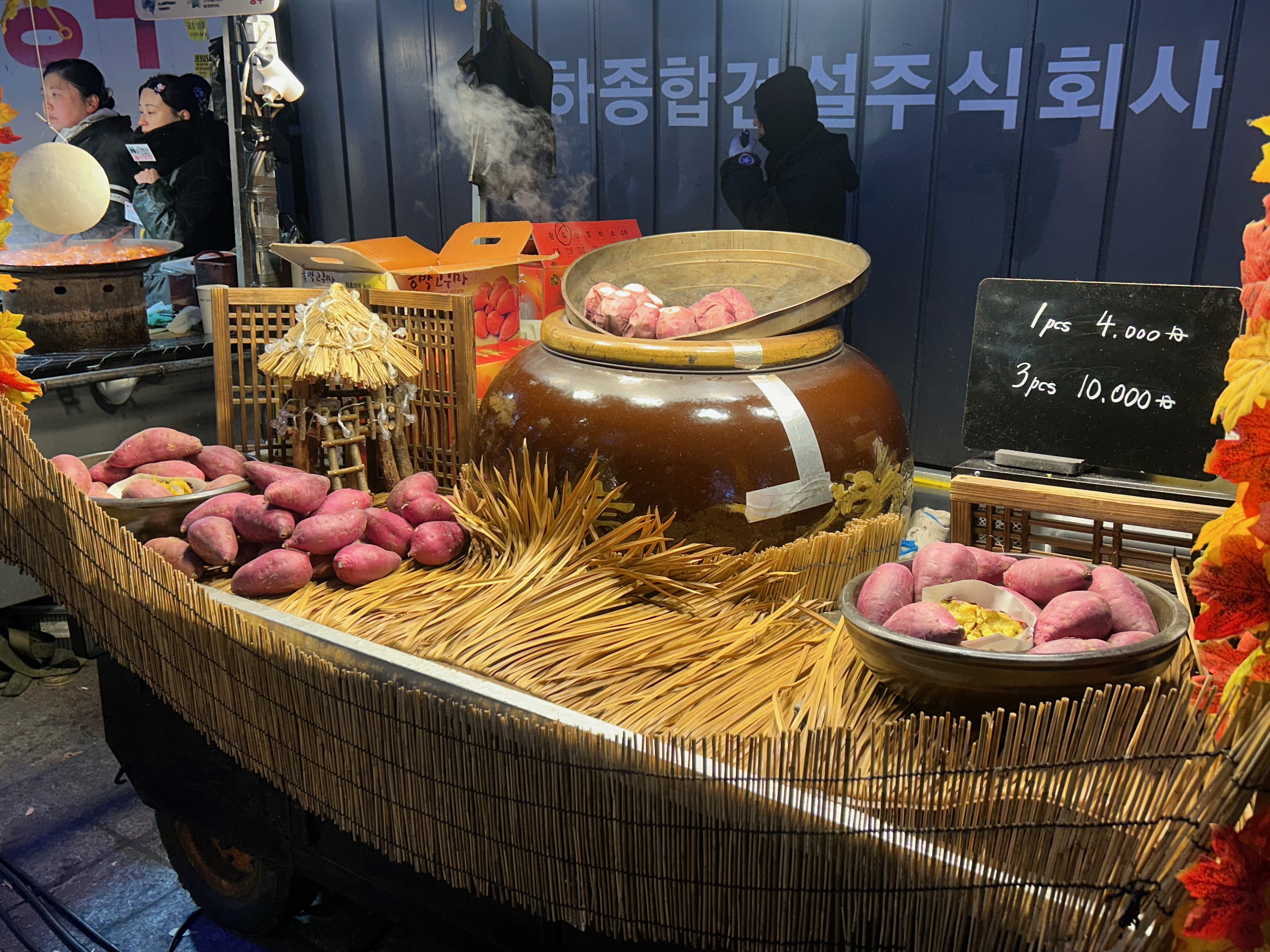
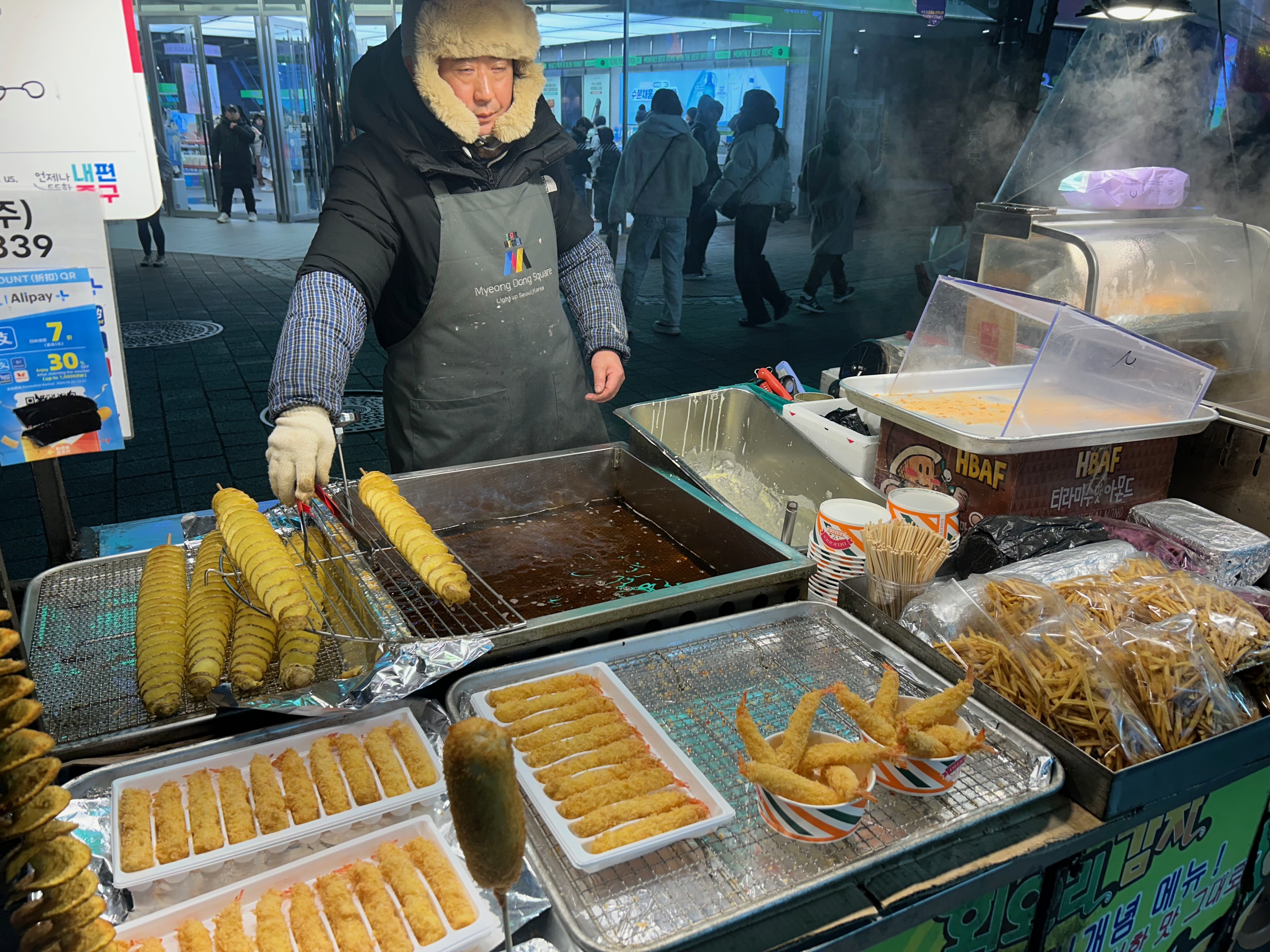
DMZ: A glance at North Korea
I started day two with a DMZ Tour.
After WW2, Korea was sandwiched between the socialists of Soviet Union / China, and the capitalists of America. The country was divided, and two separate governments were formed.
The North attacked, where the South only had a tiny piece of the island left. But then the UN troops intervened. The forces led by America’s general MacArthur landed in Incheon near Seoul, and pushed the communists back all the way to the border of China and Russia.
The civil war waged between 1950 and 1953, before a treaty got signed which created the Demilitarized Zone.
After about an hour drive, we made it to our first stop out of the four!
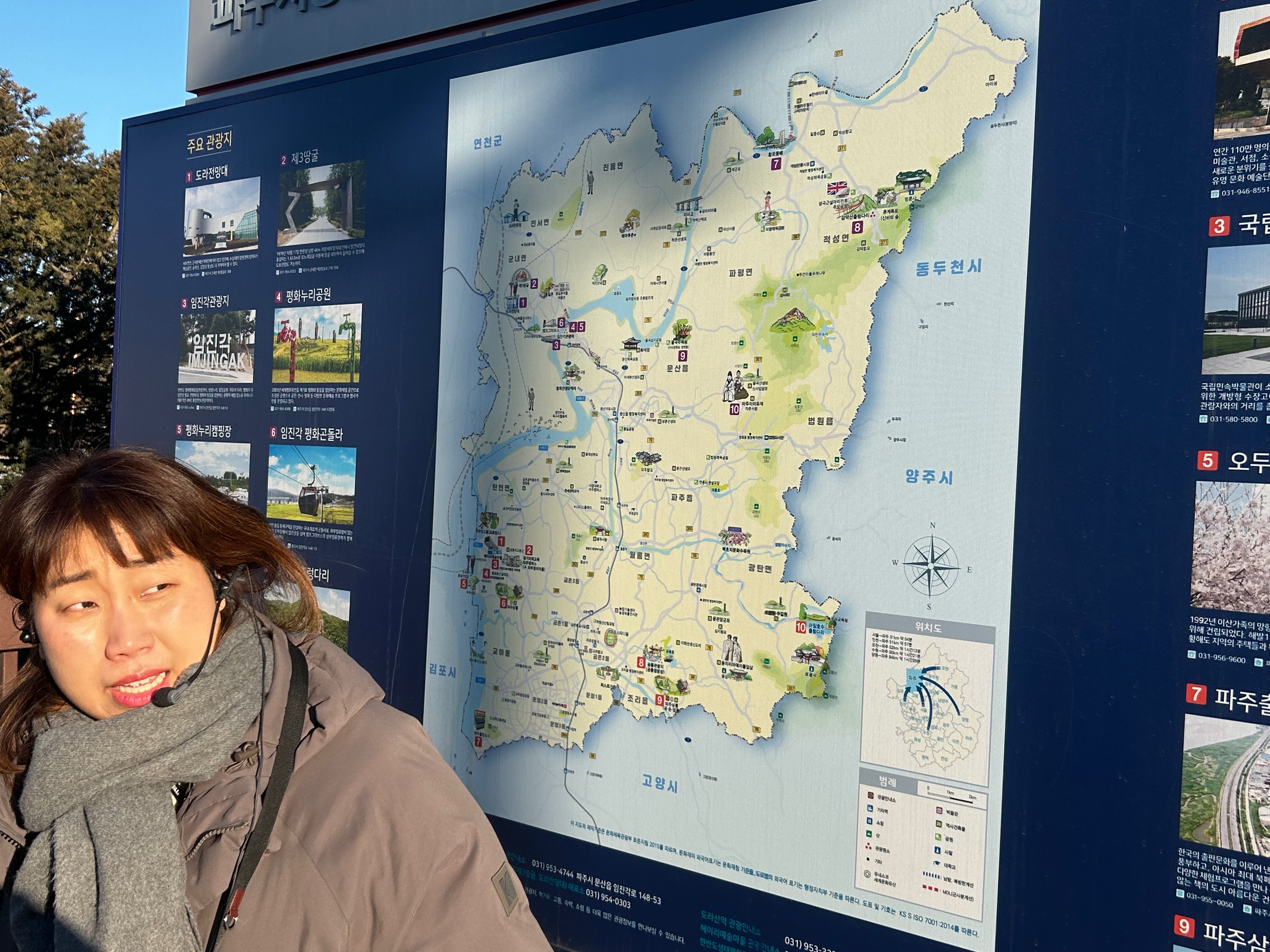
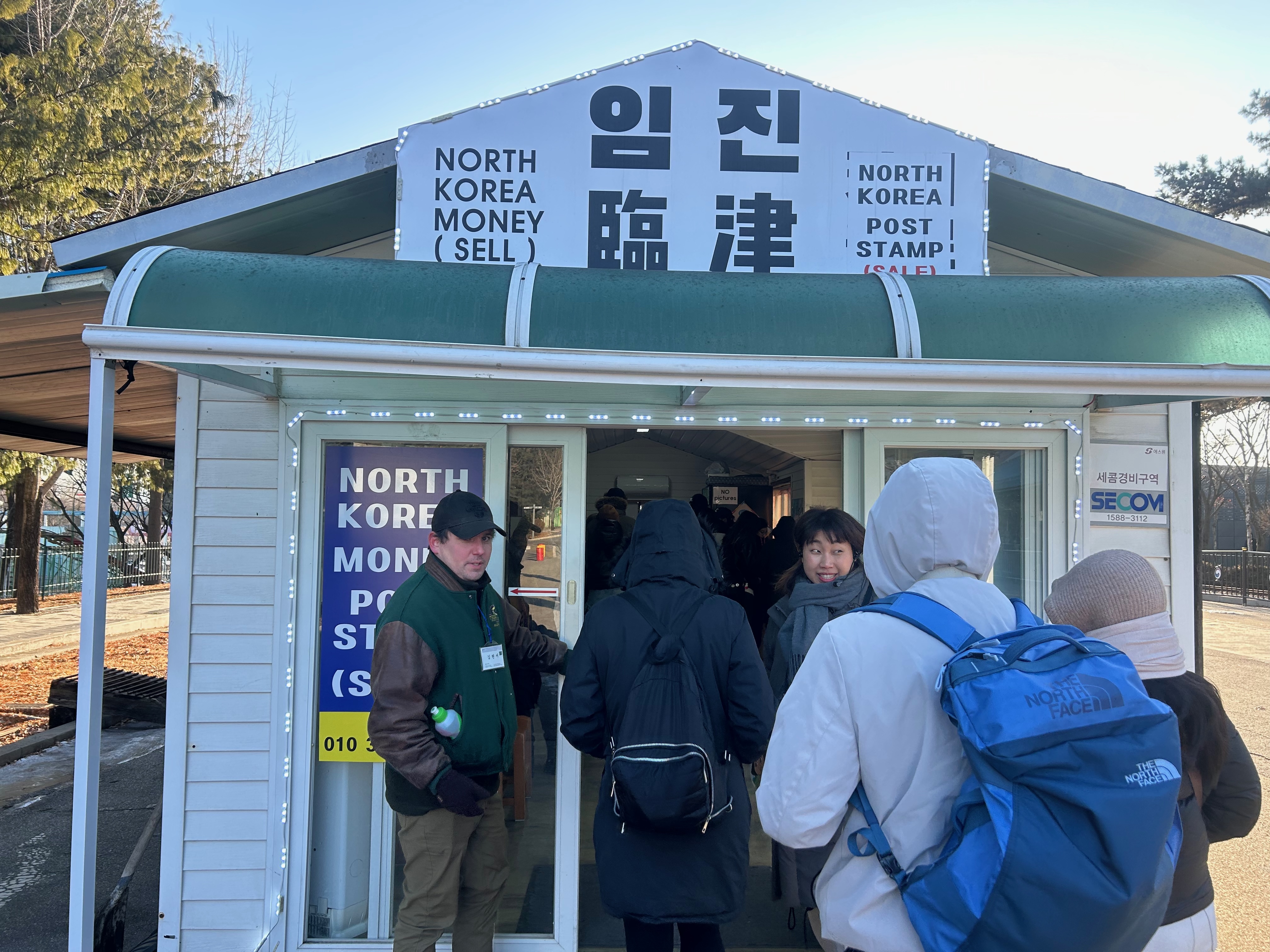 Left: A map of Paju, the province; Right: A shop that sold all kinds of North Korean currency and stamps
Left: A map of Paju, the province; Right: A shop that sold all kinds of North Korean currency and stamps
We saw the Freedom Bridge, where the prisoners of war are exchanged between the 2 countries, as well as an old railroad, which connects the countries, that got blown up recently.
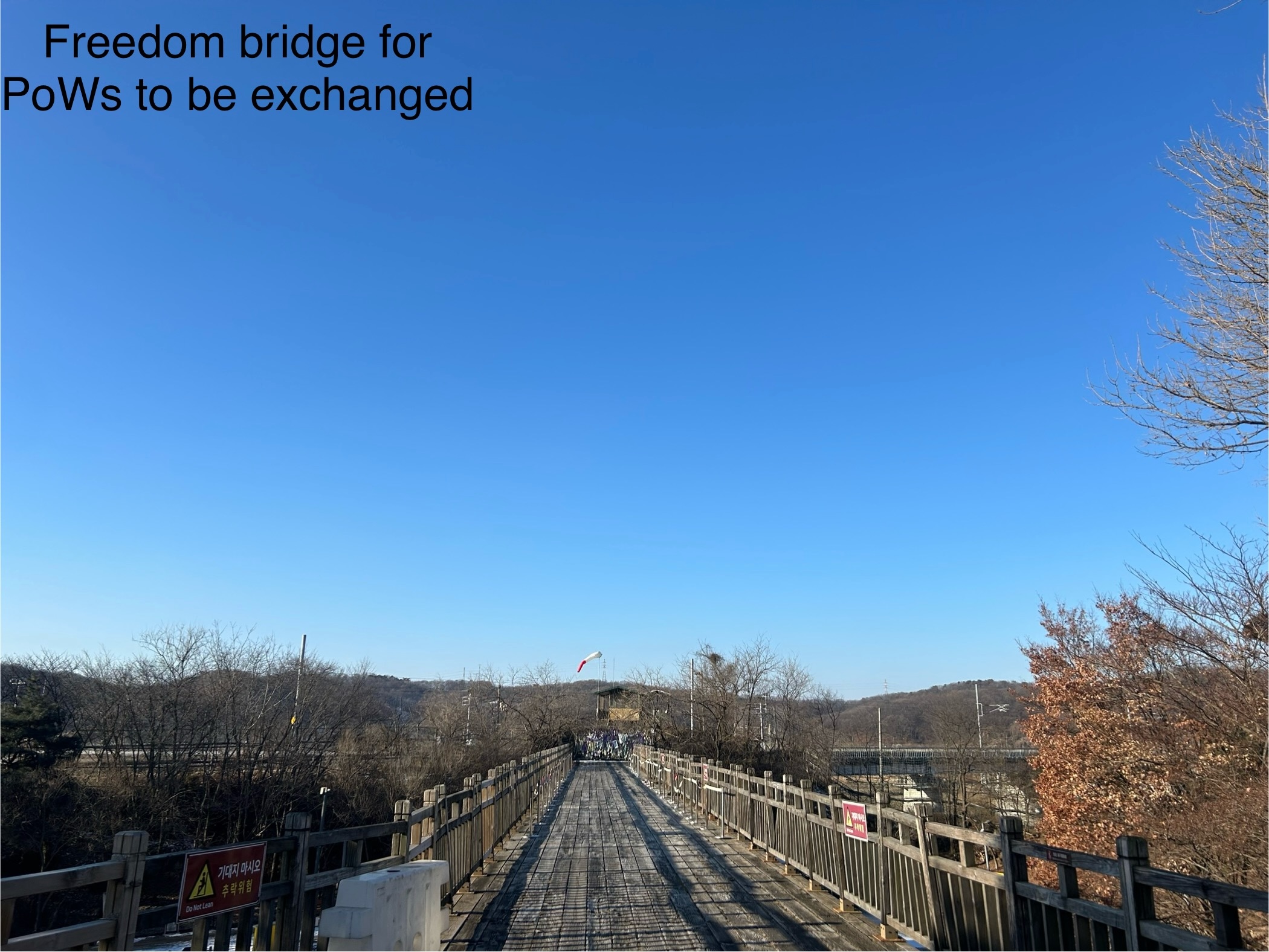
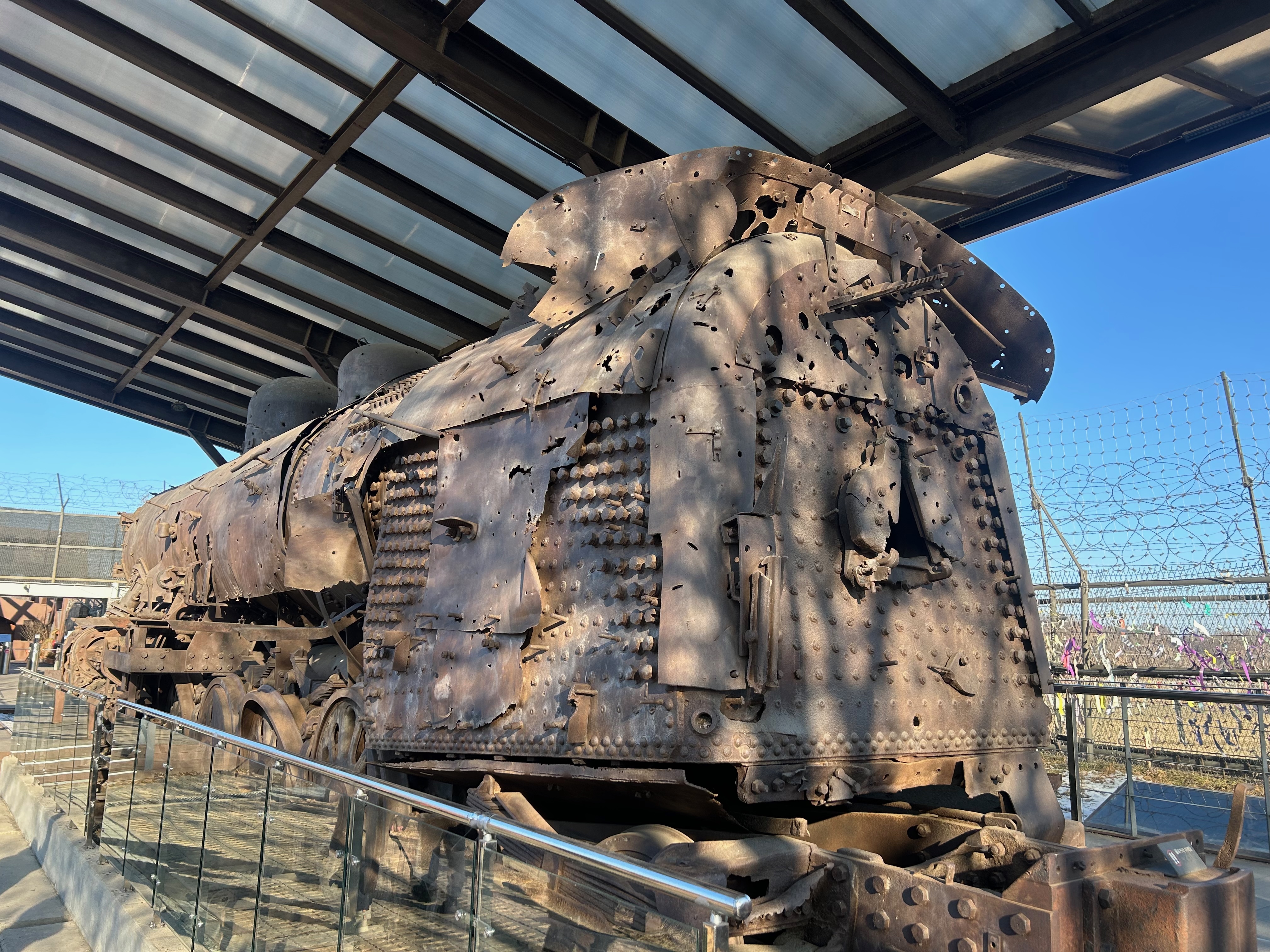
Our second stop was at the observatory. Unfortunately pictures were not allowed. Soldiers came on board the bus to check everyone’s passports.
In the new observatory, we saw North Korea.
There are giant flag poles of both countries’ flags. There was a competition won by the North, where every few months, the countries would make a taller flag pole.
We saw Gaeseong city in NK in the distance. Behind Gaeseong there is a hollywood like sign that says NK #1.
There is a paved road between NK and SK. SK corporations used to employ thousands of NK for labor in the past. Unfortunately, the relationship has broken down.
There is also a signal jamming tower on the NK side, to prevent NK people from listening.
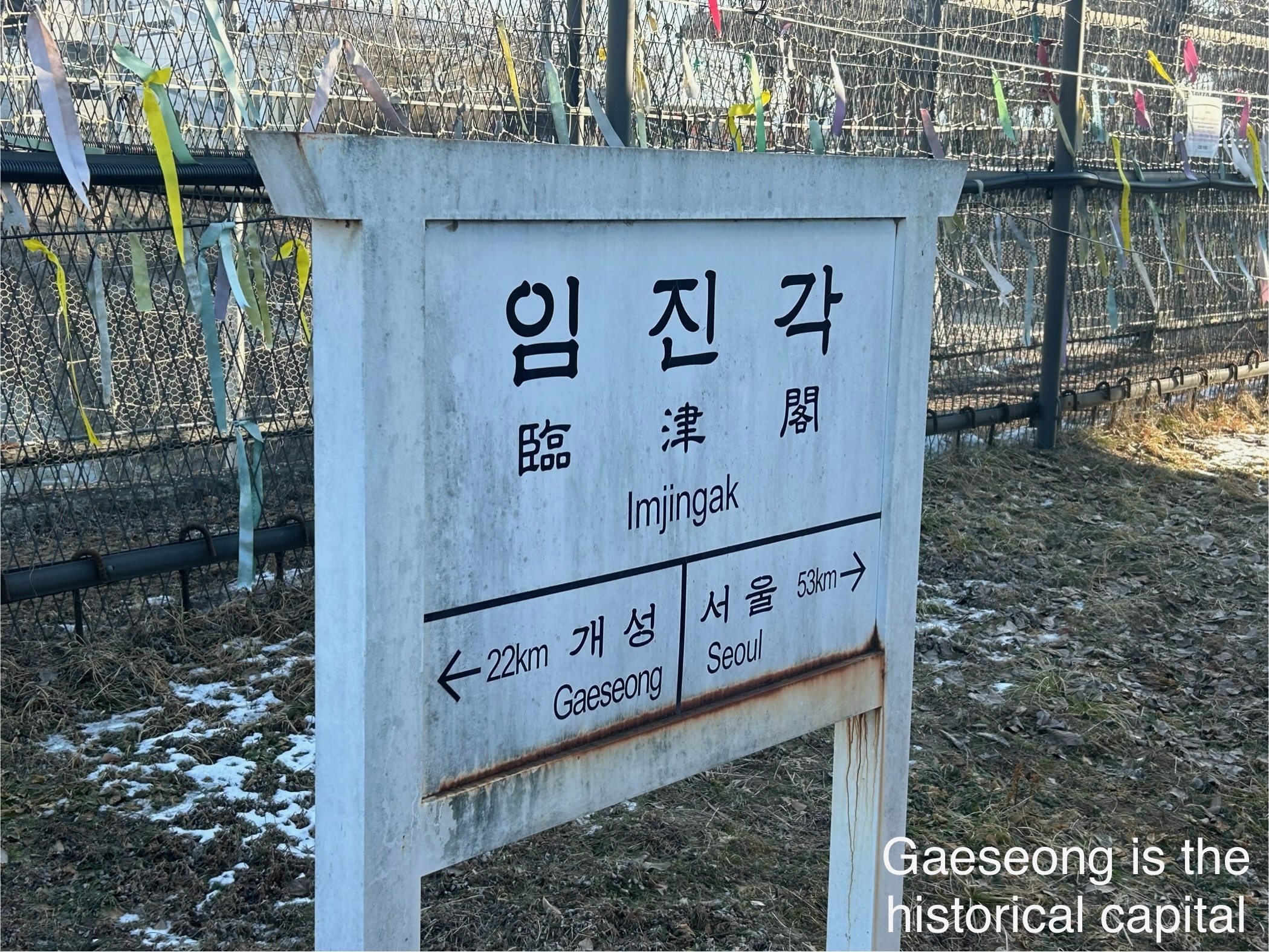
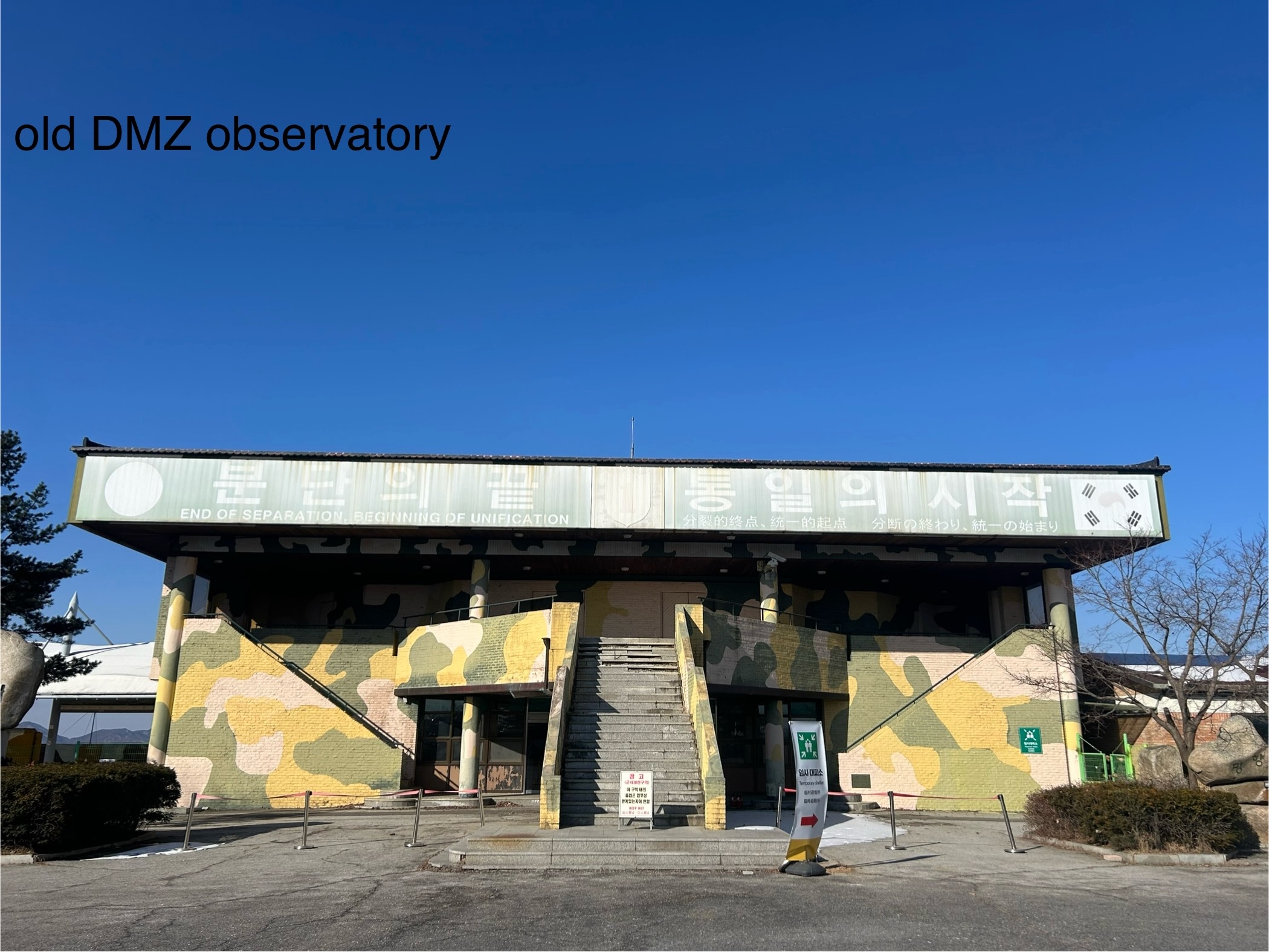
Because South Korea has twice the population of North Korea but North Korea has a larger military, mandatory military service in South Korea is 18 months starting at age 20, while in North Korea it’s 10 years starting from age 16.
Note: South Korea is so Christian that they have a Christian cross facing North Korea near the observatory 😅. Propaganda is strong across both sides.
Our third stop was at the third tunnel.
We were told that NK had dug 4 tunnels that were discovered. The third tunnel is 70 meters deep. It was discovered when a North Korean defector (who was an engineer) escaped.
Our group wore hard hats and walked down the tunnel. The trip down had an incline, with water constantly dripped in the tunnel.
At the very end of the tunnel, we could see a light on a sealed part of the tunnel. We were told that the North Koreans said it was for coal mining, and applied a lot of coal around the tunnel. We saw a light, and small amounts of green moss growing in the distance.
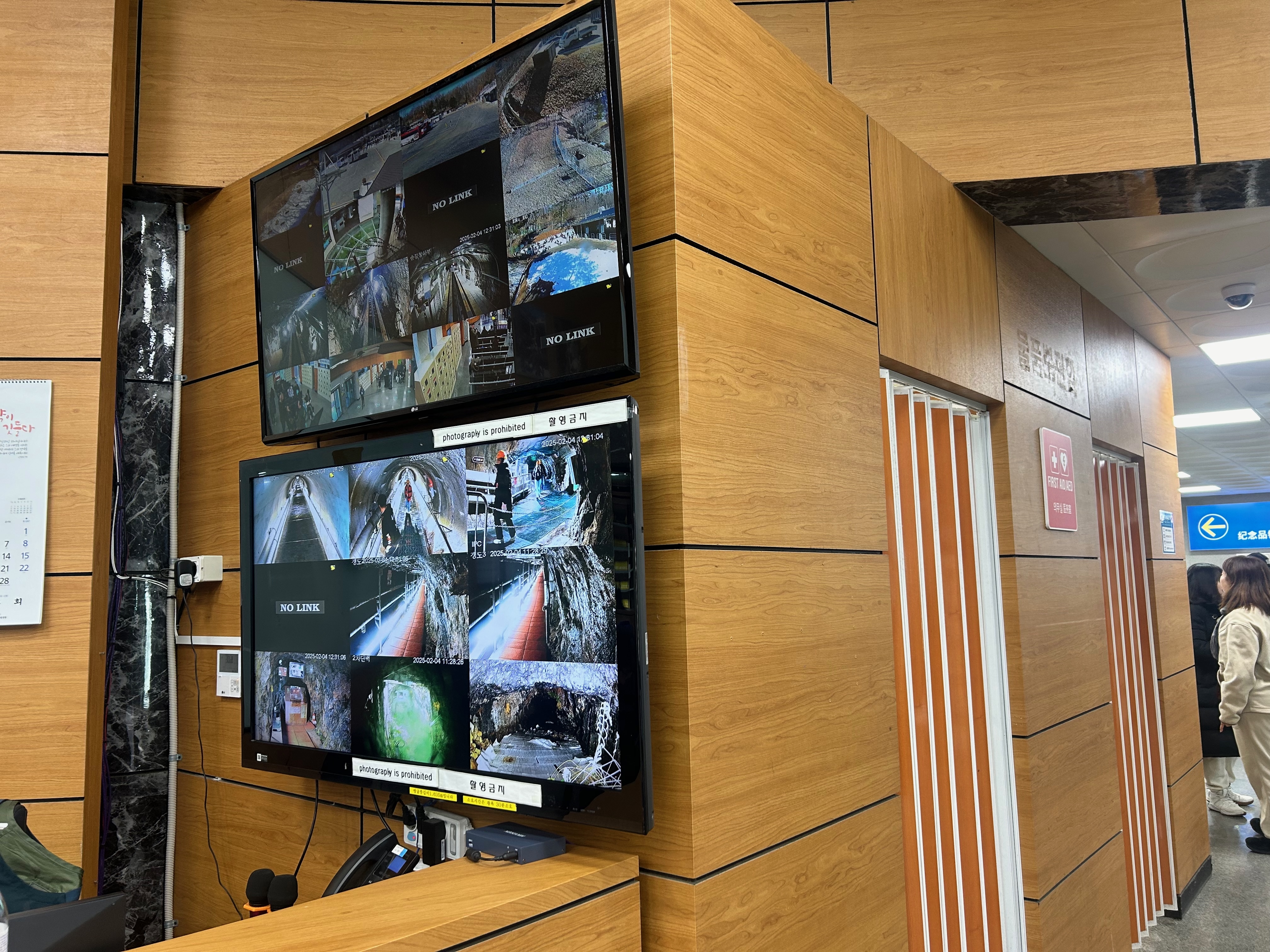
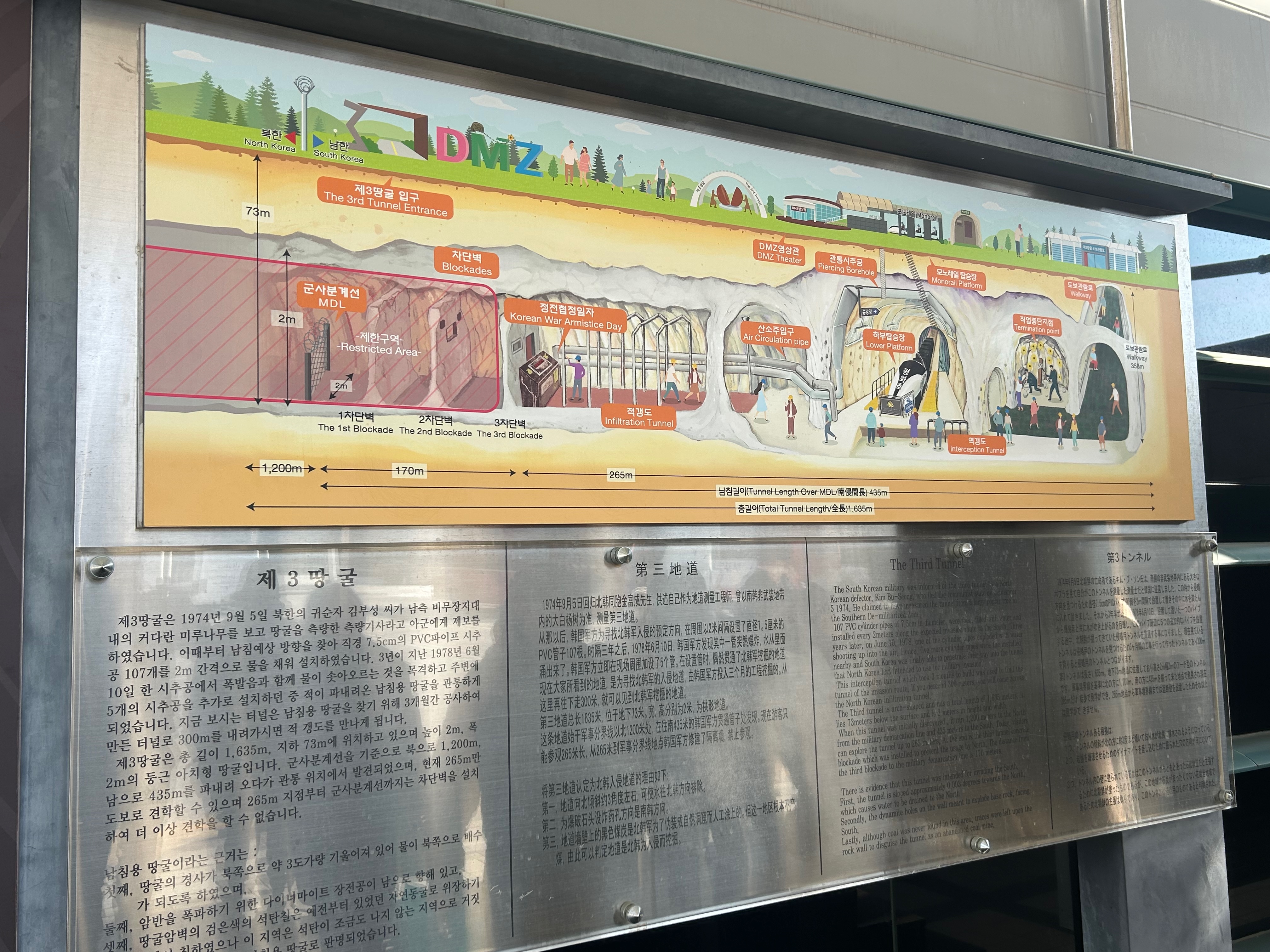 Left: Monitor of the tunnel
Left: Monitor of the tunnel
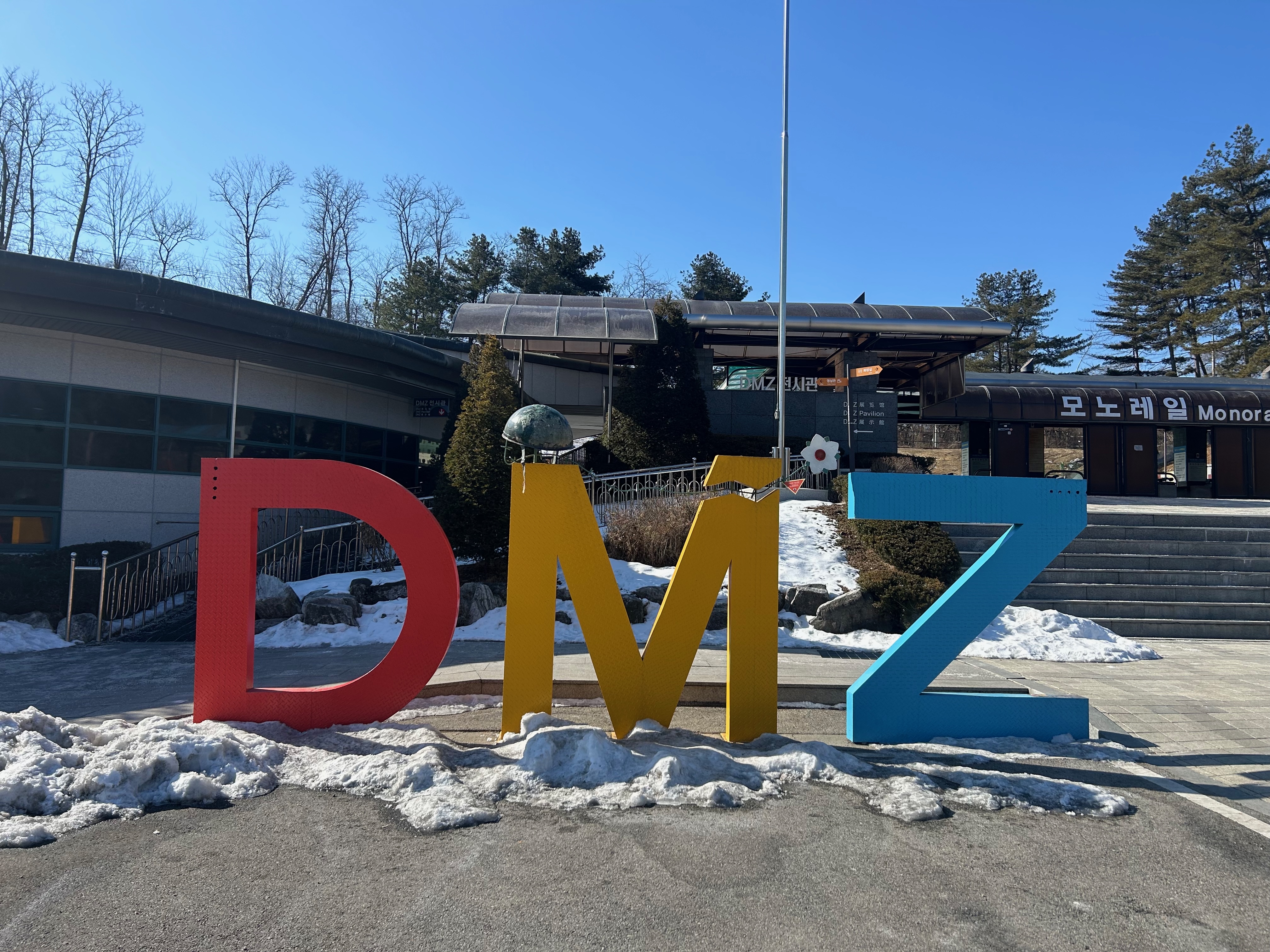
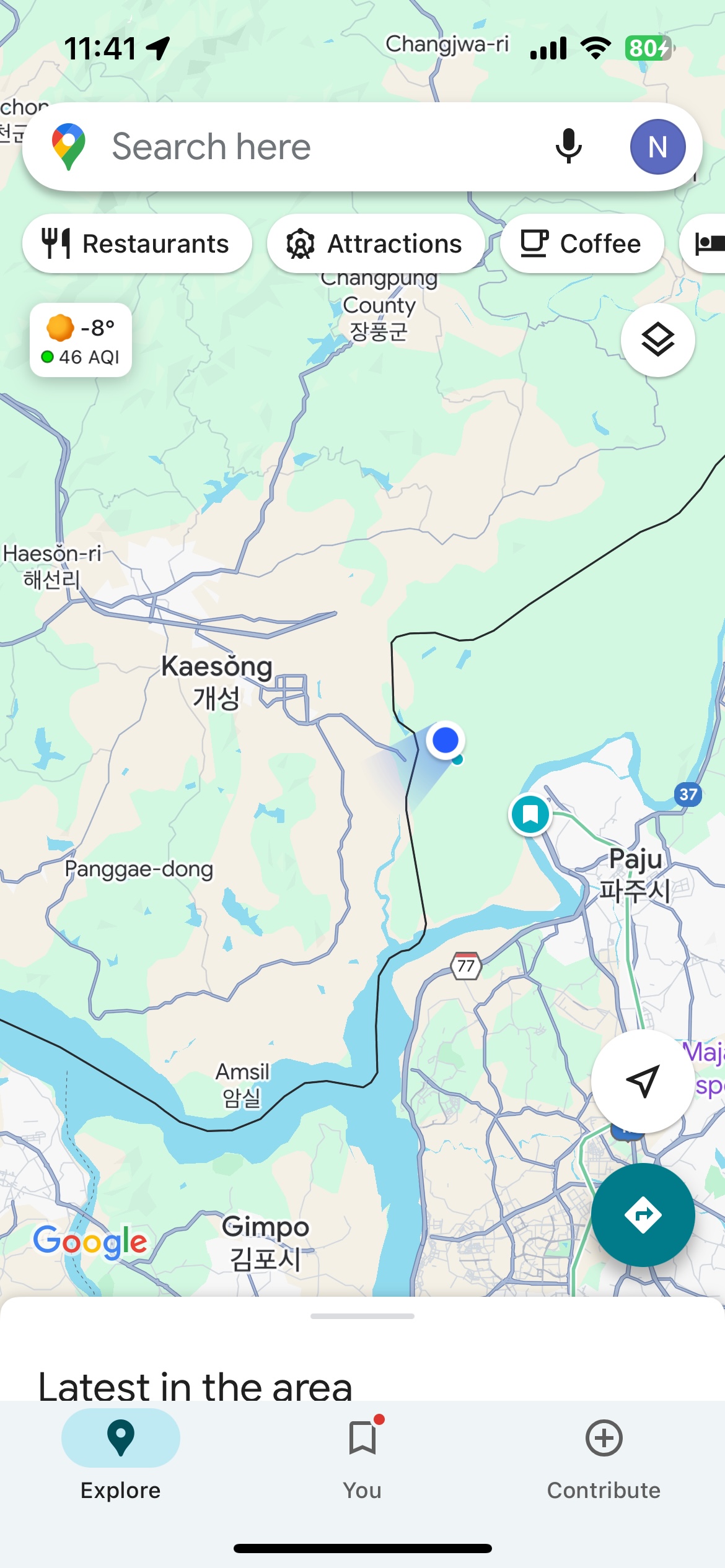 Right: I was so close to the border!
Right: I was so close to the border!
I learned that until 2018, Pyongyang Time was half an hour behind Seoul. This was unified in 2018 during Inter Korean Summit.
Our fourth and last stop was at Unification Village. The DMZ has farmers who grow crops like rice and red beans. If South Korea and North Korea ever unite, this will be the first village to be united, which gave the village its name.
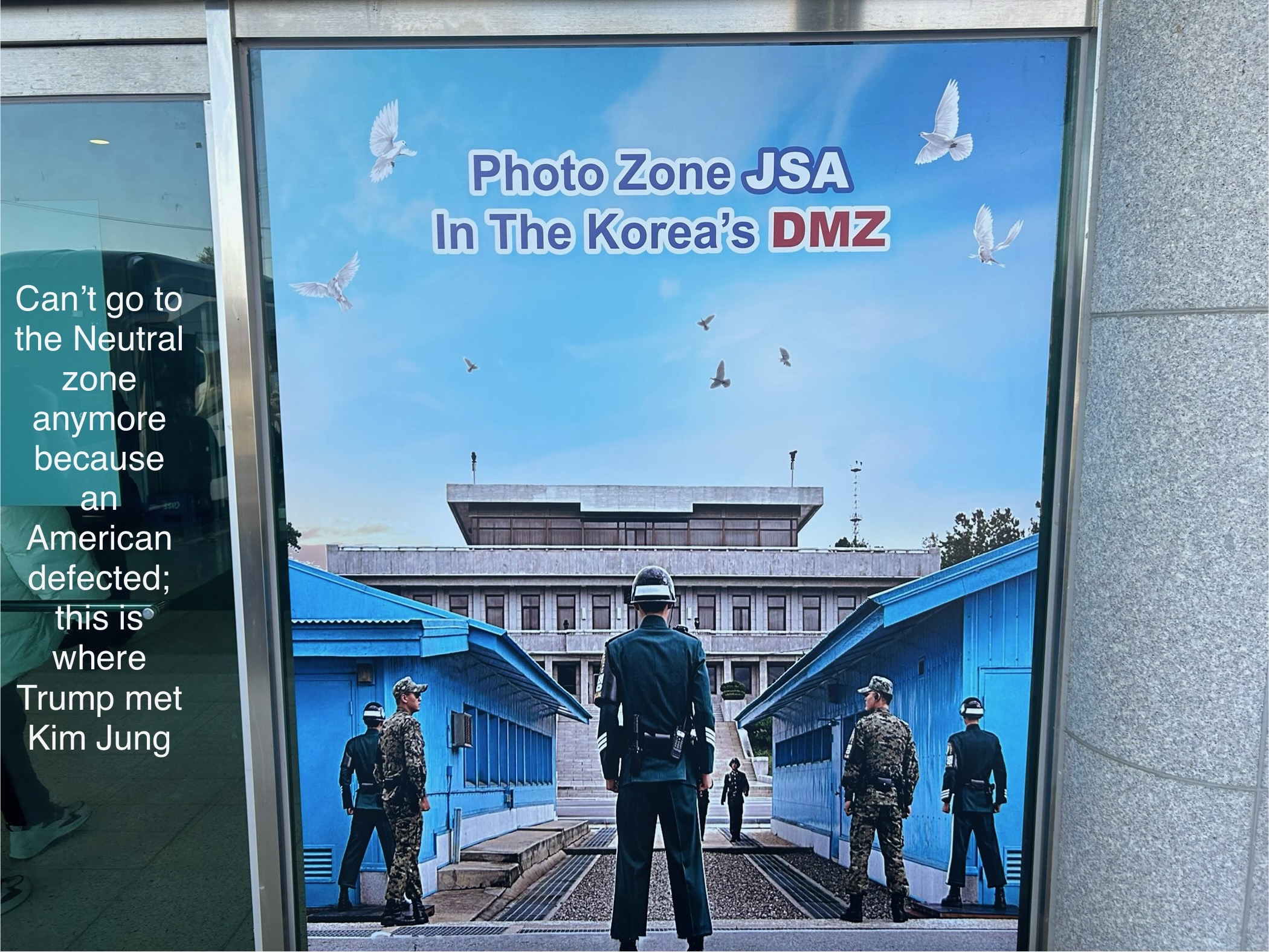
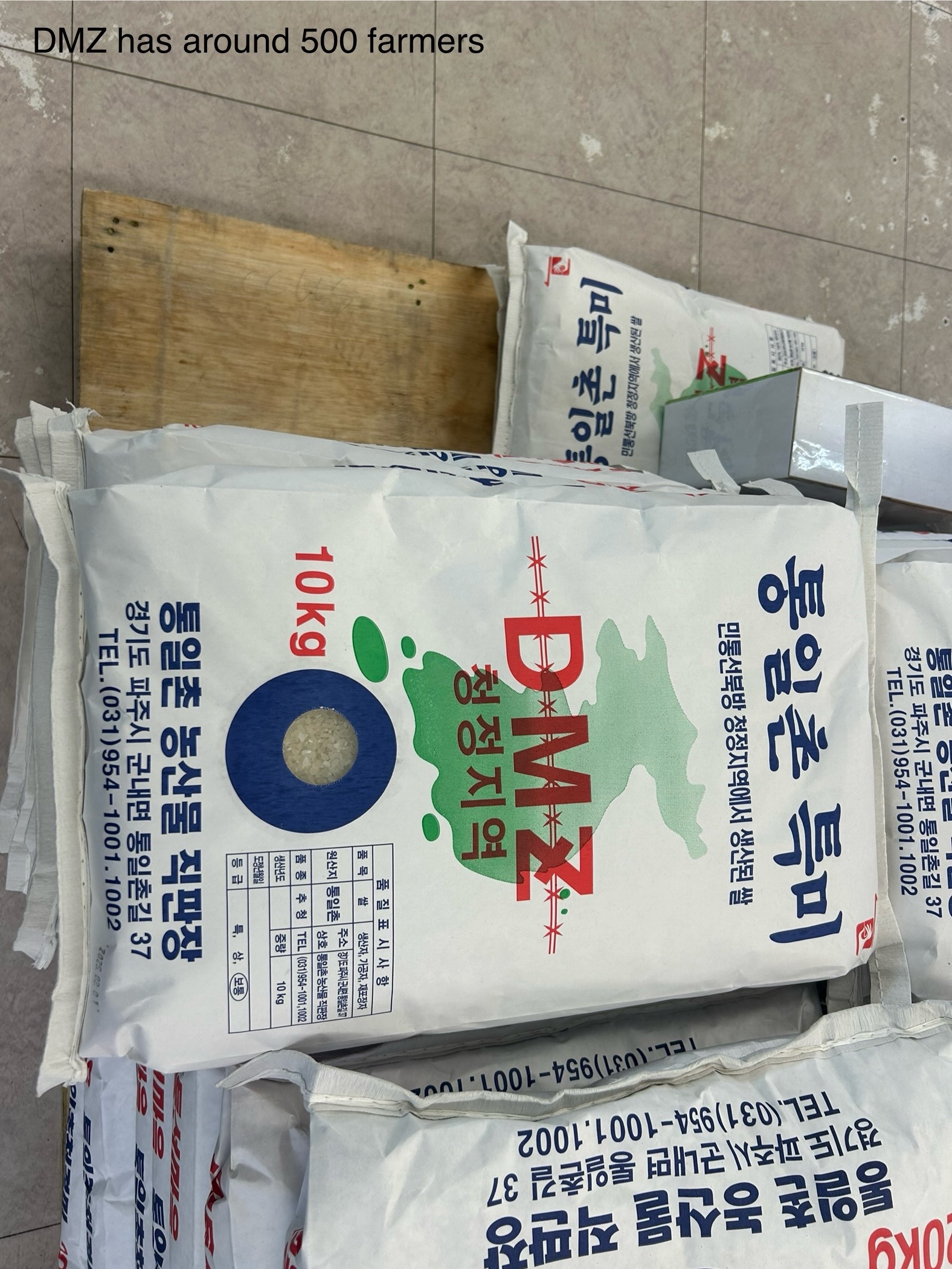
Tourists could visit the Joint area (JSA) area before. This is where USA’s Trump previously stepped into North Korea to meet Kim Jung Il. (Side note: our tour guide passionately hated KJI). Unfortunately in the late 2010s, an American defected to the North Korean side, and it was shut off from tourists.
The unification village shop featured rice, chocolates and ginseng.
On our way out, we learned about the story of Hyundai (which gives name to the title of this blog post).
Hyundai’s Story
The founder of Hyundai was from the North. Their family was poor and only had one cow. When his dad sold the cow, he stole the money, and ran away from home to go the South to start a new life.
Then the Korean civil war broke out. Everyone in his family but him is still in the North.
Since then, he has created an amazing Chaebol corporation, and became very rich and powerful. However, he feels guilty.
So he helped build the bridge between South Korea and North Korea, and he sent 1000 cows across the bridge to North Korea.
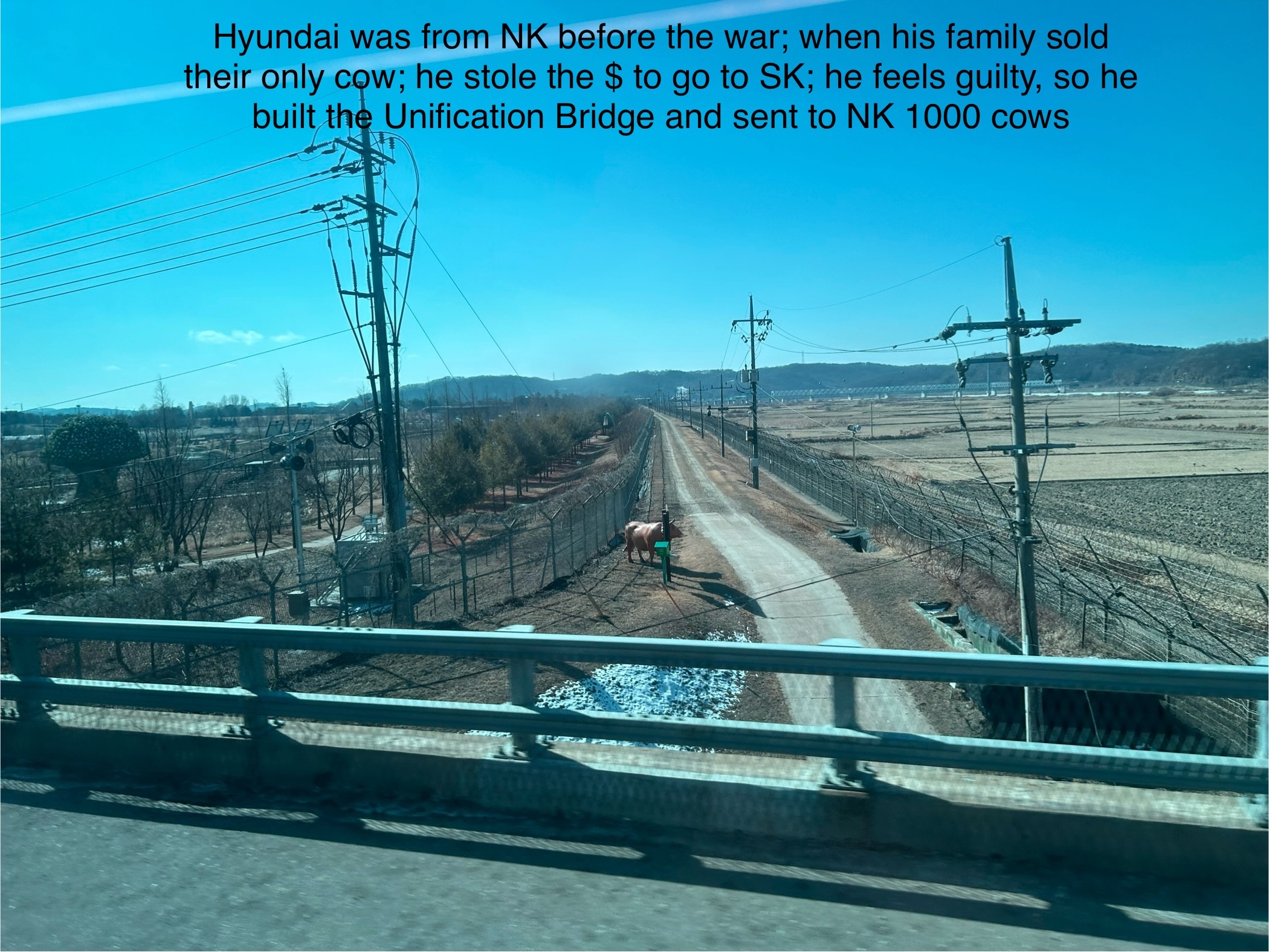
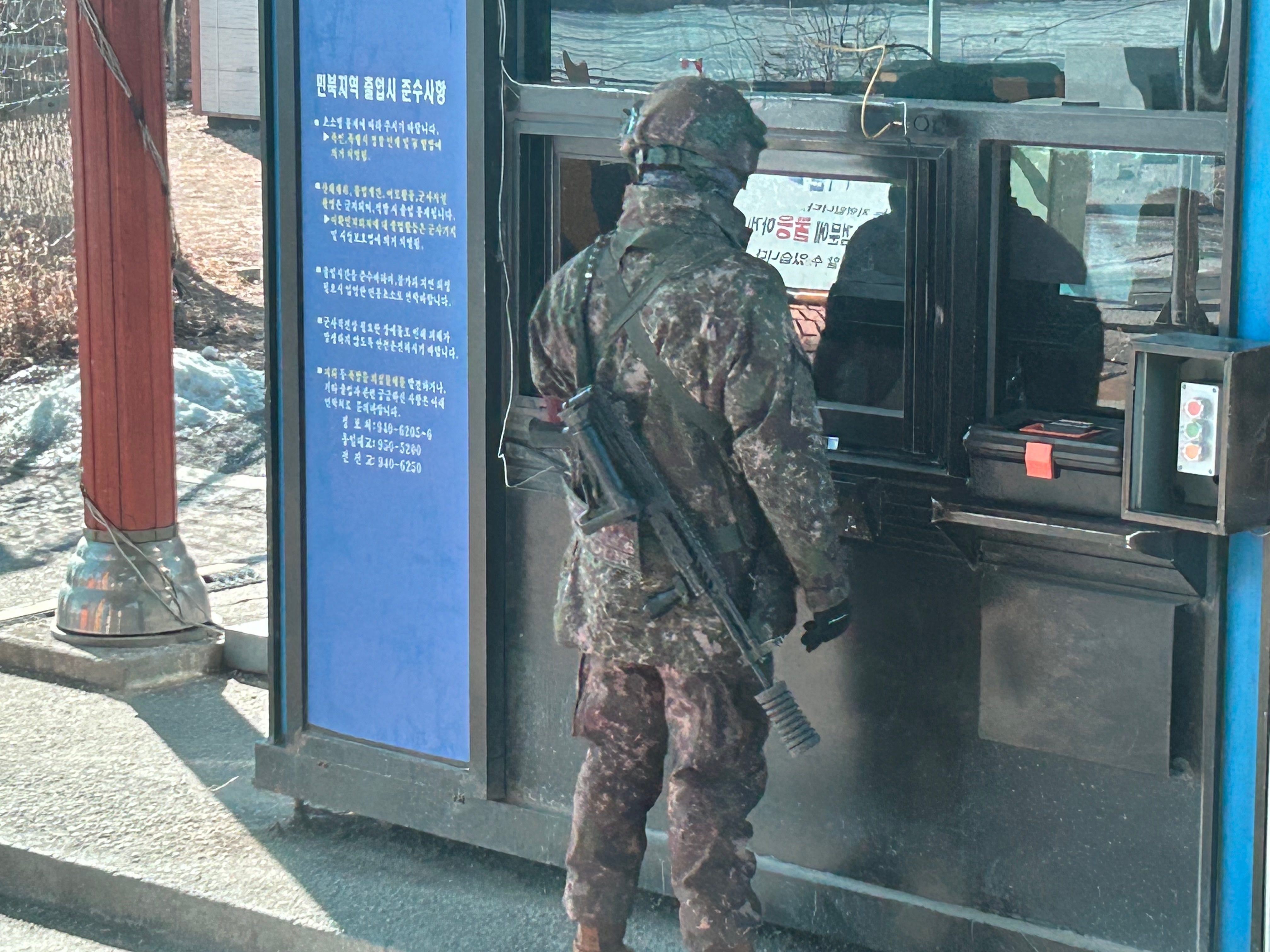 The cow statue is there by the bridge to remember what had happened.
The cow statue is there by the bridge to remember what had happened.
Life in Korea
Of course, the Chaebols are everywhere in Seoul.
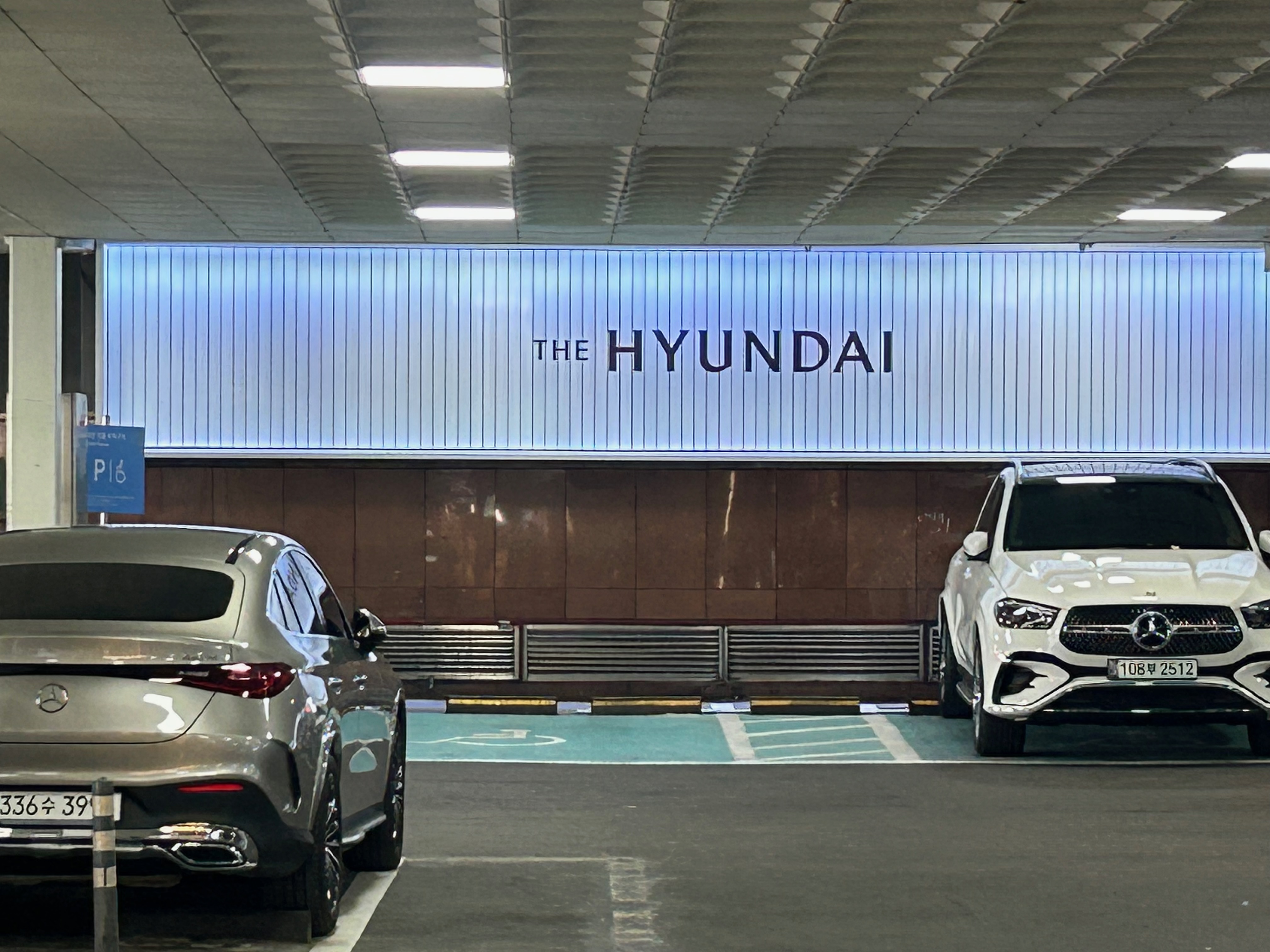
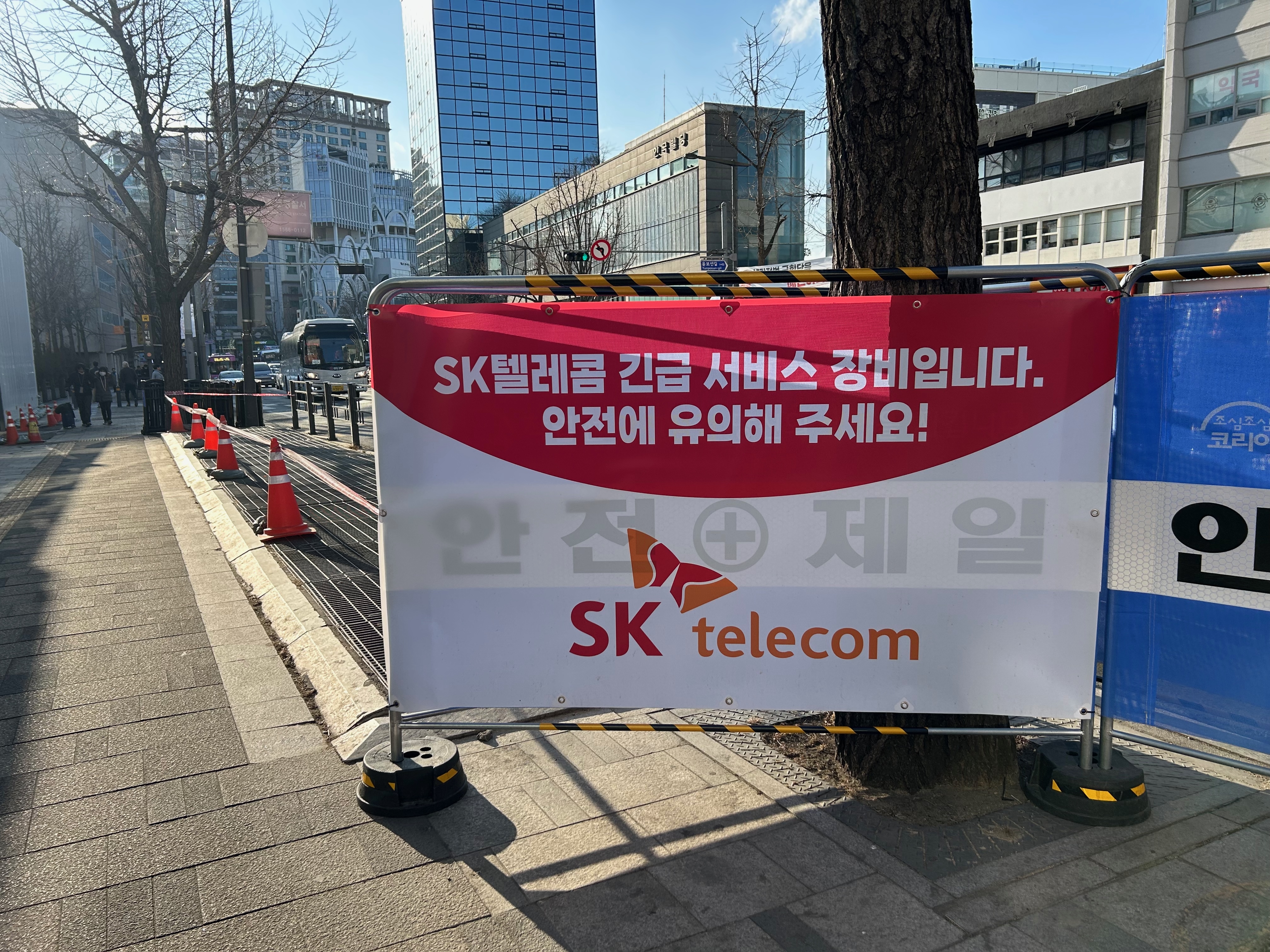
I had for sure seen SK involved in Telecom, Broadcast and Gas Stations. The Chaebols usually are massive corporations, involved in many sectors.
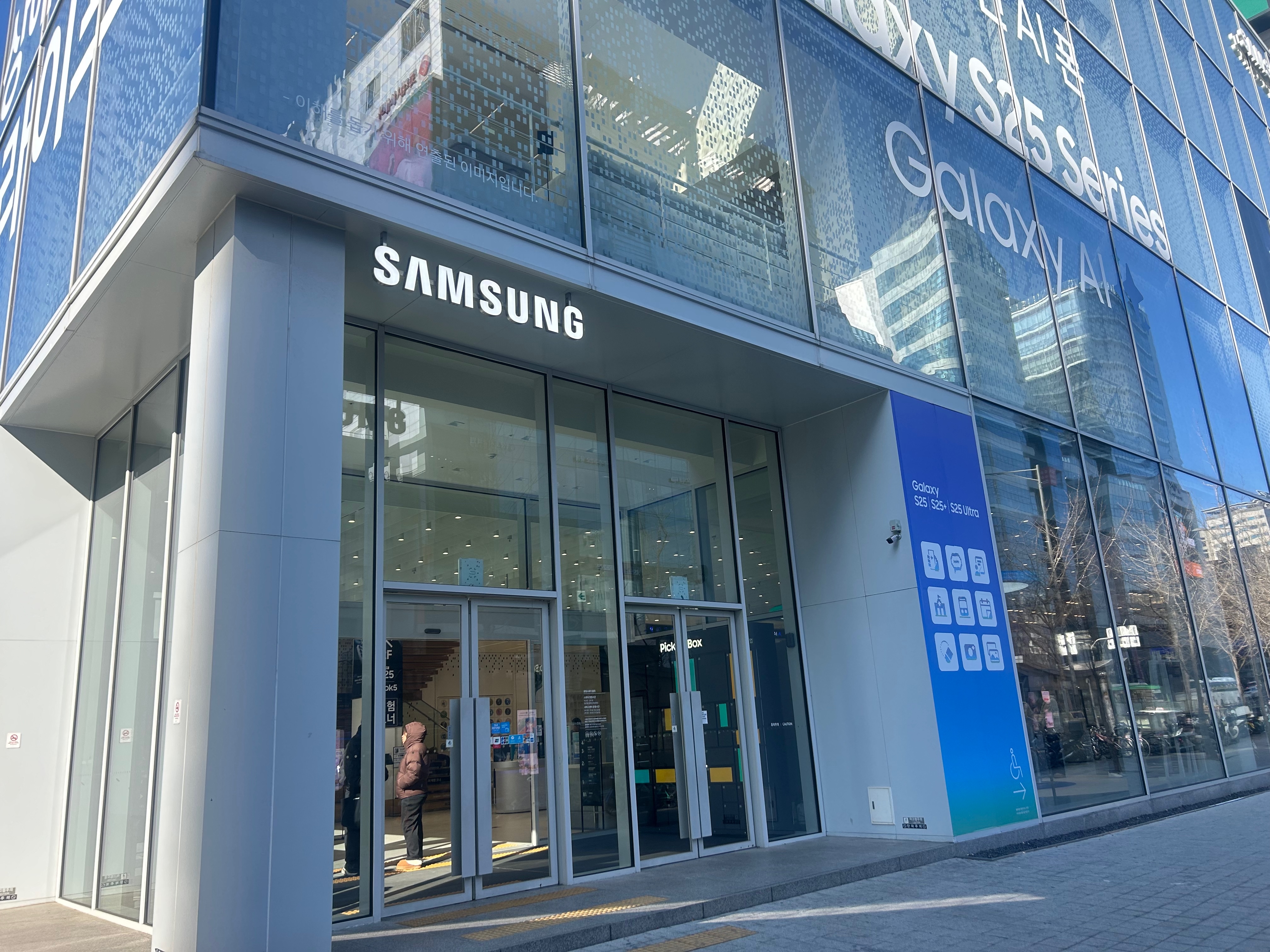
Throughout my brief time in Seoul, I saw many protests. There were many police cars around these protests as well. The current government is wildly unpopular, and there is just so much inequality here.
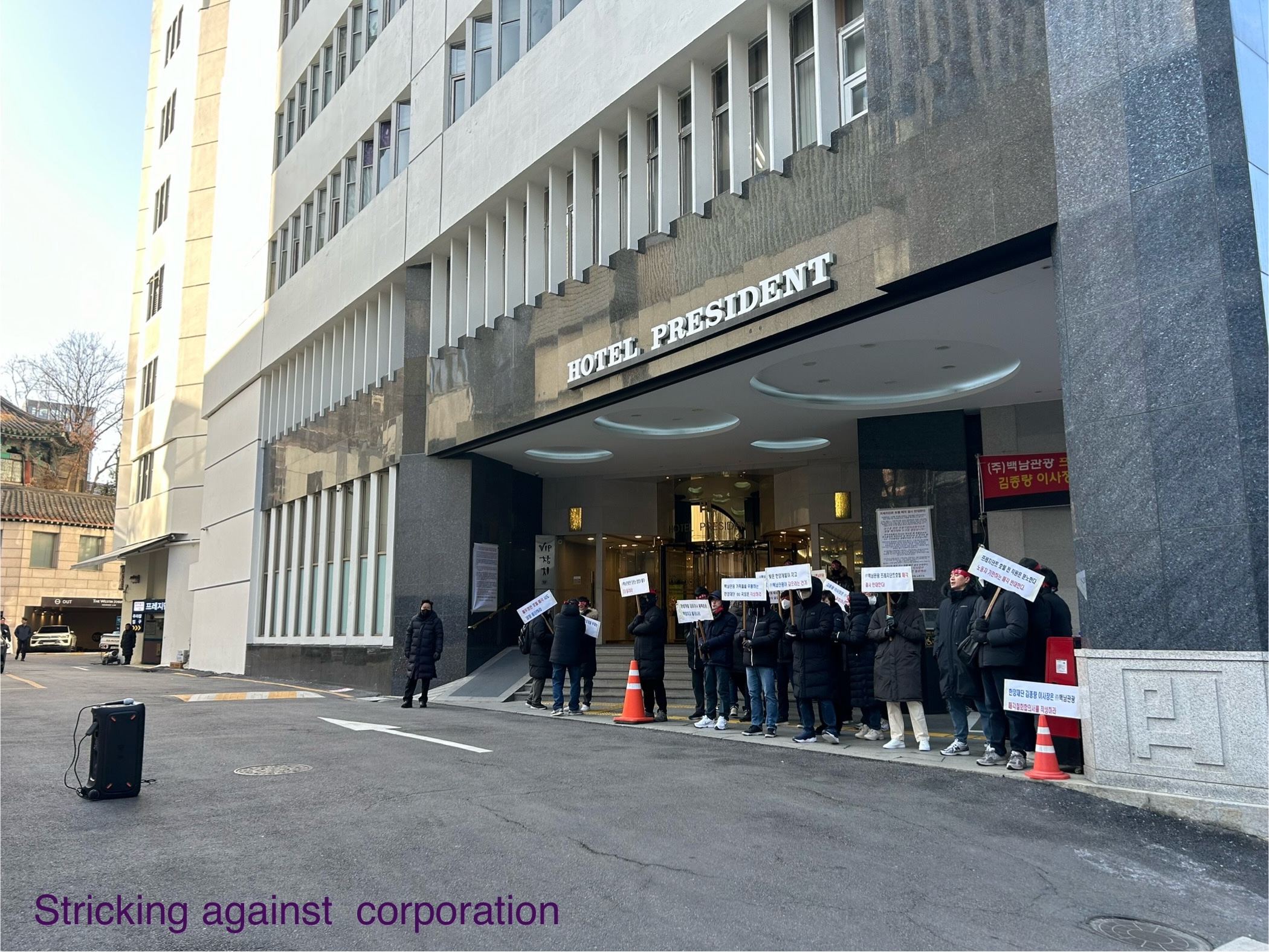
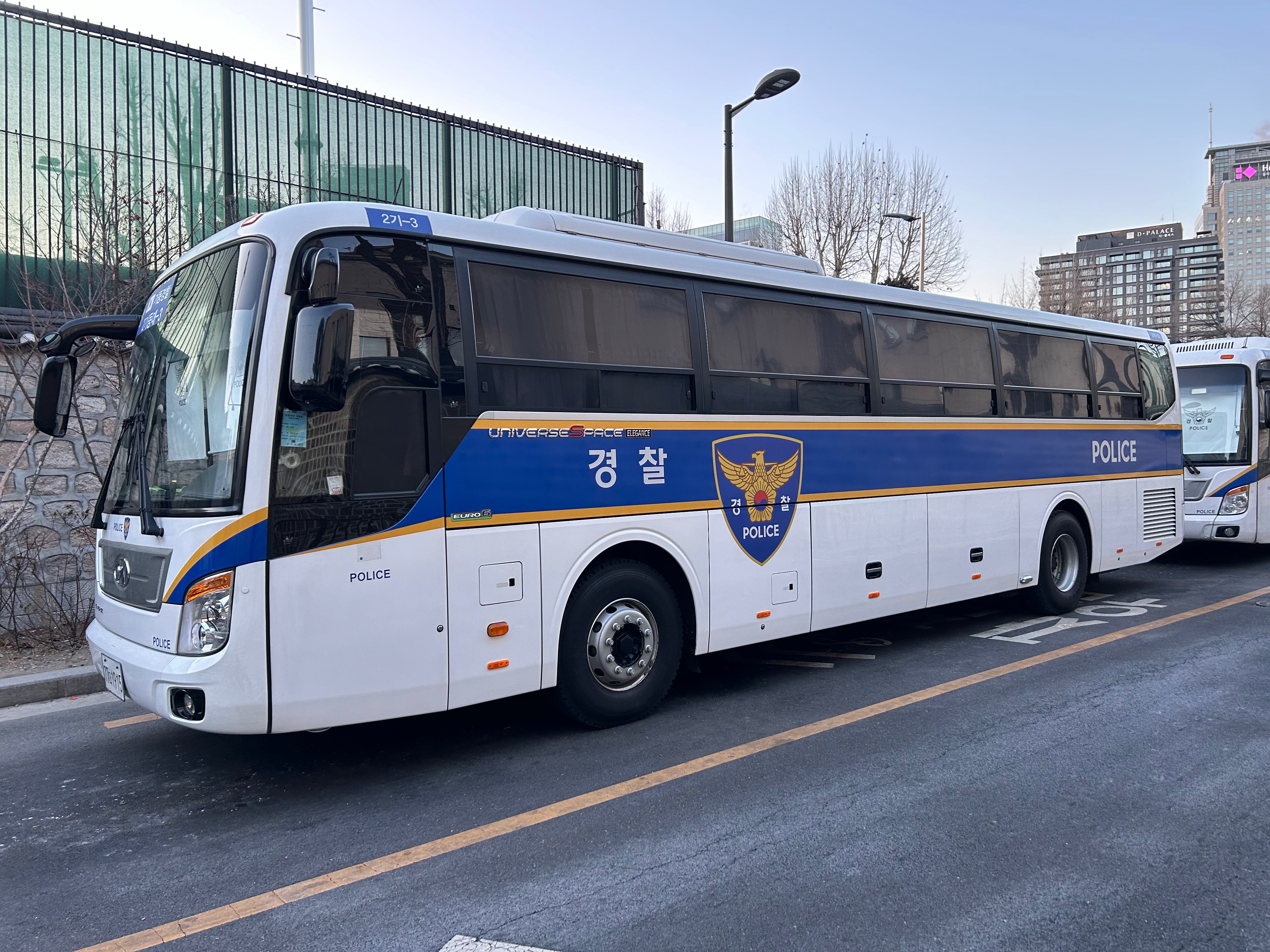
E-Sports is of course very popular here. I saw numerous displays celebrating League of Legends players from SK Telecom.
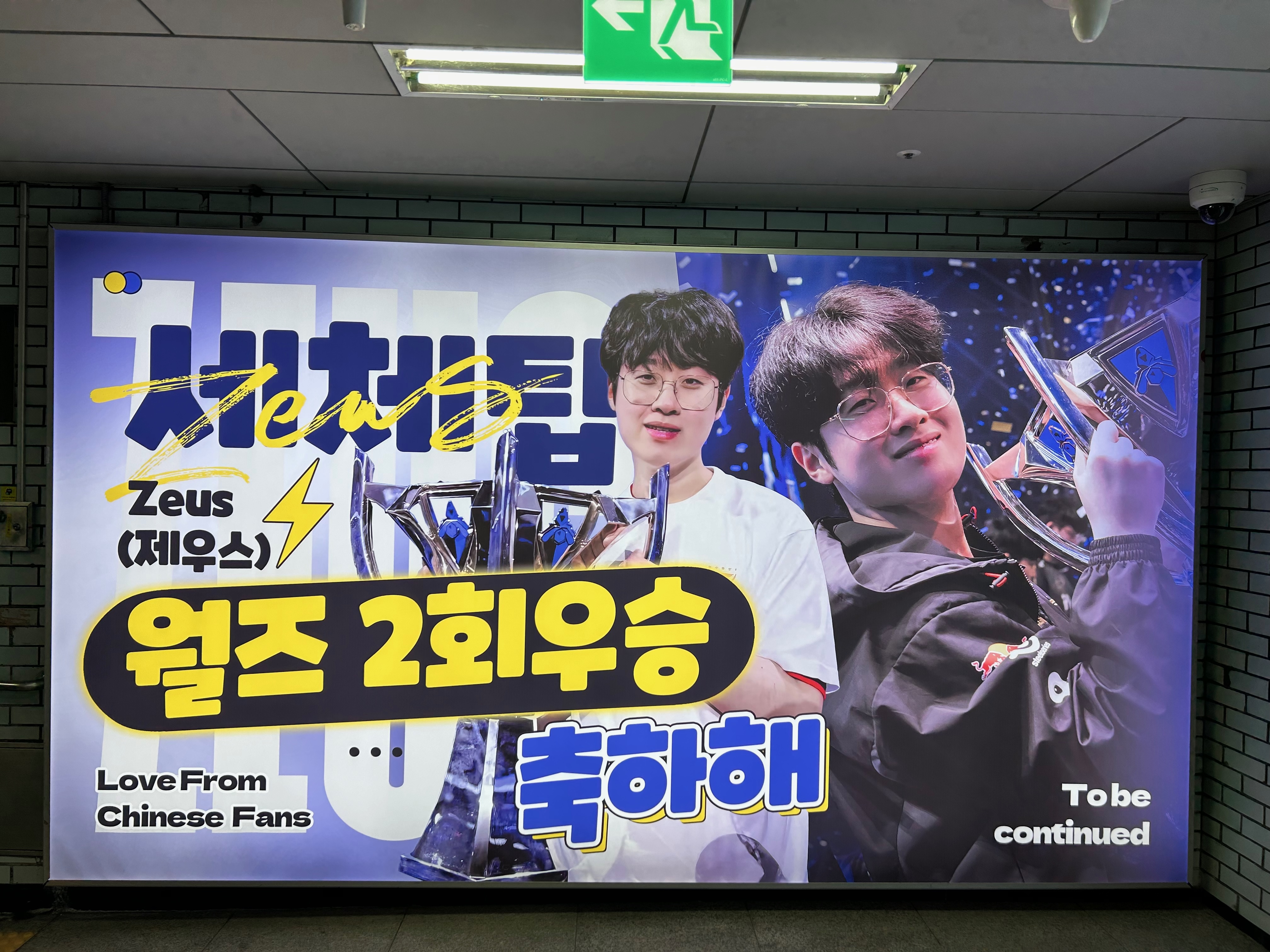
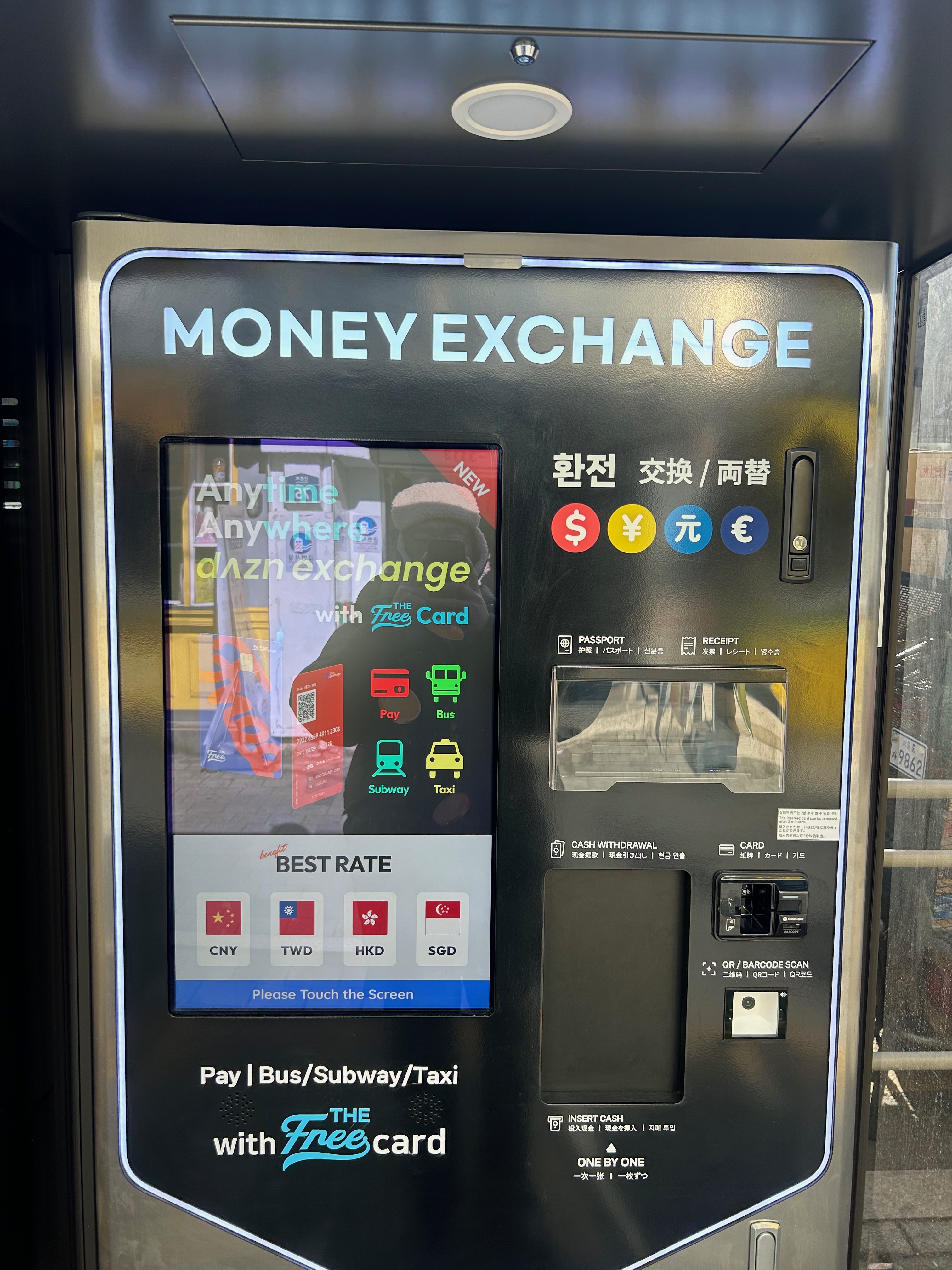 Automated currency exchange machine: super neat!
Automated currency exchange machine: super neat!
Life in Seoul is charming in its own way.
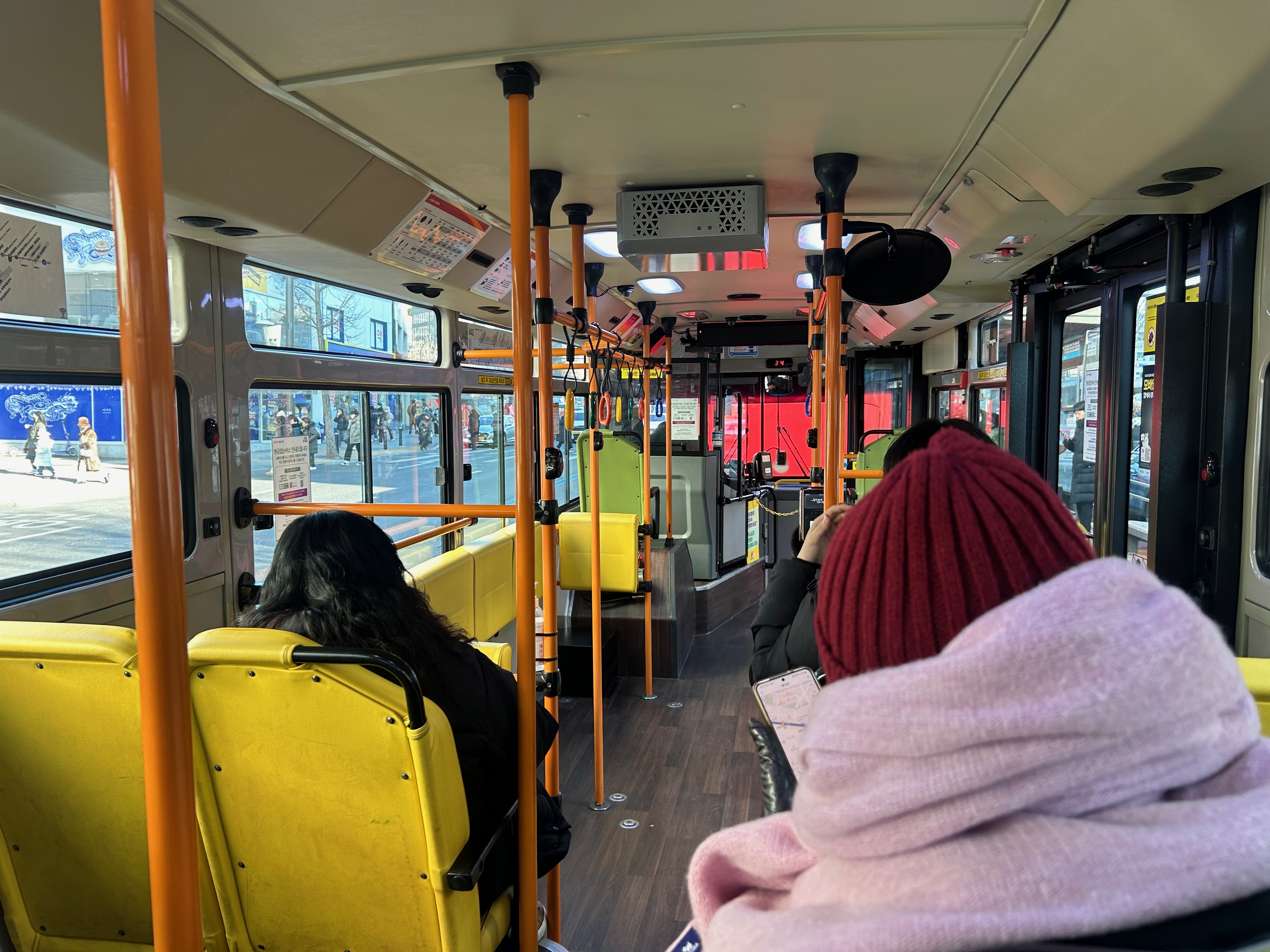
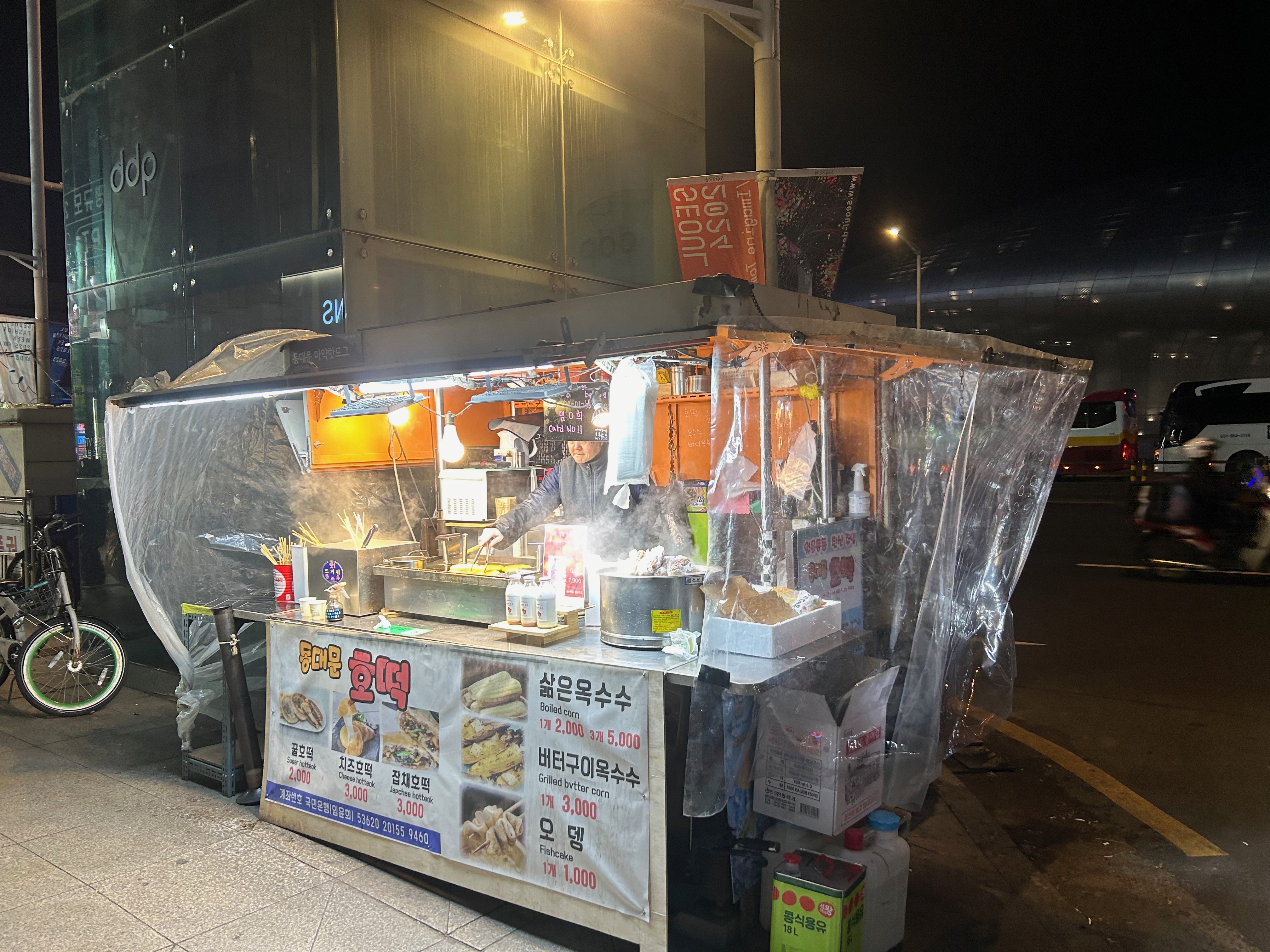 Right: There are street stalls like this everywhere.
Right: There are street stalls like this everywhere.
Museums
After meandering through the Hondae district, I decided to hit the museums.
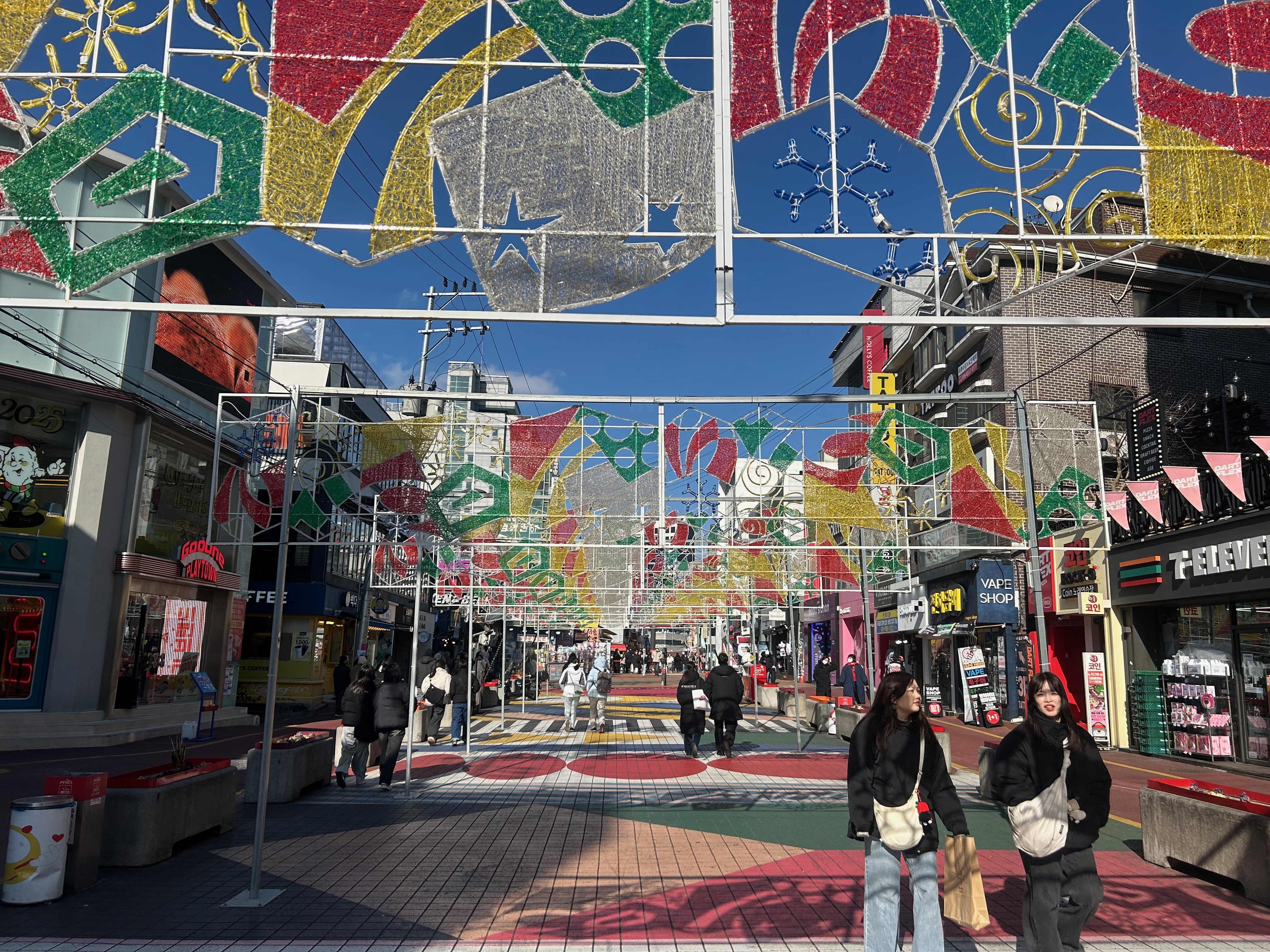
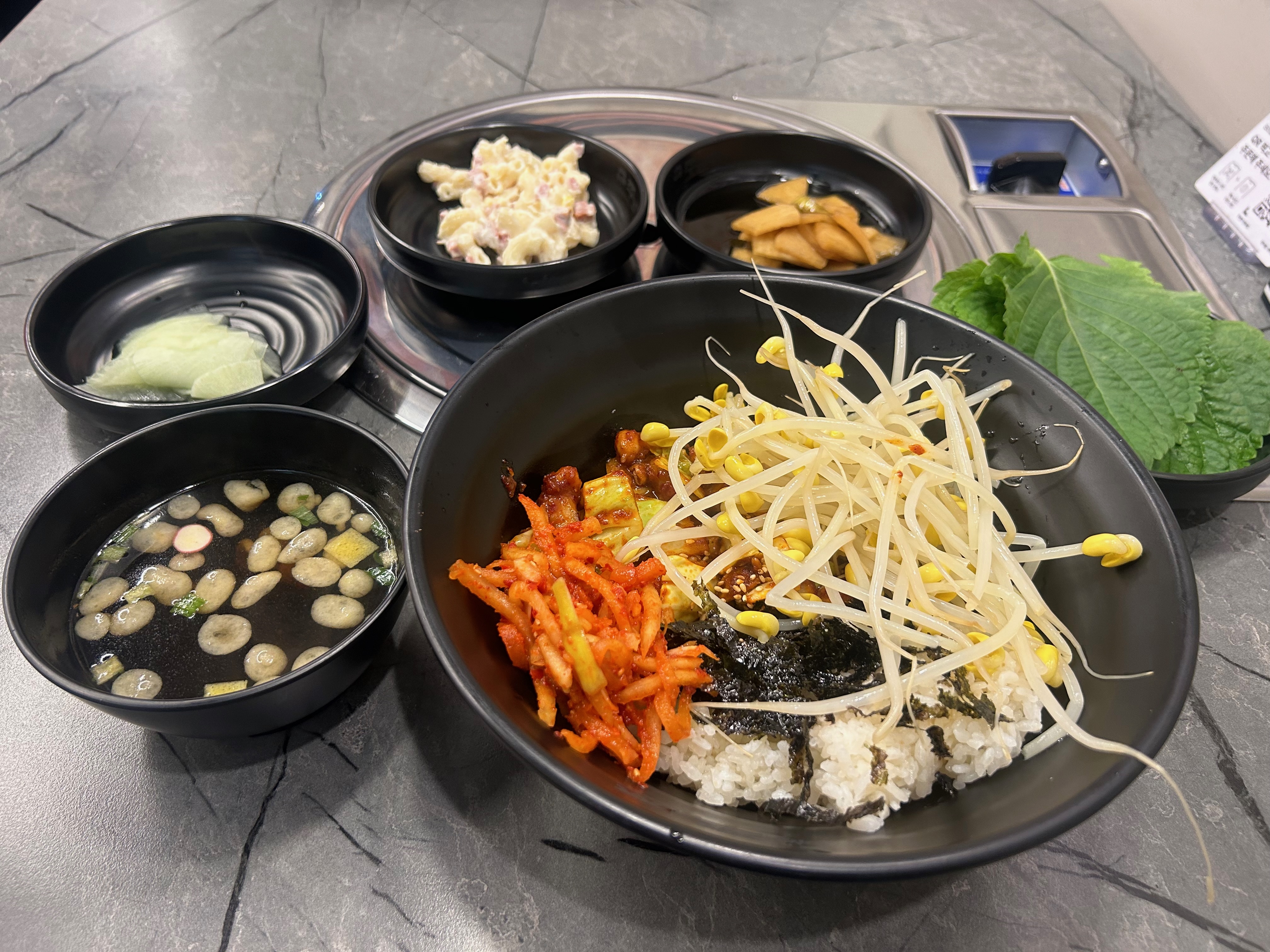 Left: District known for its youth (pretty close to a few universities including Yonsei); Right: Bimbibap
Left: District known for its youth (pretty close to a few universities including Yonsei); Right: Bimbibap
Seoul museum was first on the list. The museum is celebrating the Seoul 1988 Olympics, and the upcoming 2036 one.
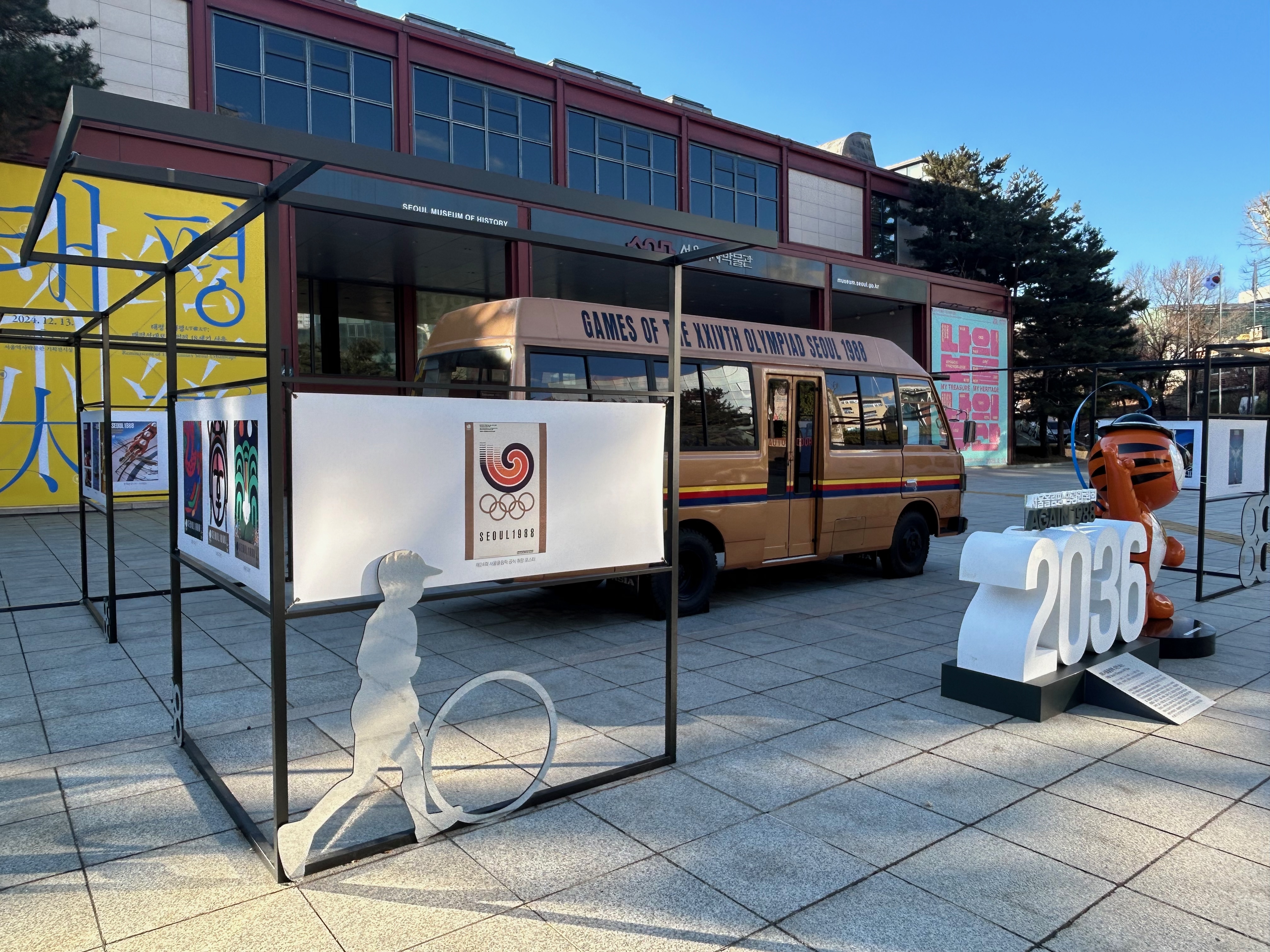
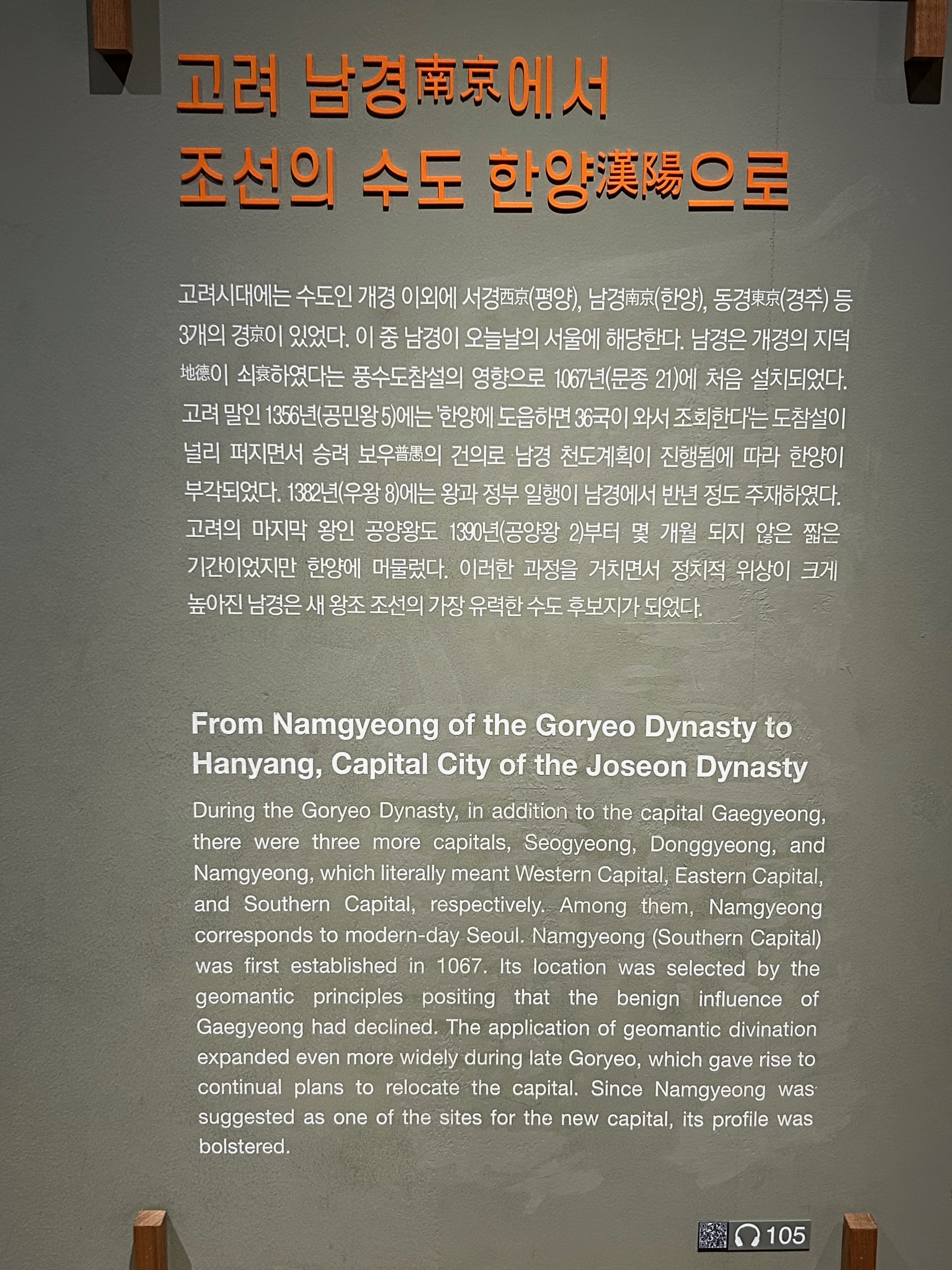
I learned about how the Joseong dynasty’s first emperor moved the country’s capital to HanYang (modern day Seoul) because it was good FengShui (Geomancy).
The museum also featured how Seoul transformed from Joseong era’s Hanoks, to modern buildings after Korea was forced to open its ports by the USA and others.
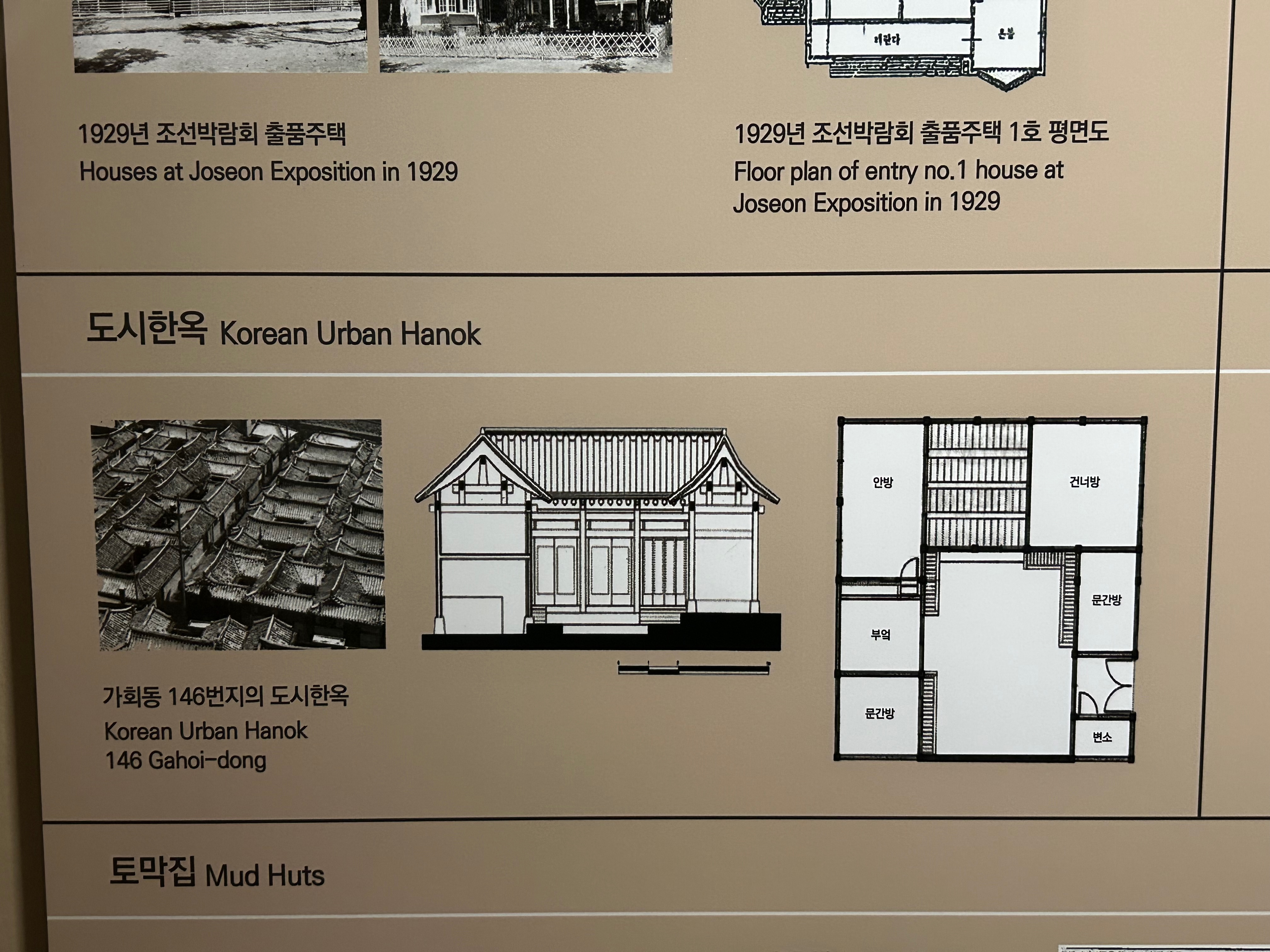
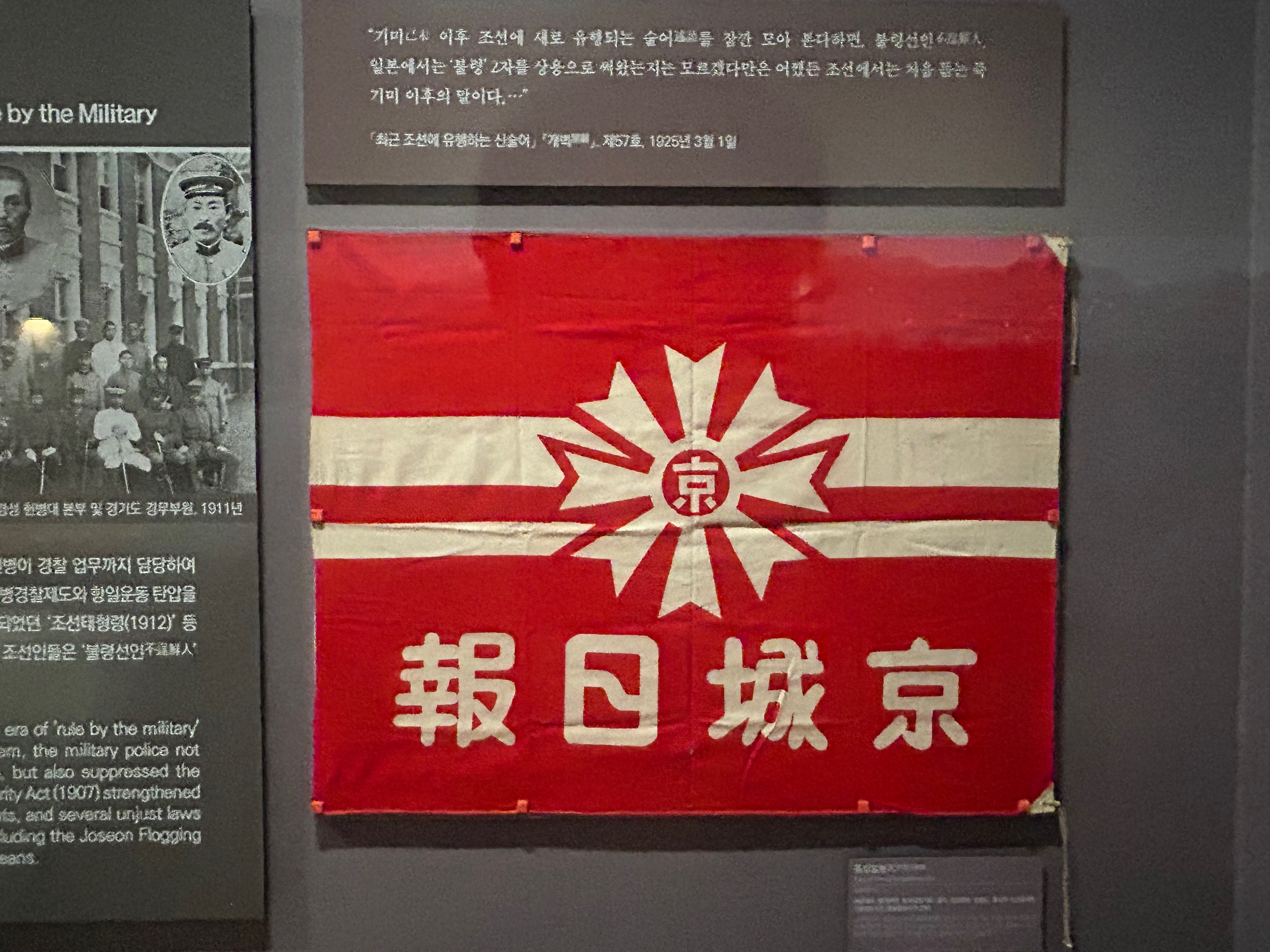
It was super interesting to learn about the Japanese occupation, as well as the slum to industrialized urban area transformation, especially after the late 1960s.
Before leaving Seoul, I also got a chance to visit the War Museum.
Being stuck in the between of China and Japan, Korea always had difficulties with the two being on opposite sides.
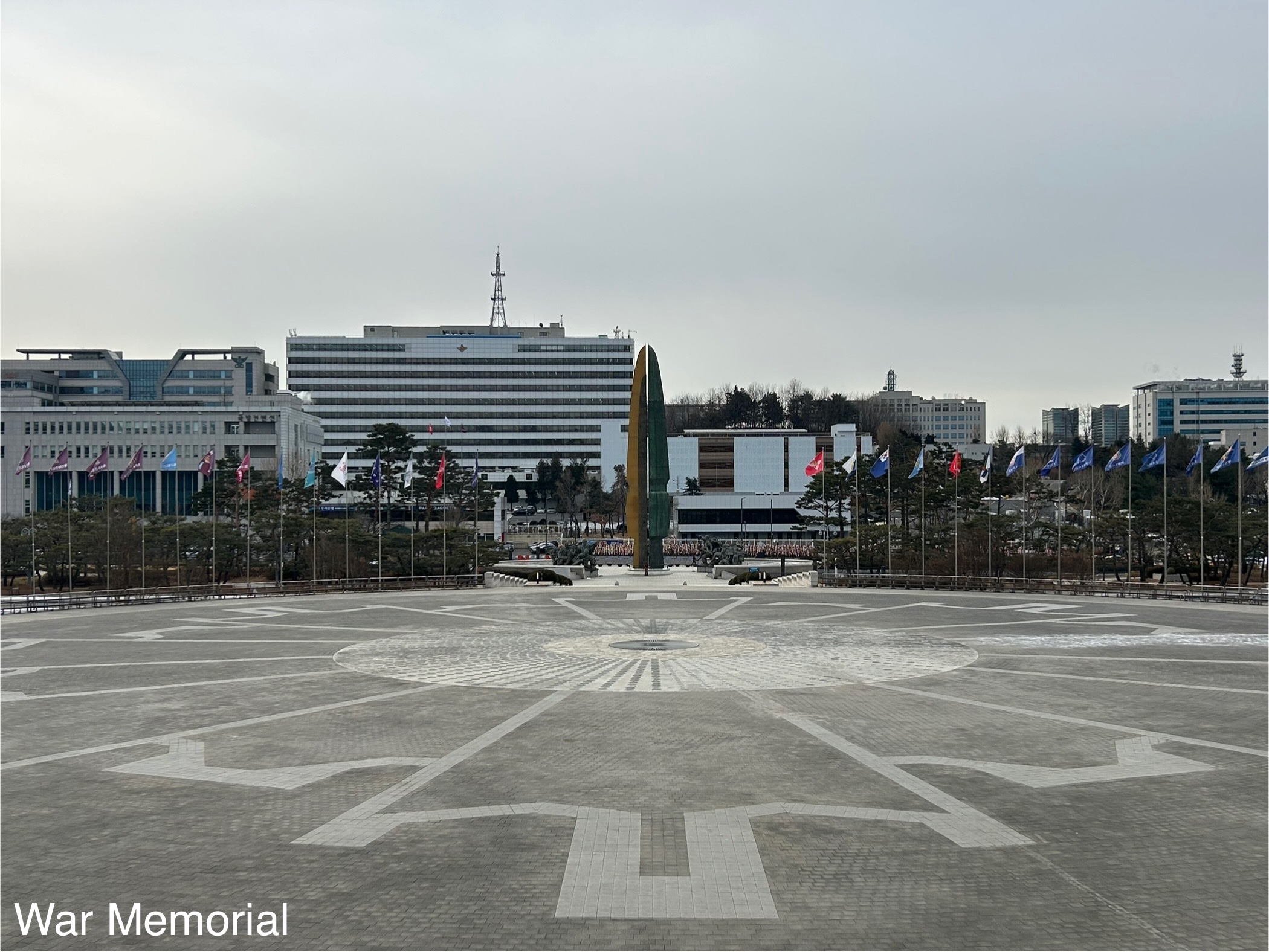
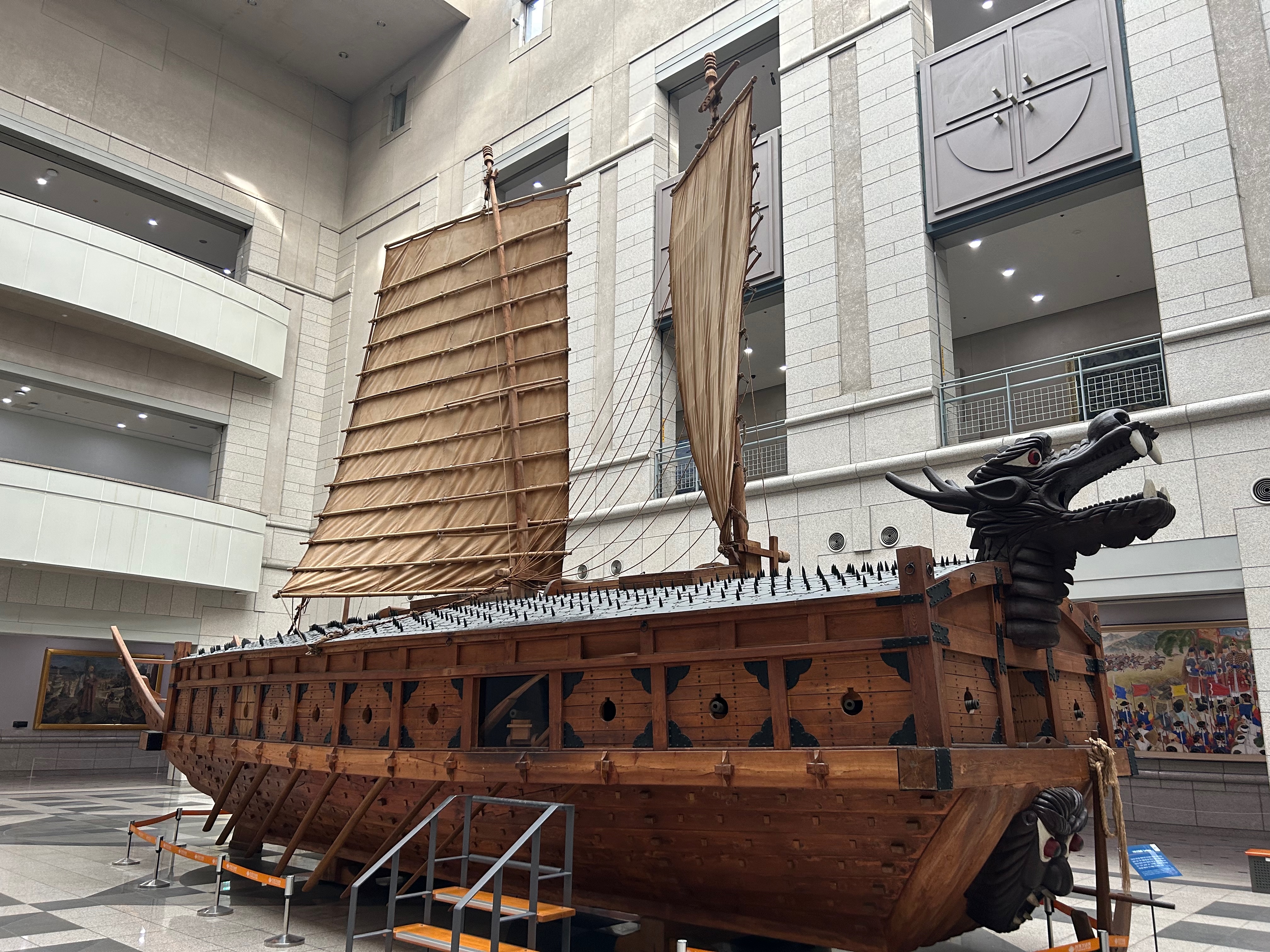
It was really interesting to learn that Qing dynasty originated from Manchuria and was called Jin. There were conflicts between the Jin and Joseong.
The museum goes in depth about the Korean civil war from the South’s perspective.
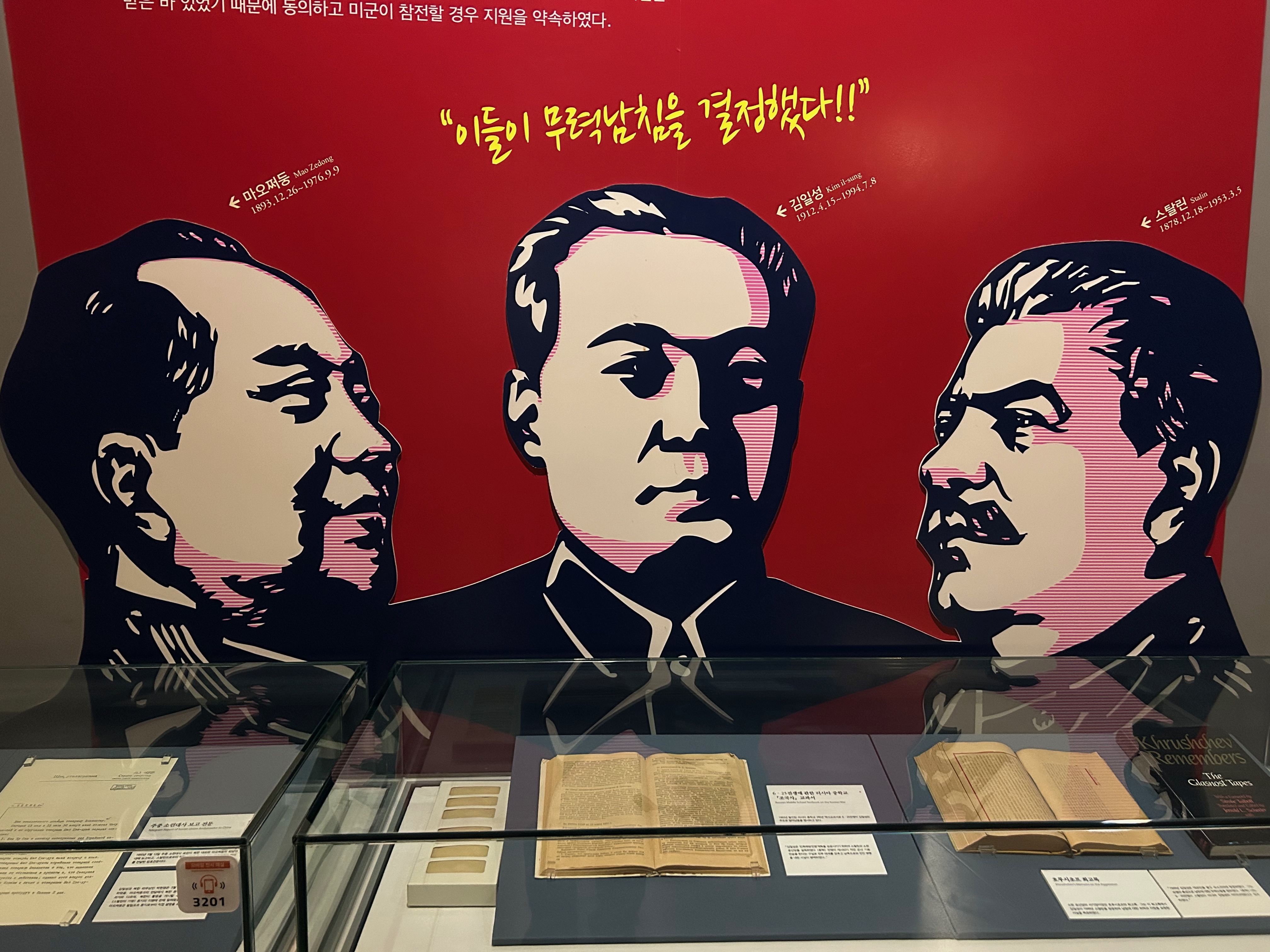
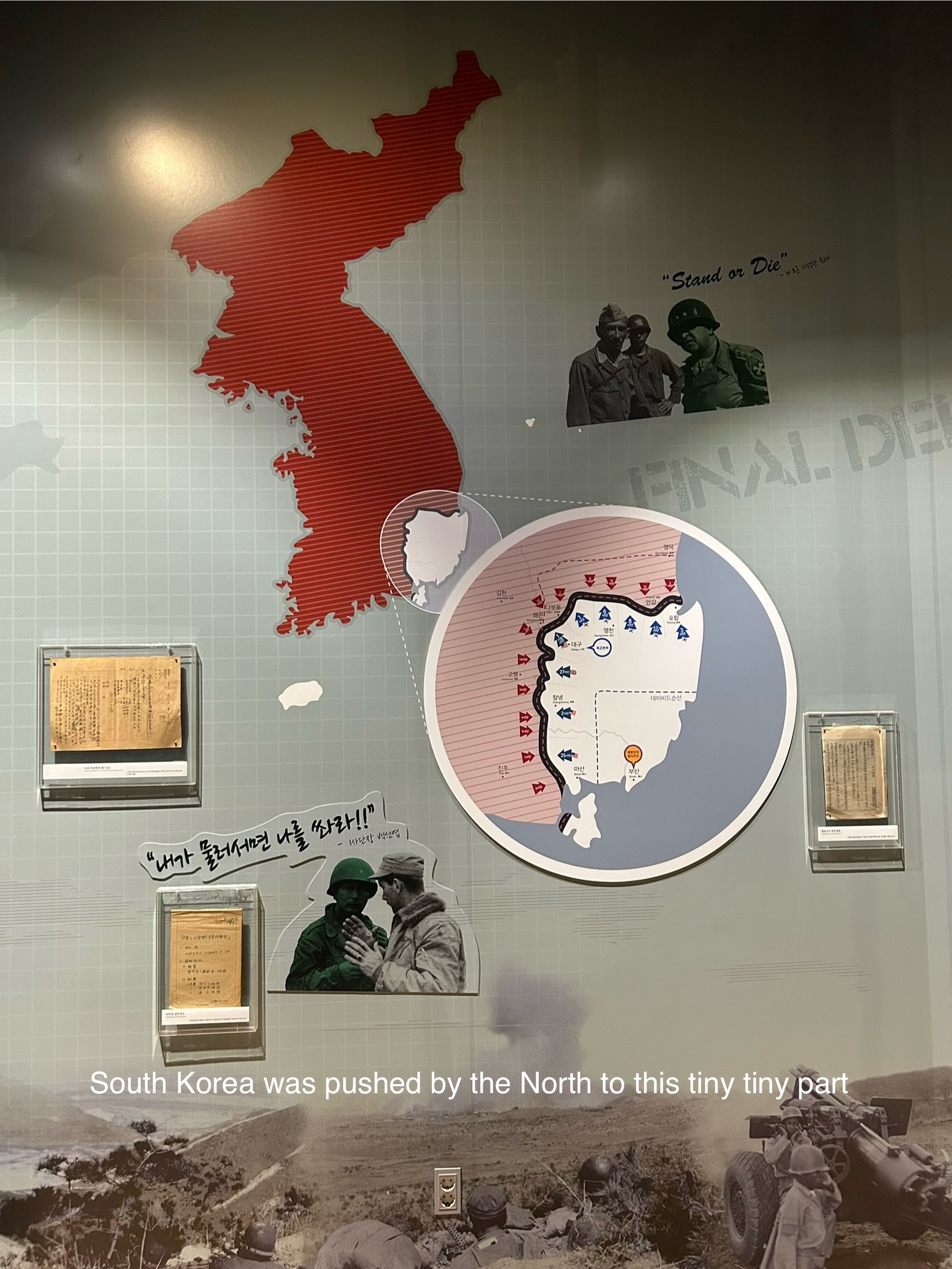
Because Korea was so heavily reliant on USA, a big portion of the museum was also dedicated to how Americans and the UN helped defend South Korea.

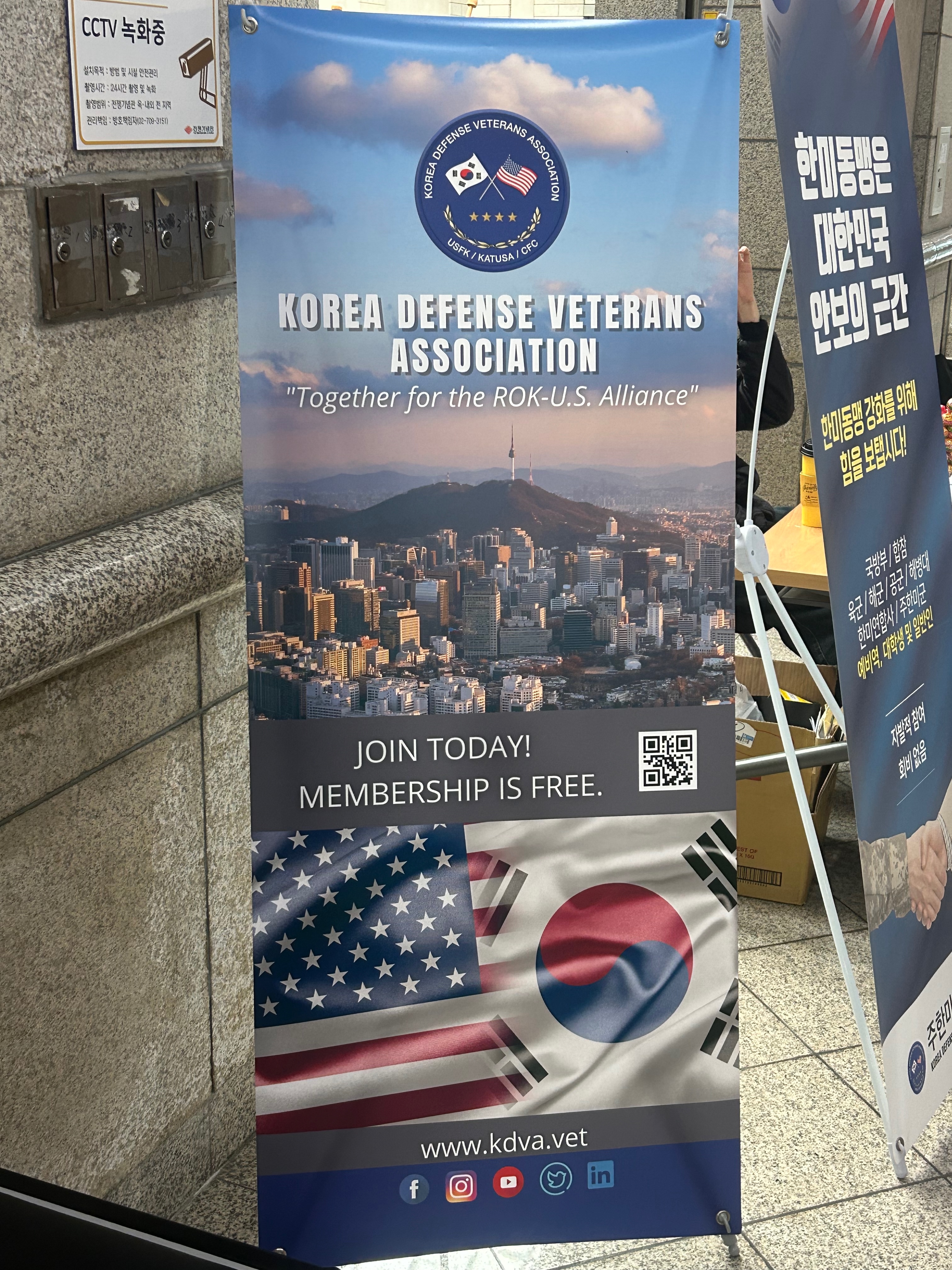 Left: The Taichi flag used in the youth uprising
Left: The Taichi flag used in the youth uprising
Despite vilifying the North, it was a great educational piece about what transpired in the Asia continent in the 20th century that shaped the modern geo politics.
South Korea is beautiful. There are so many areas like Jeju, Busan and old cities that I hope to visit. Here’s to future visits!
[Receive future updates]